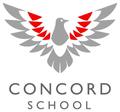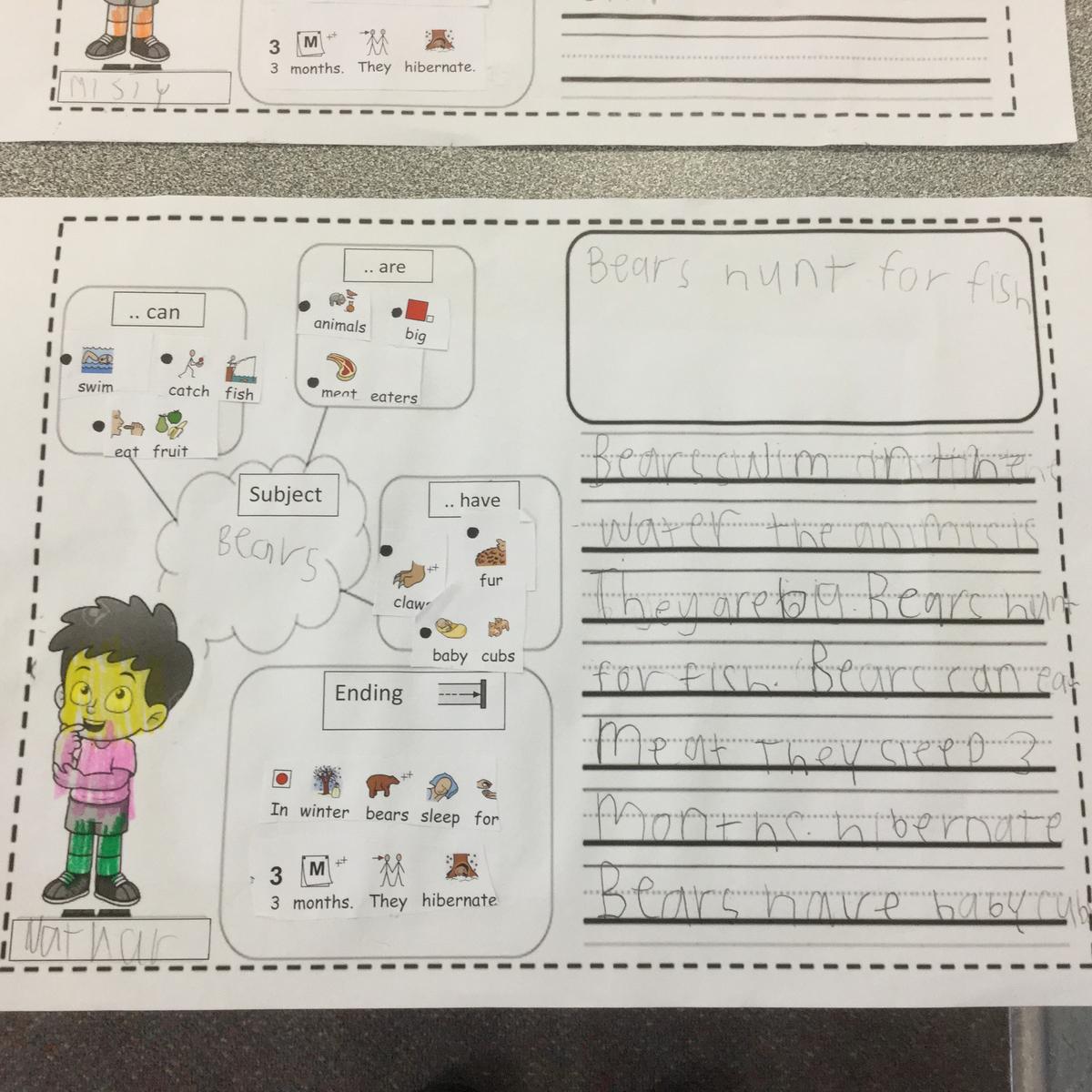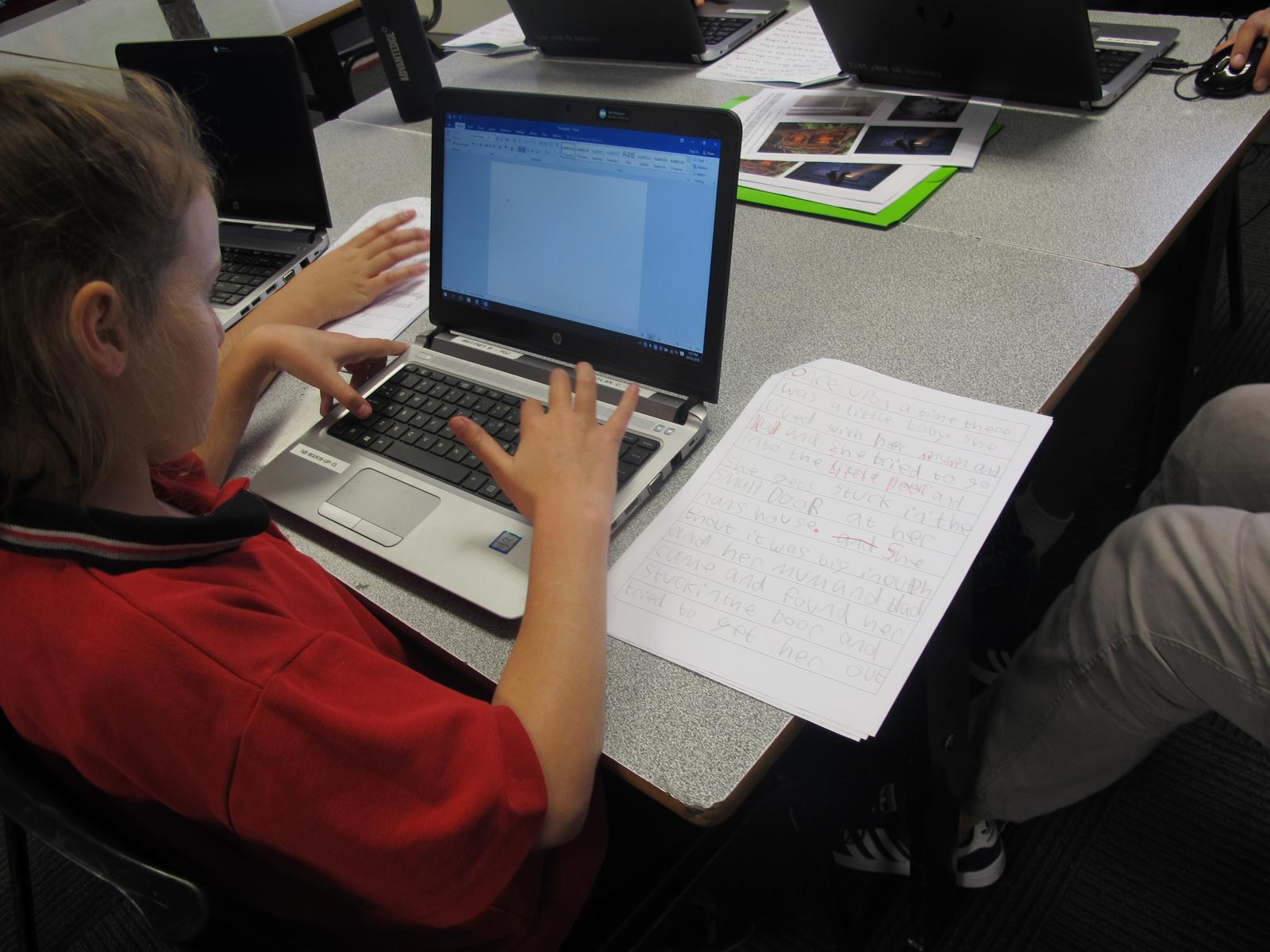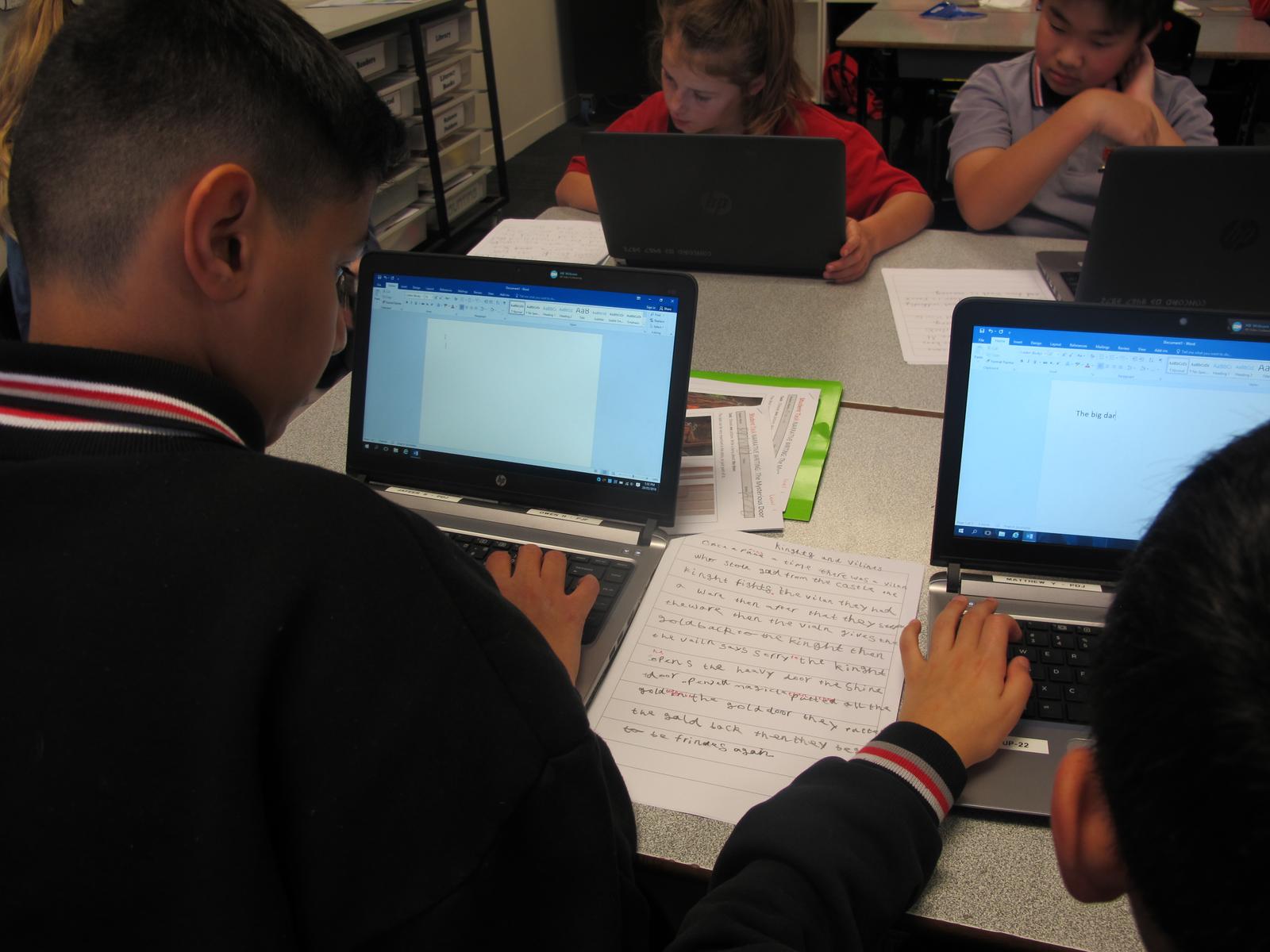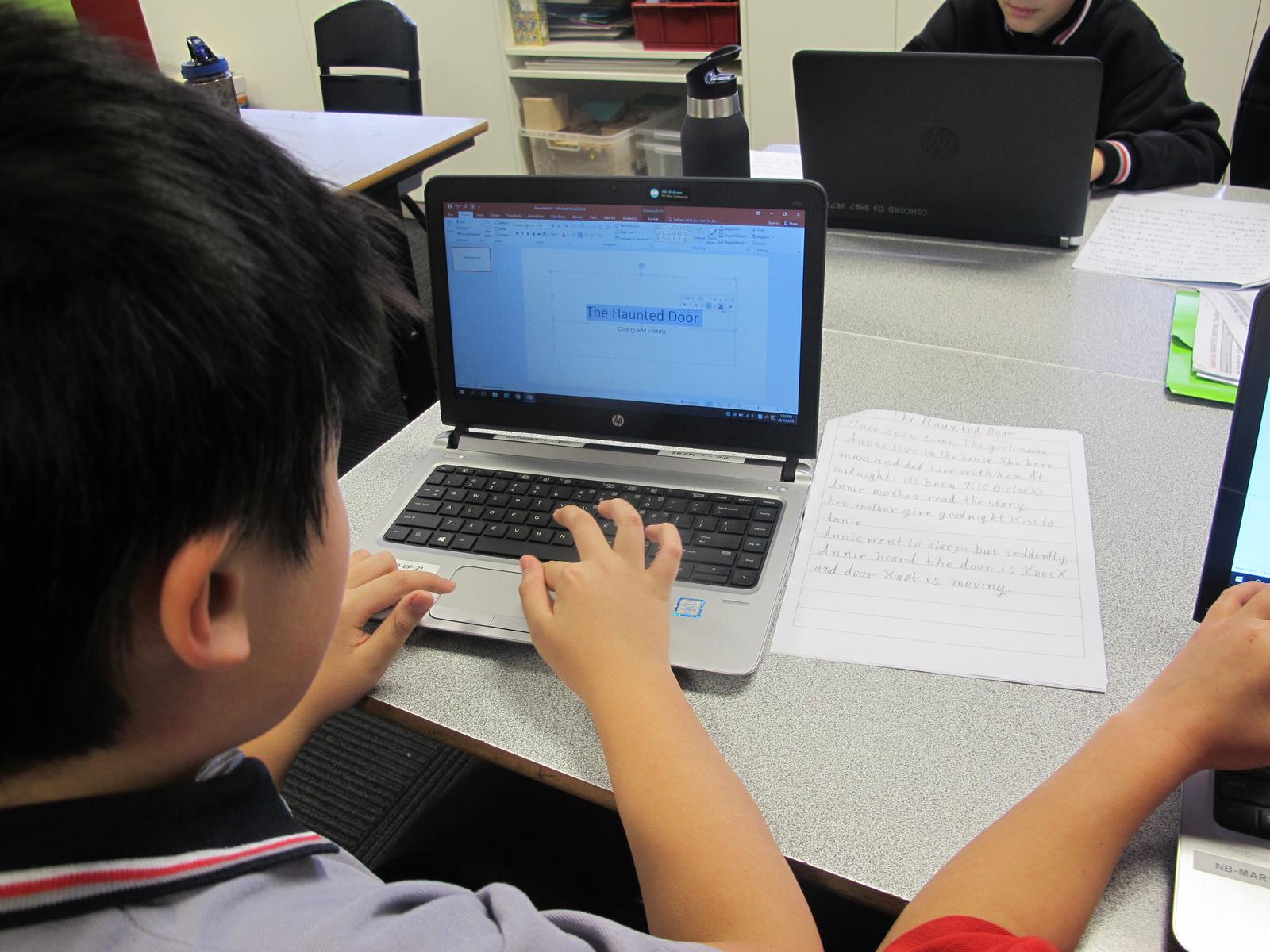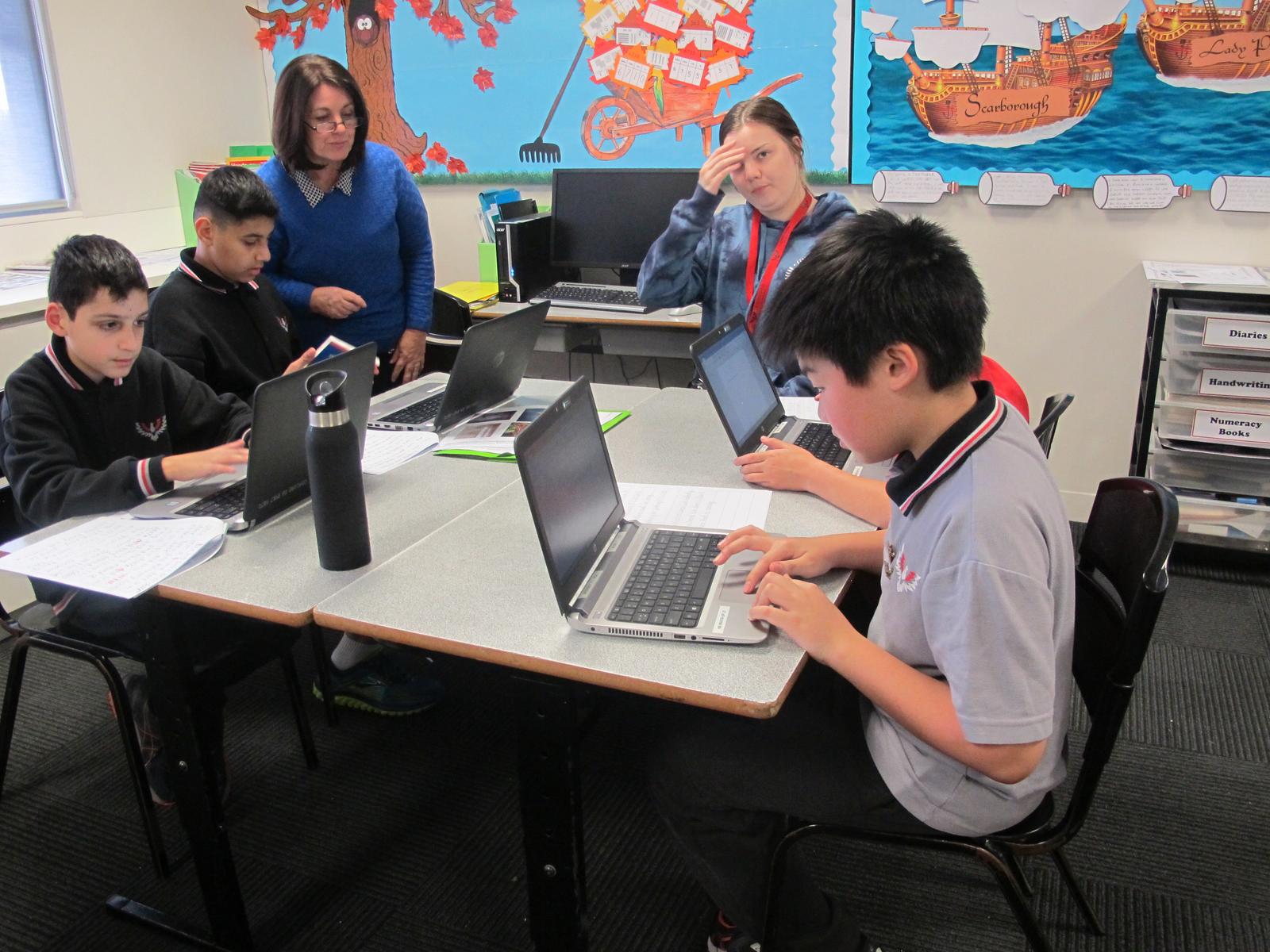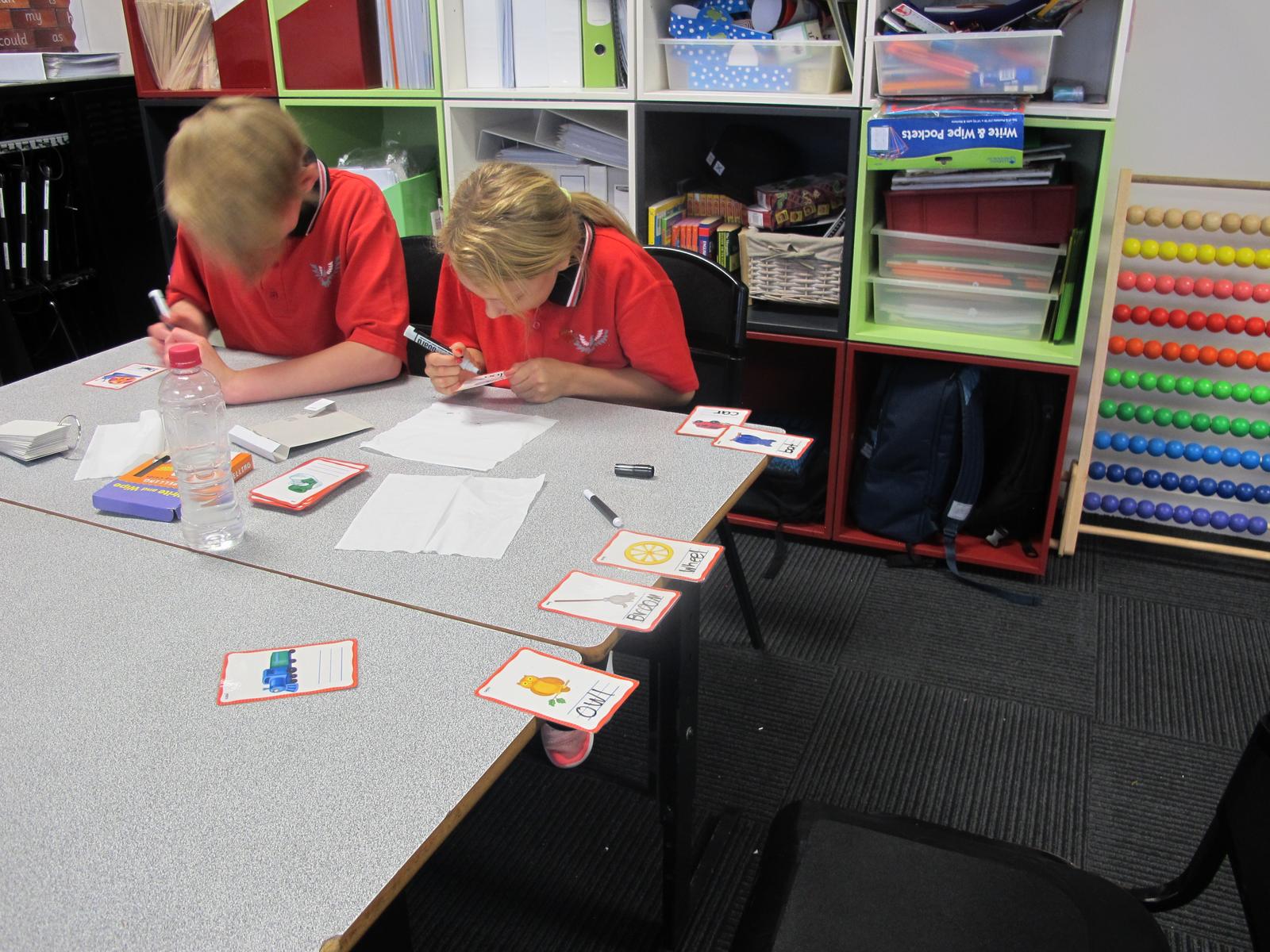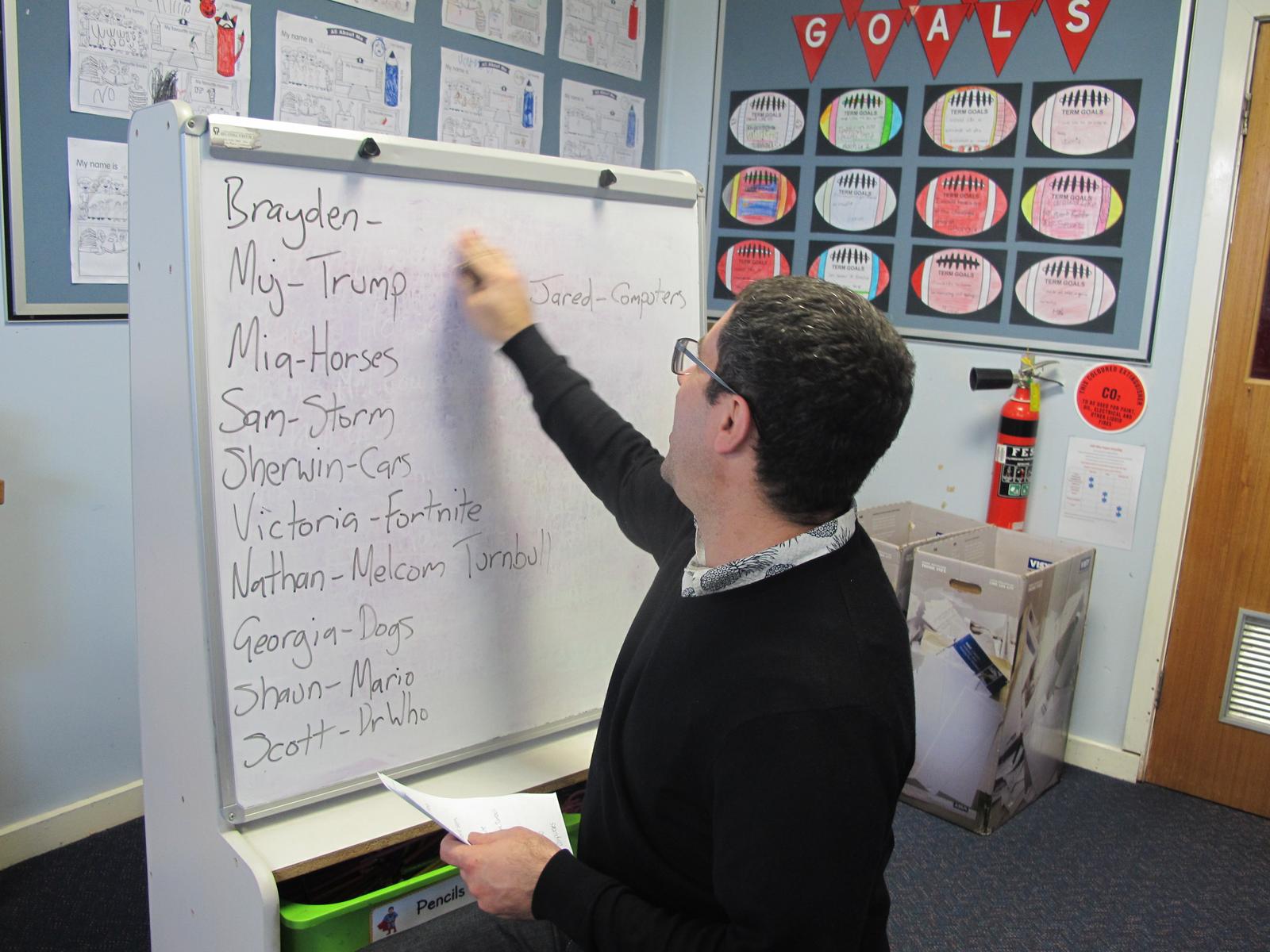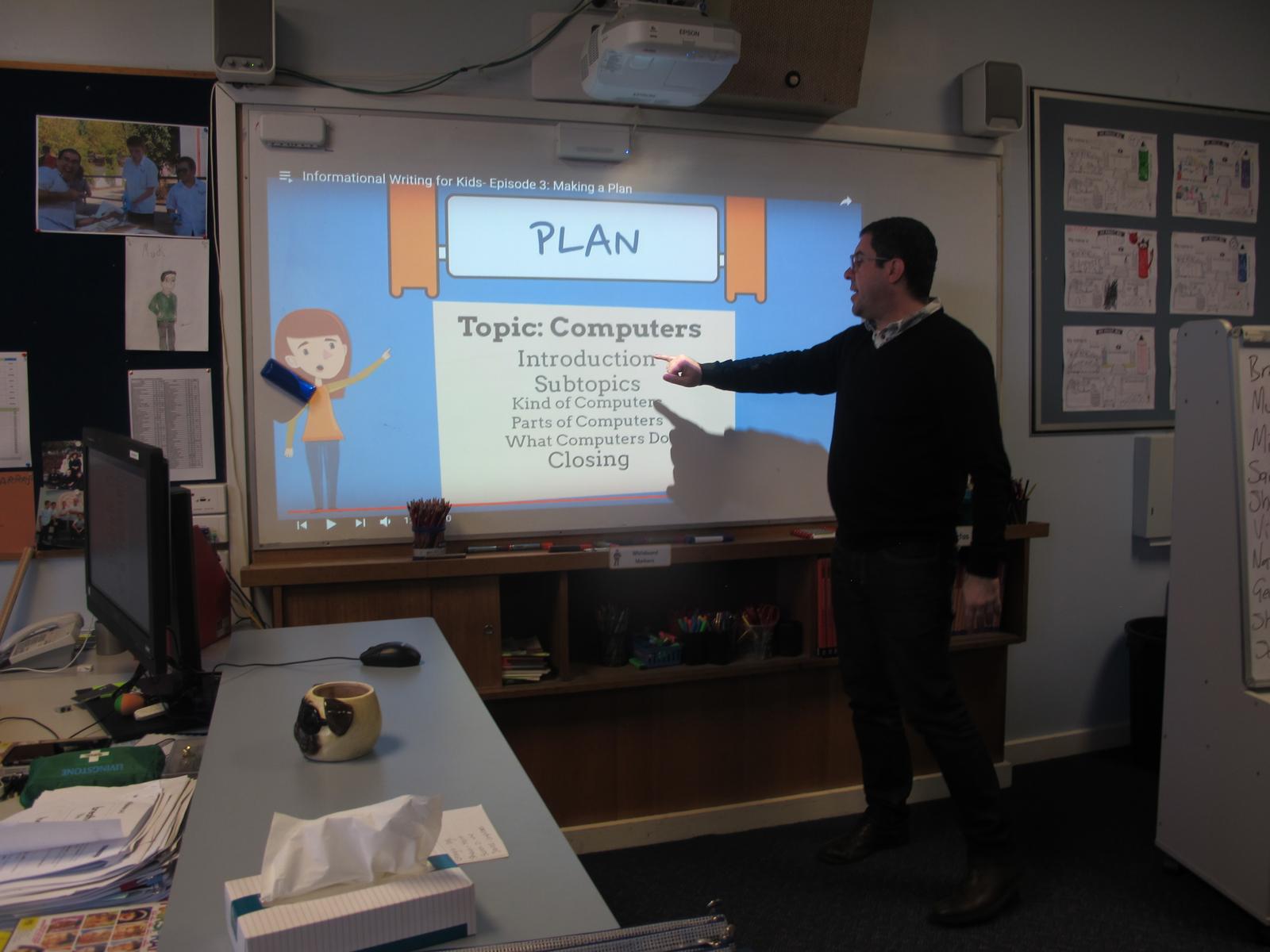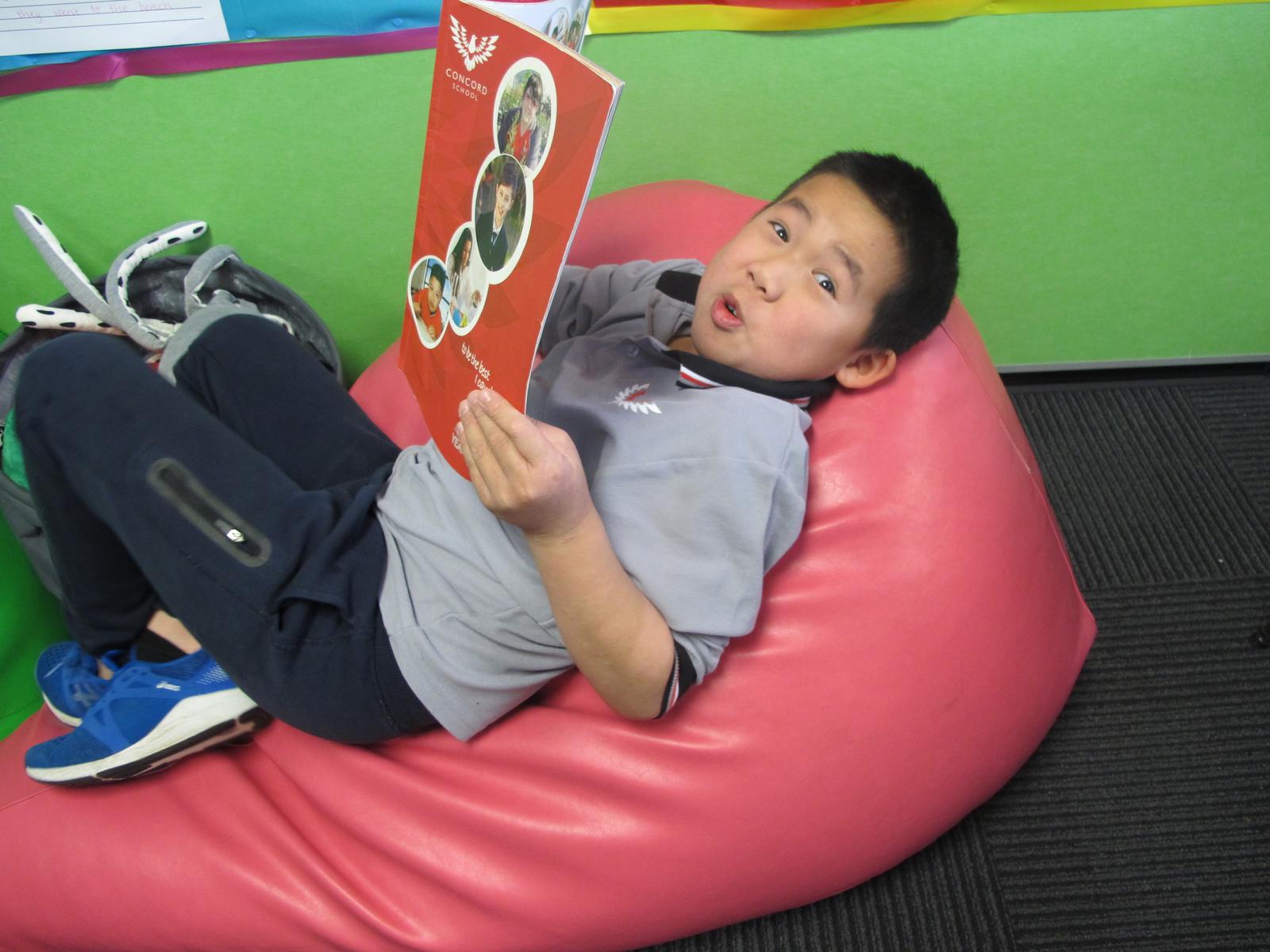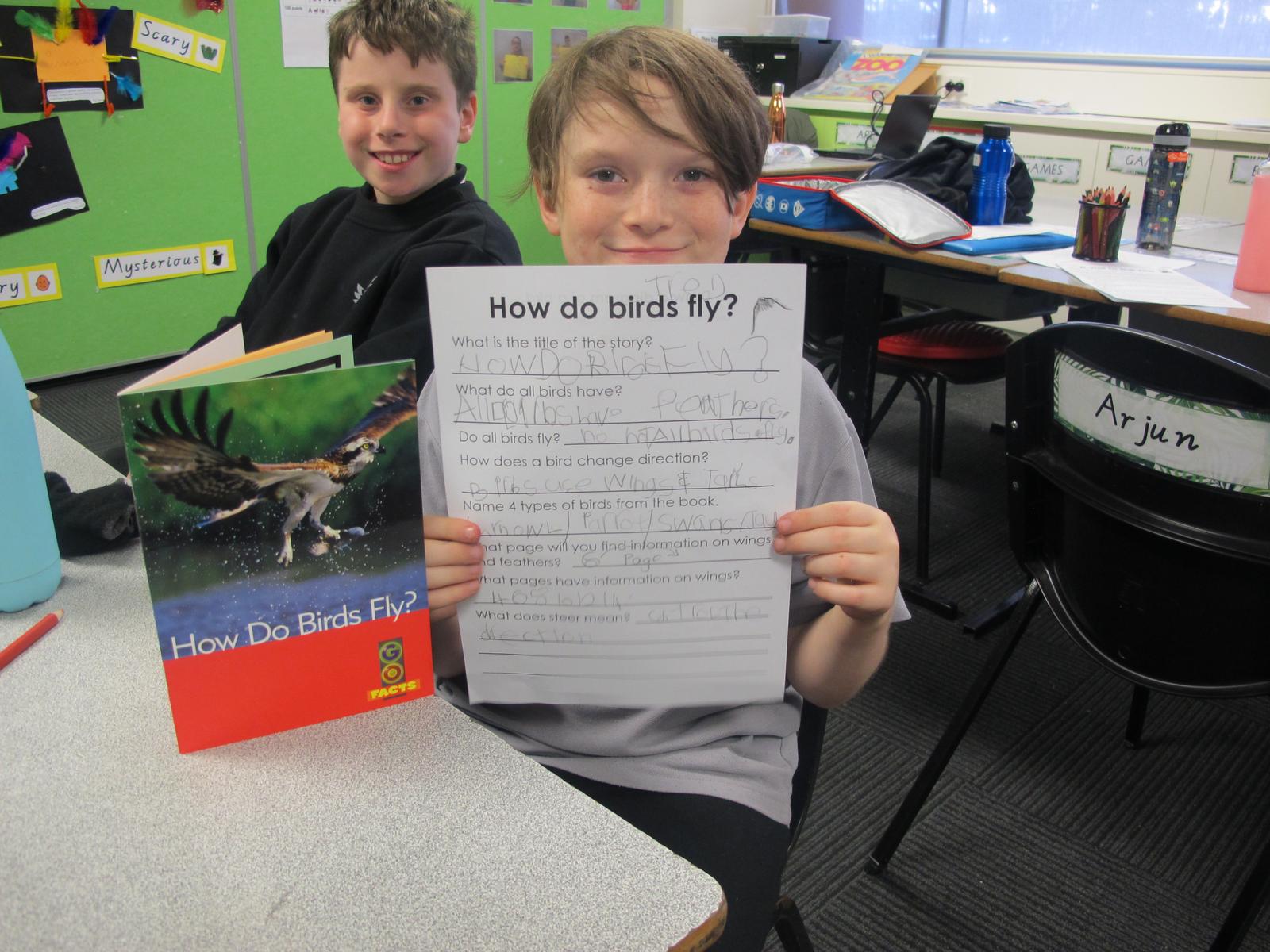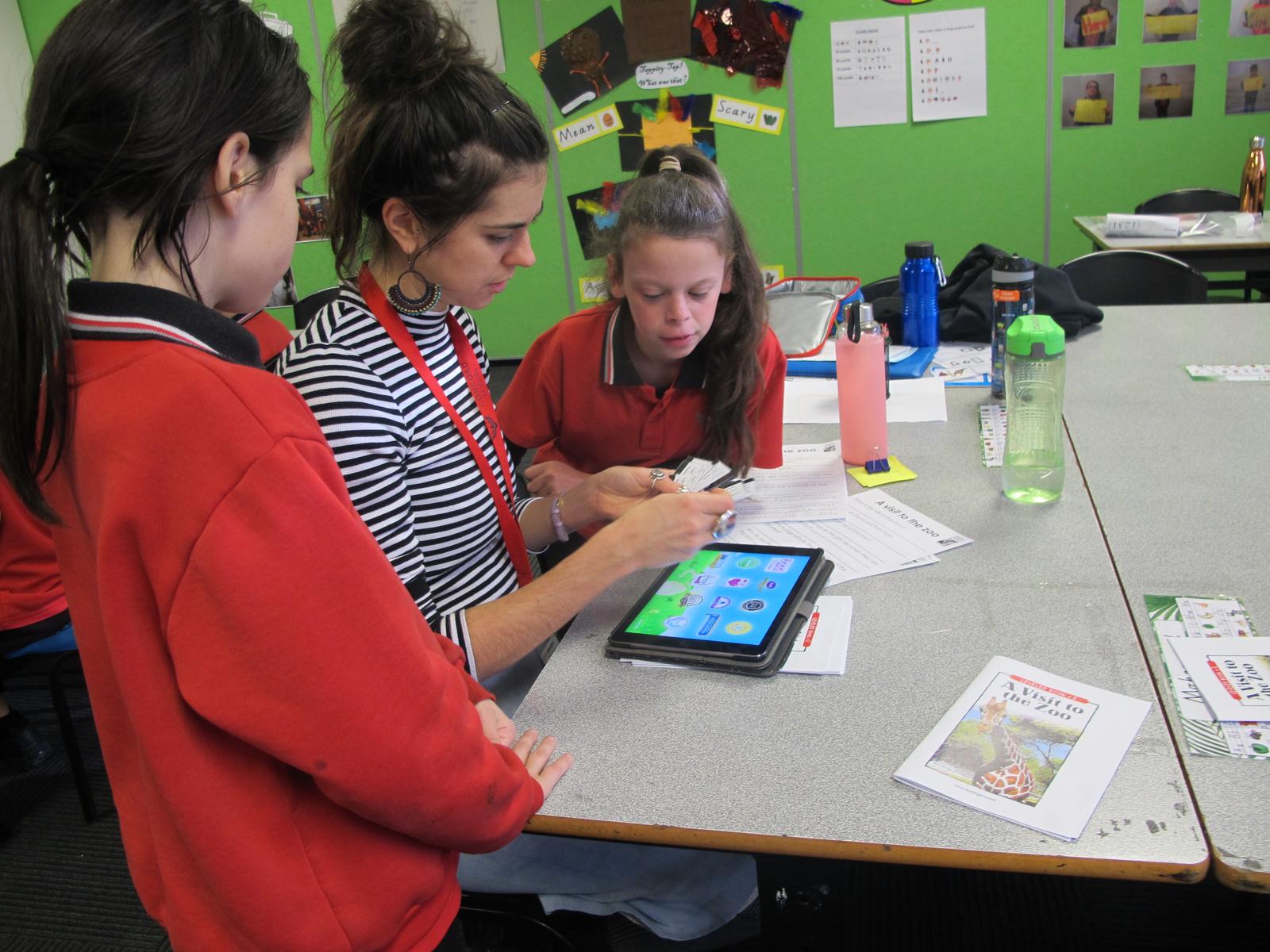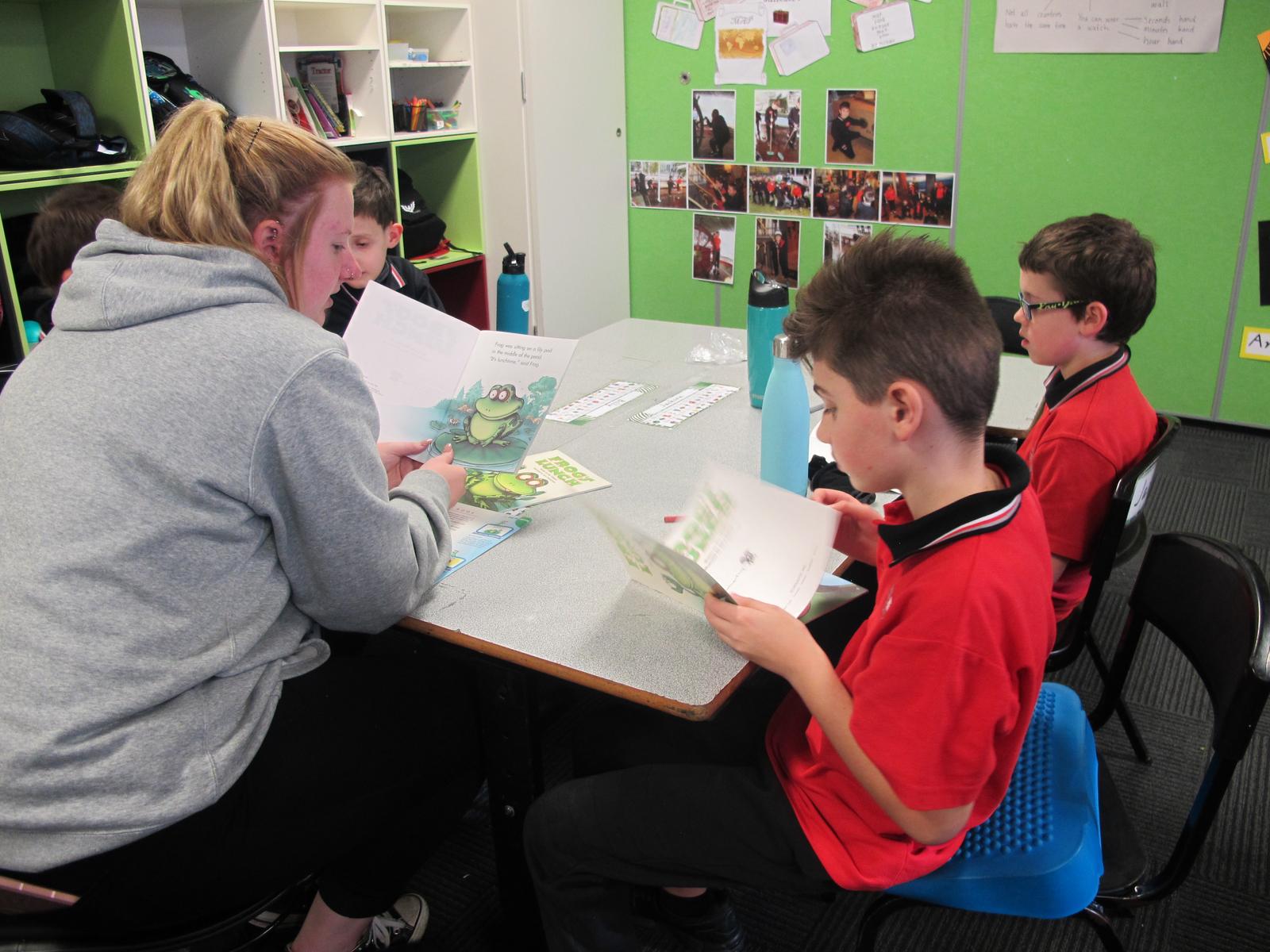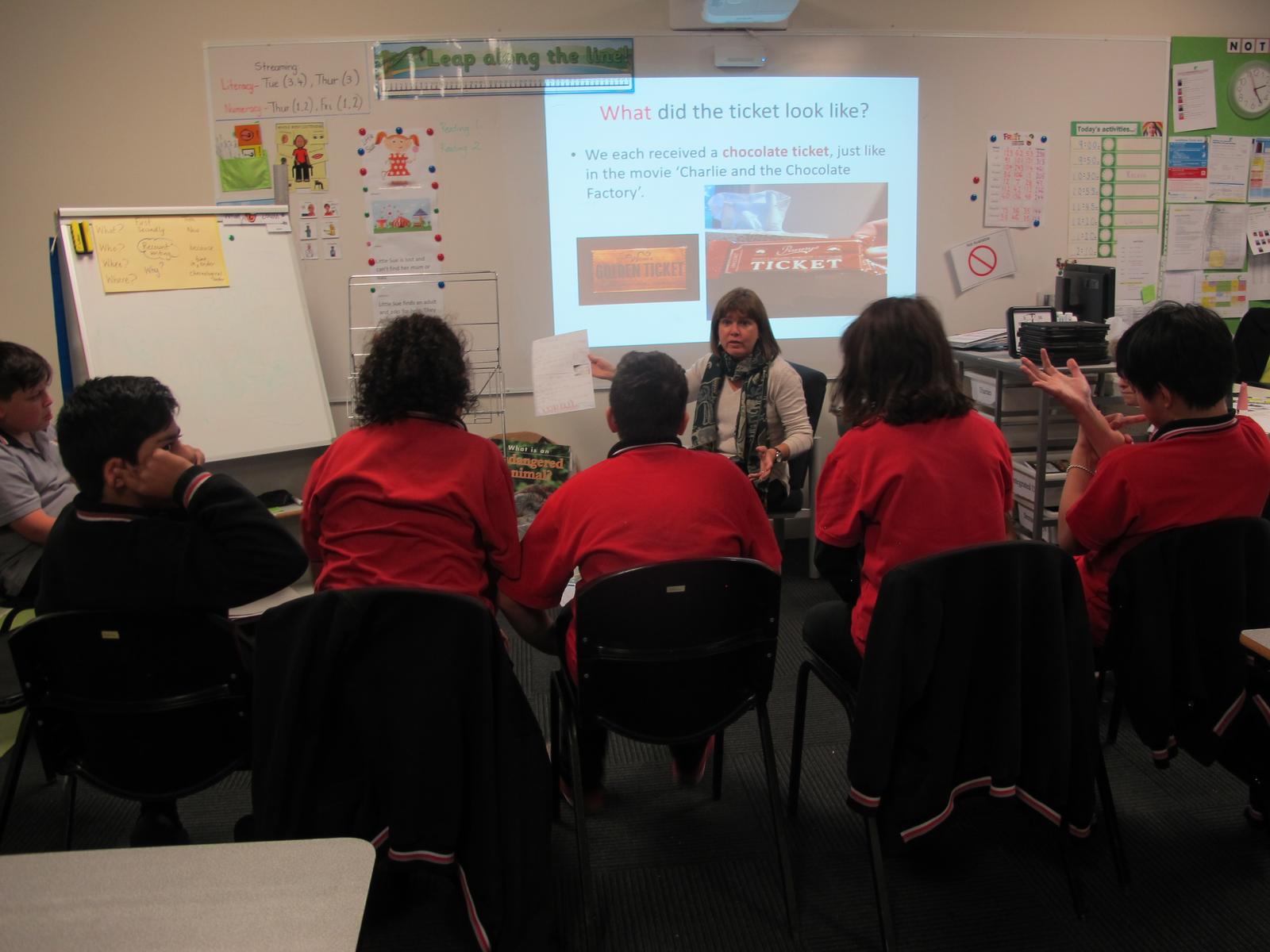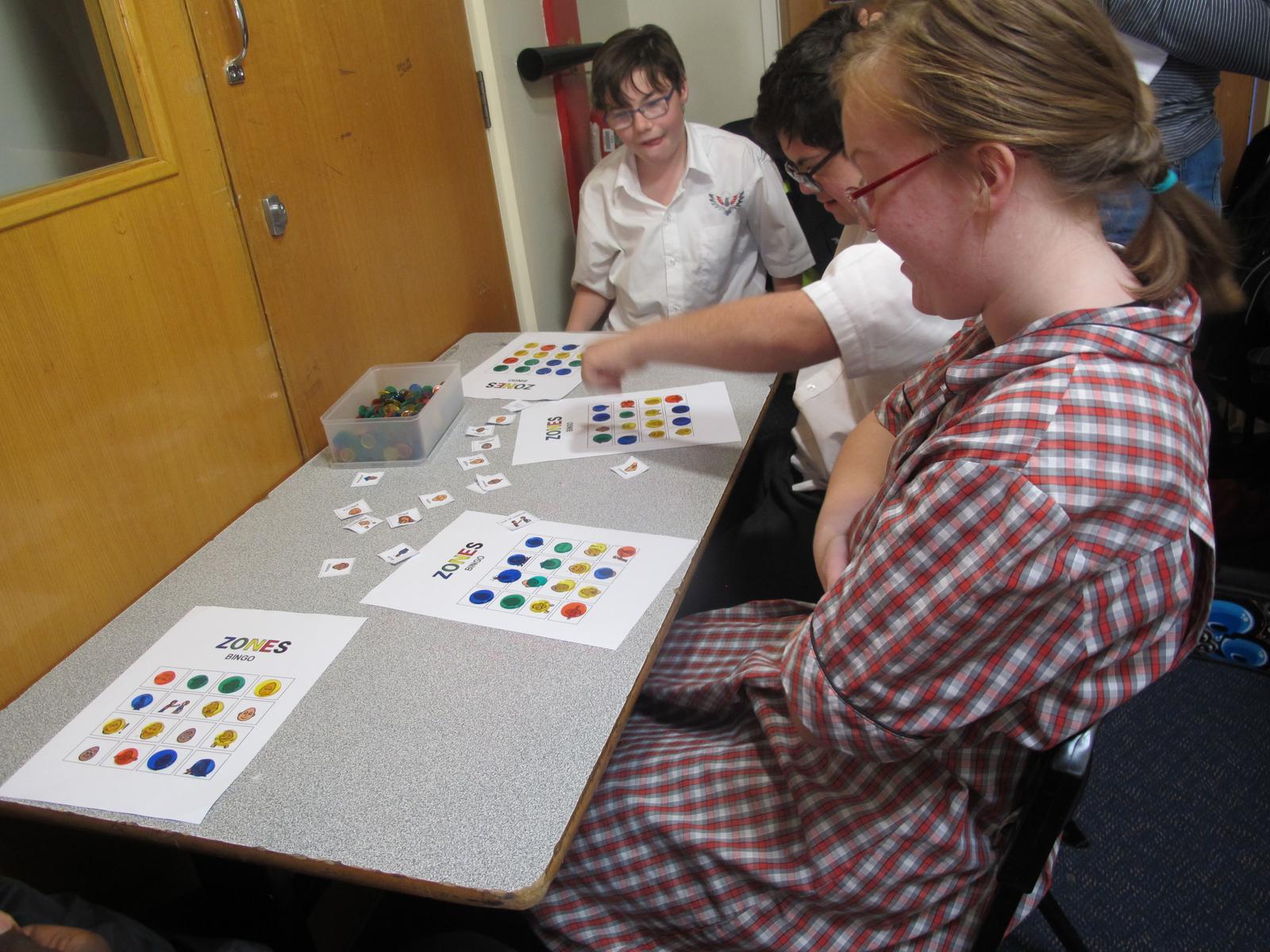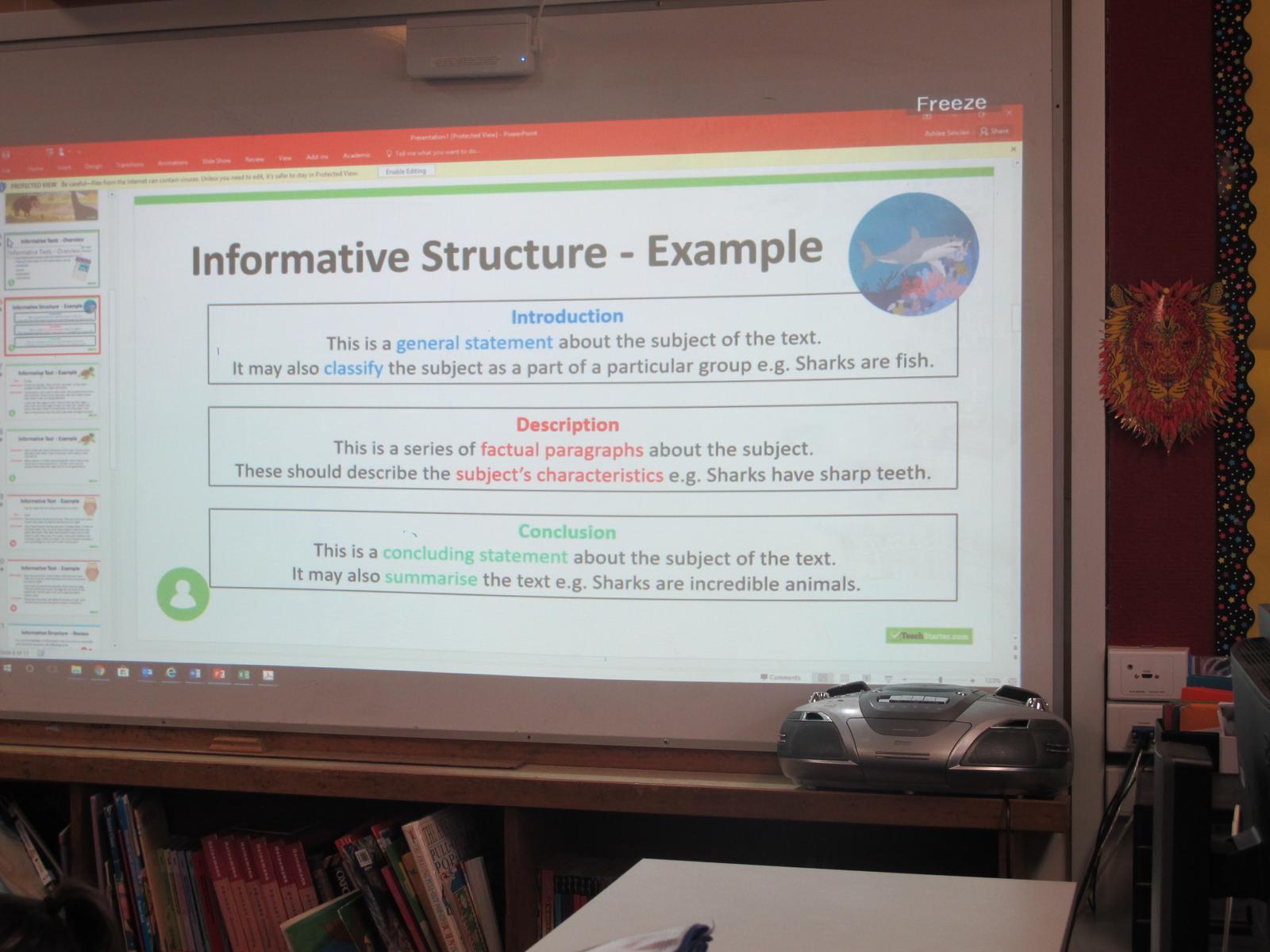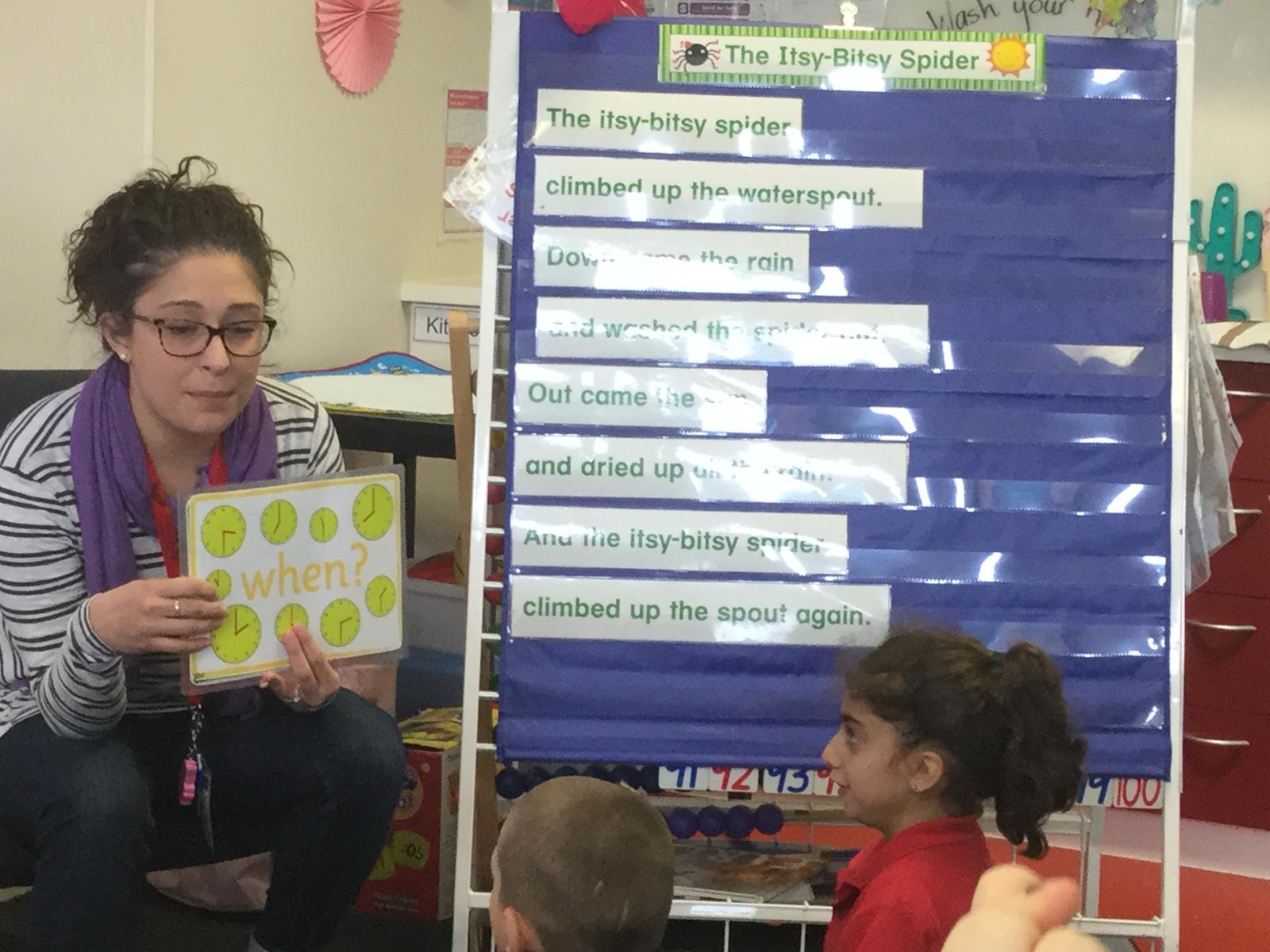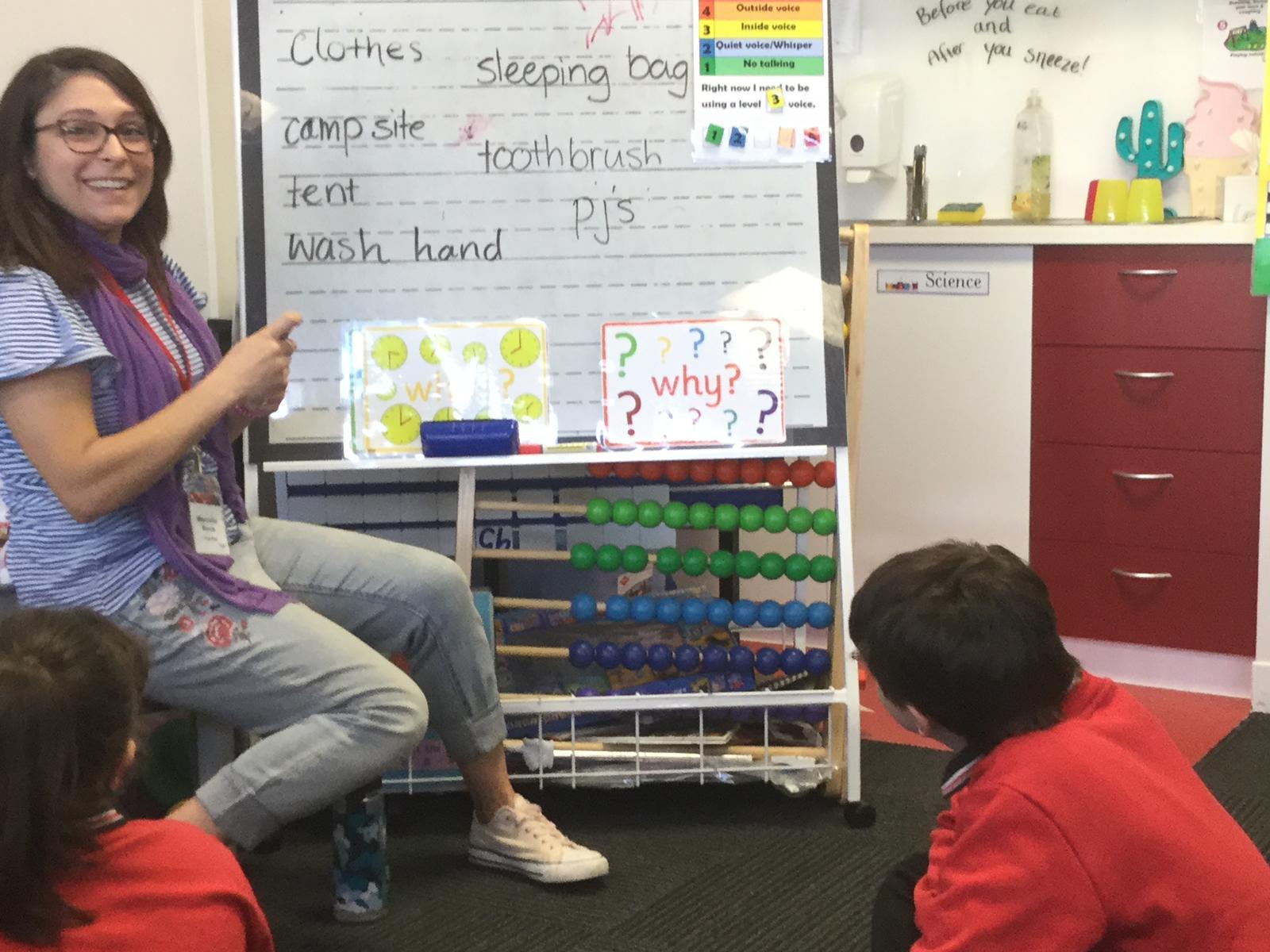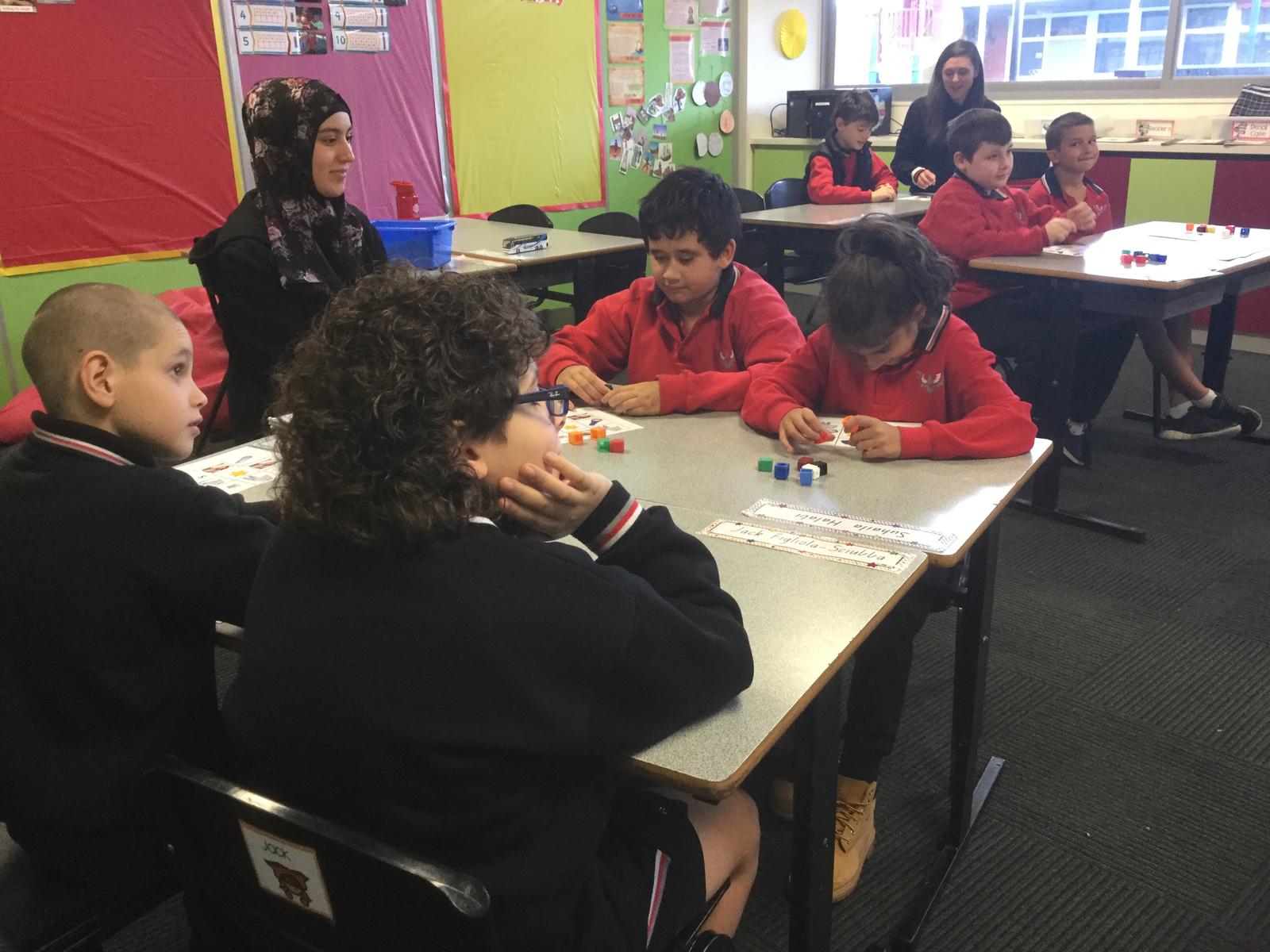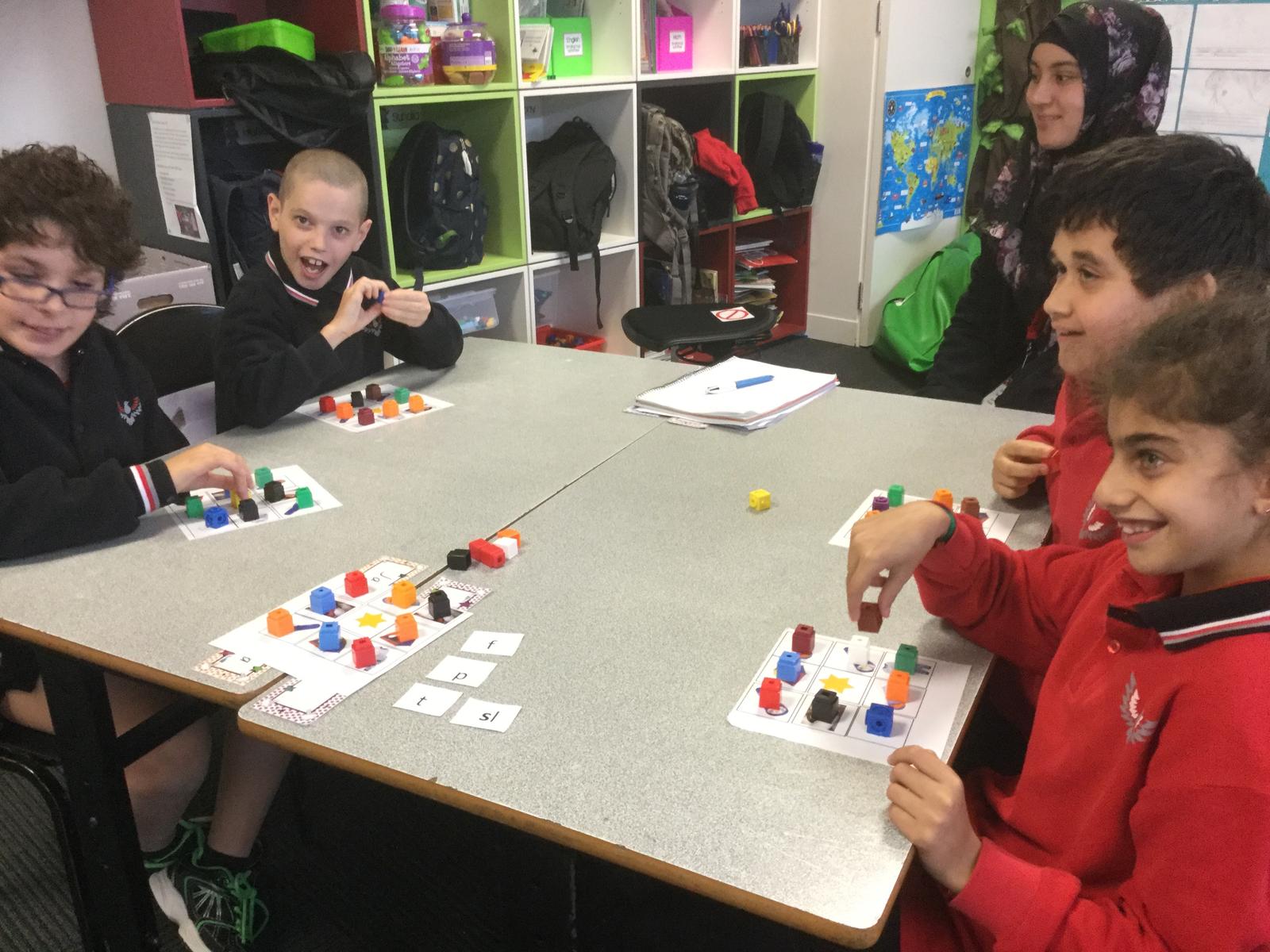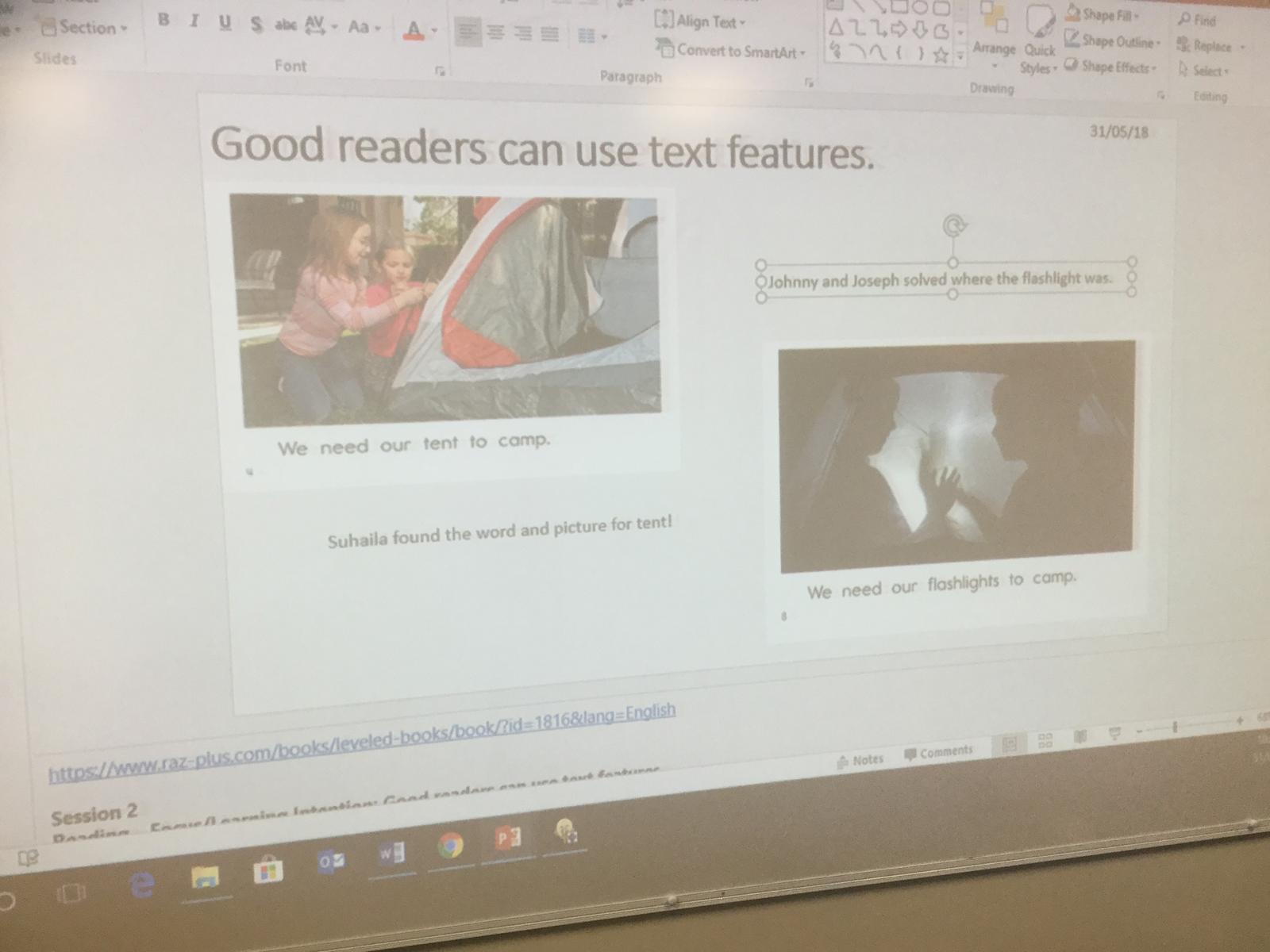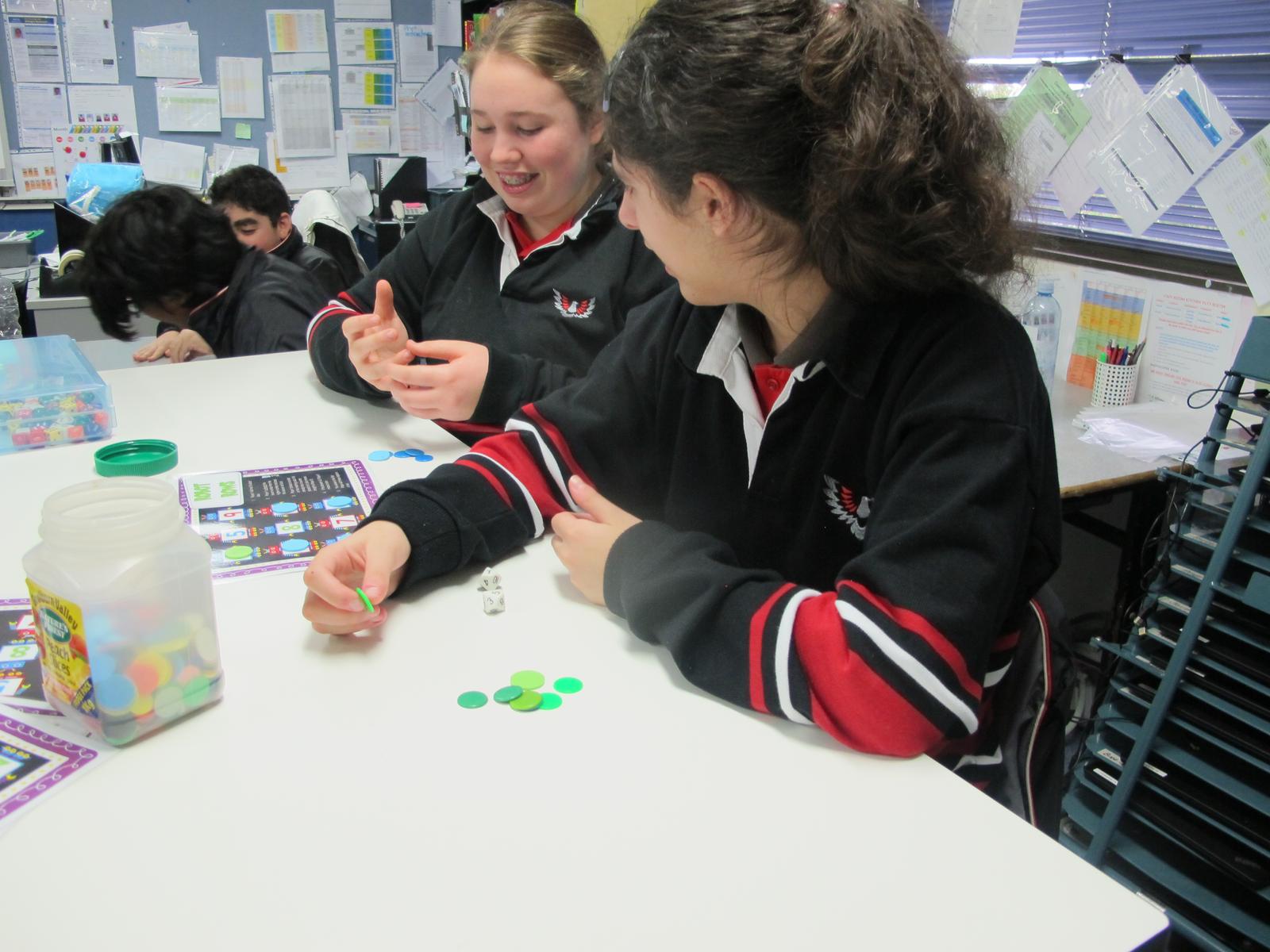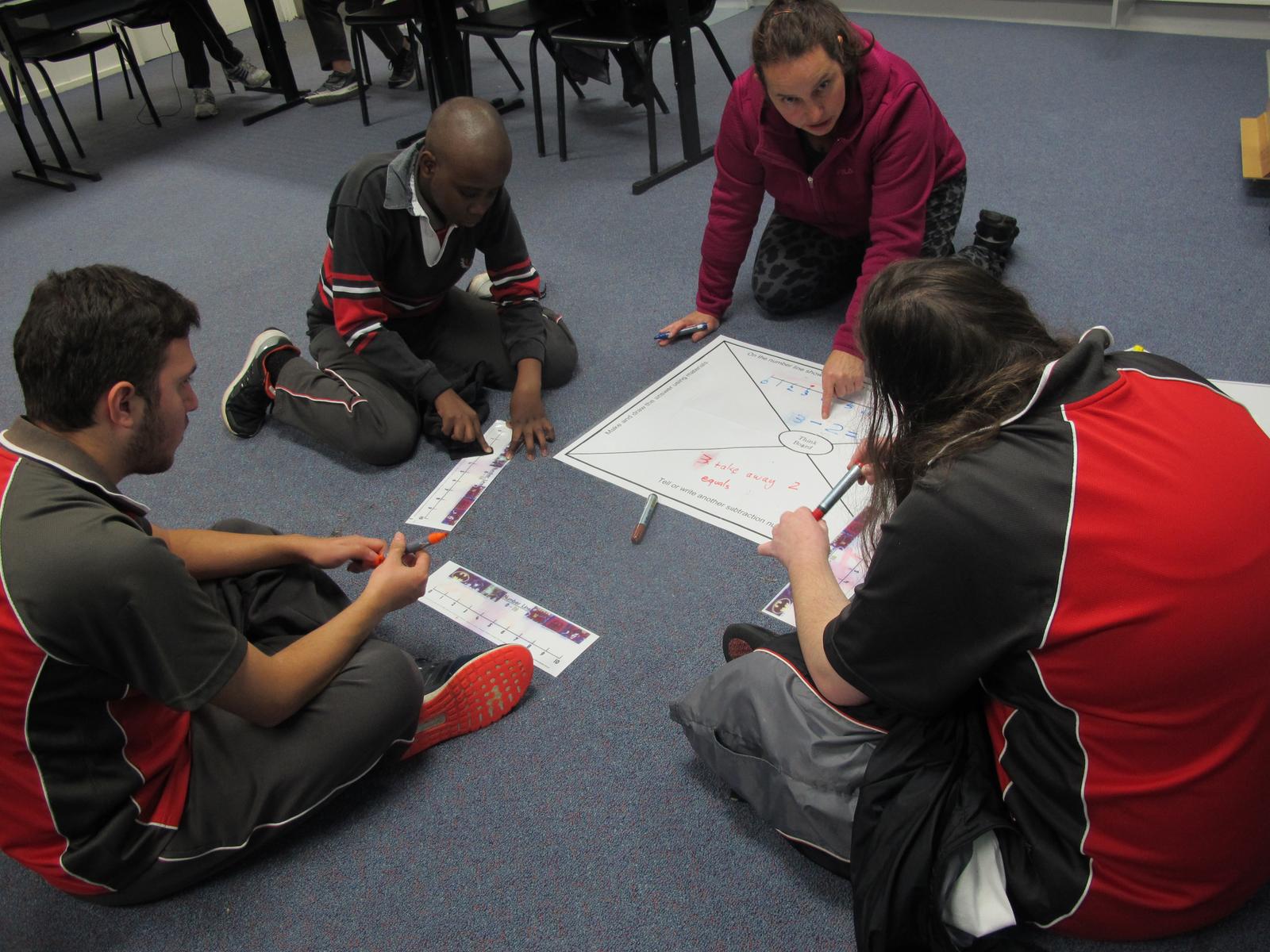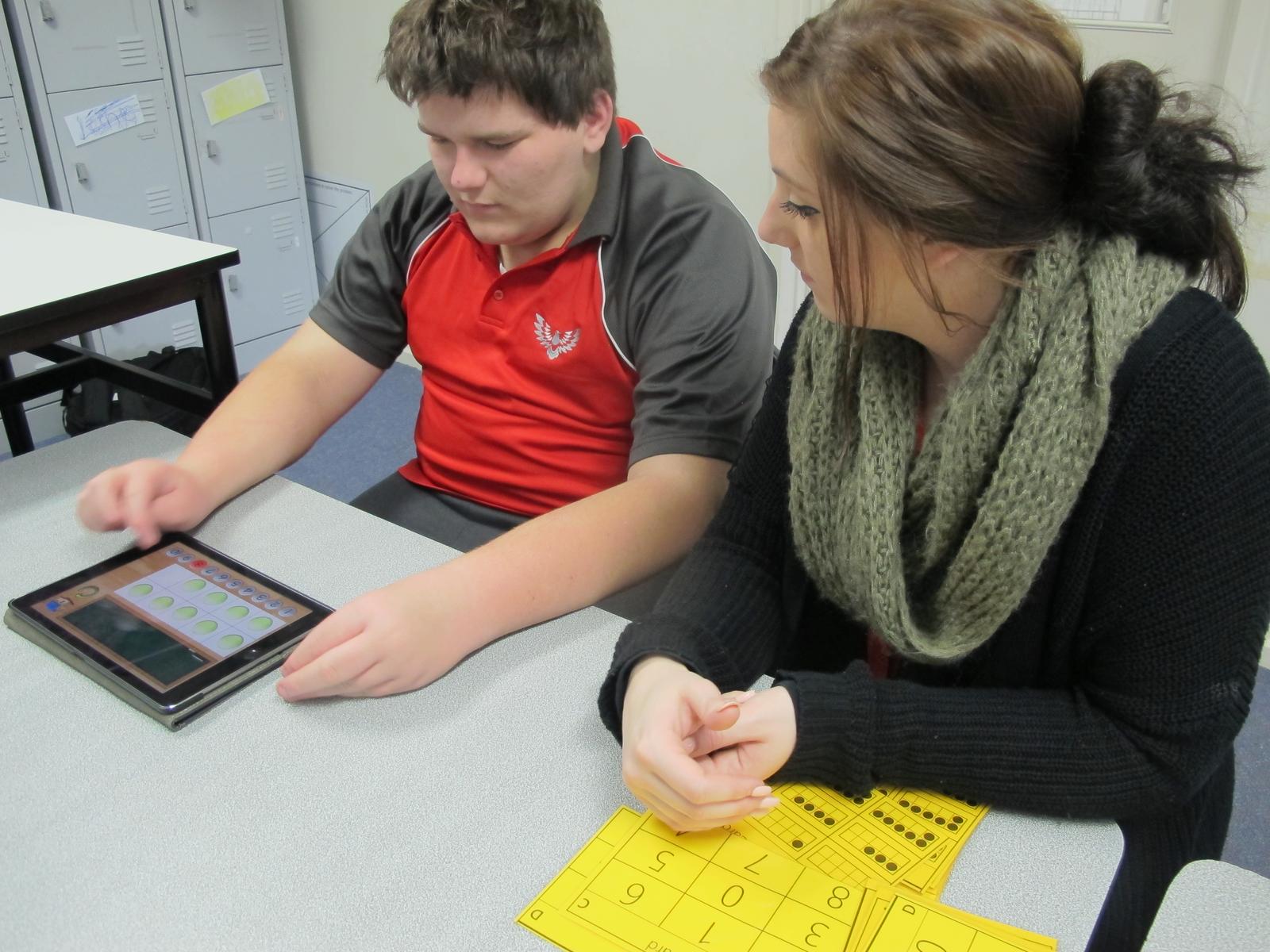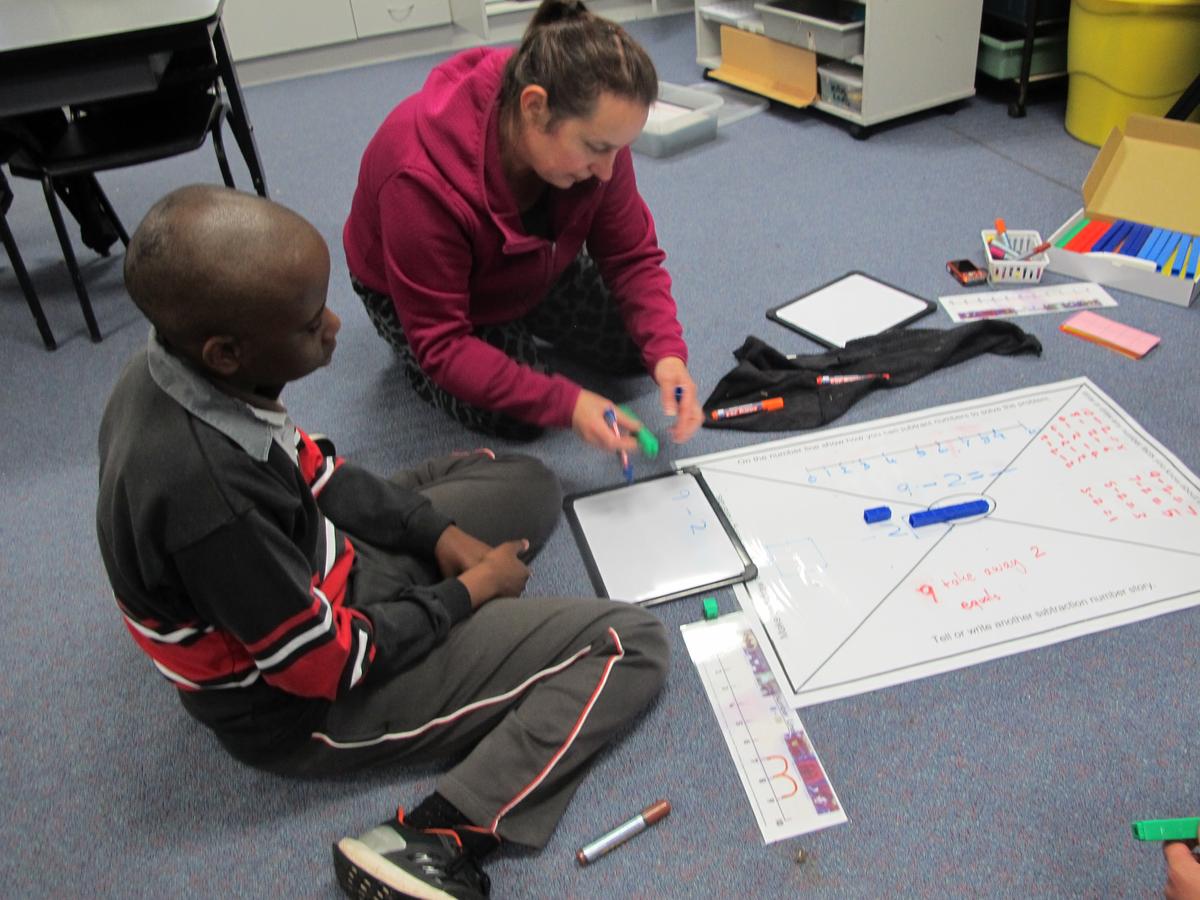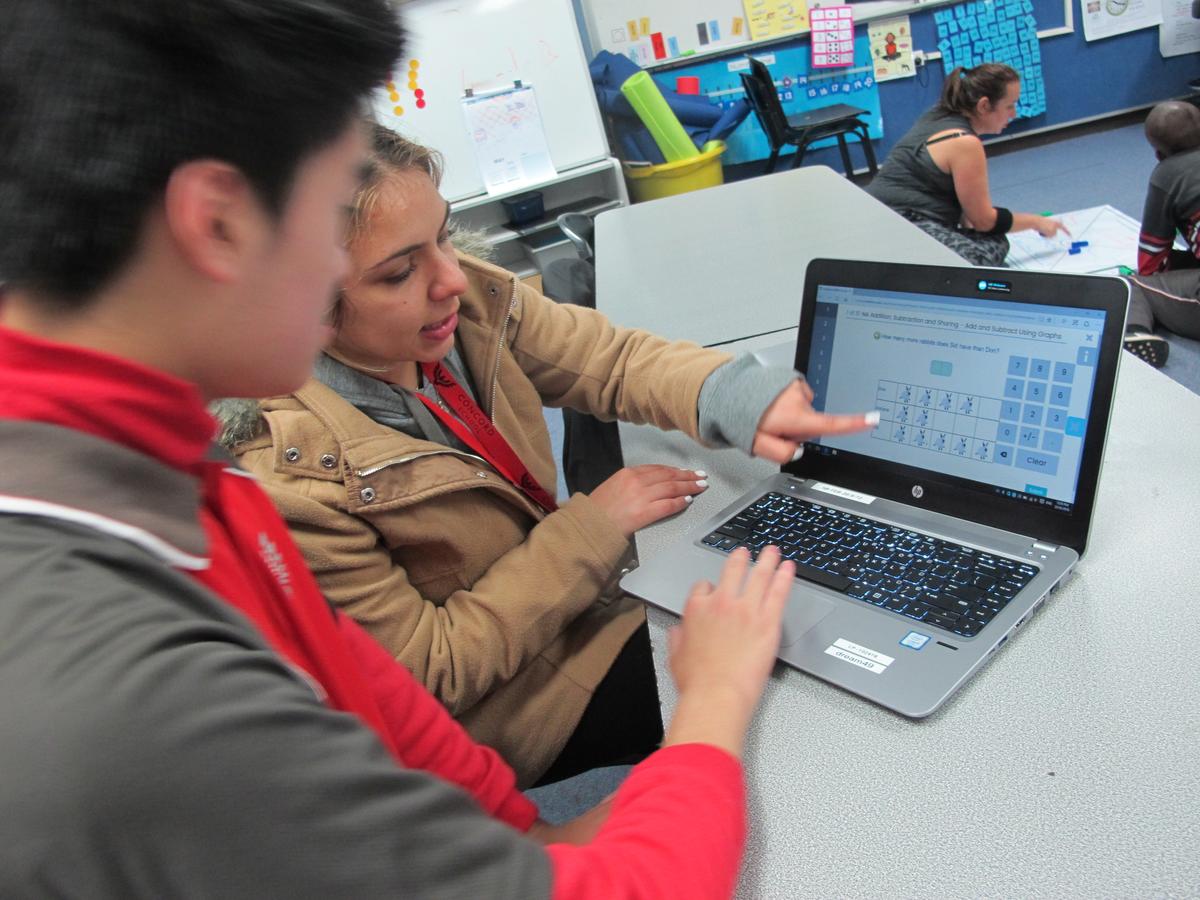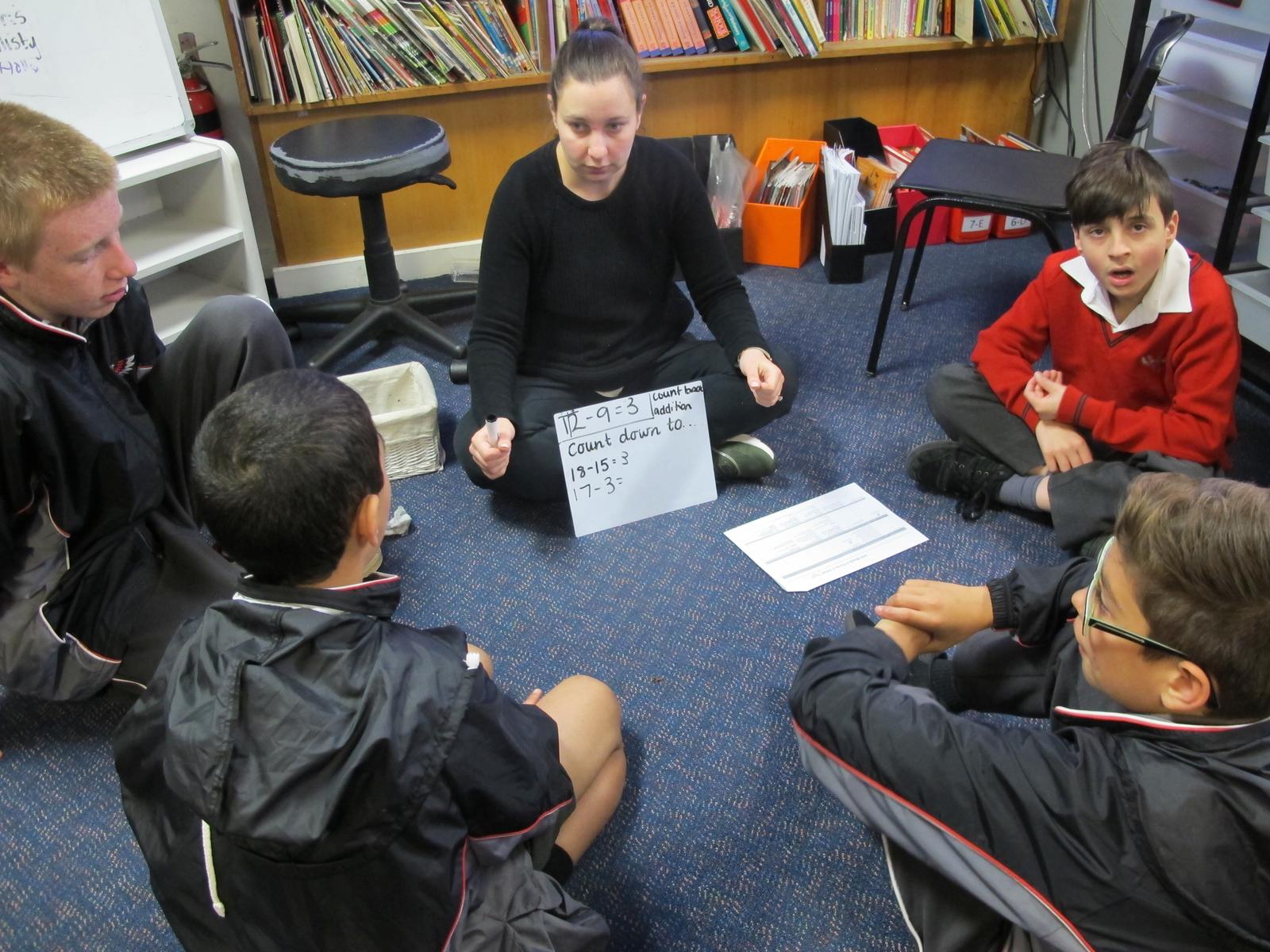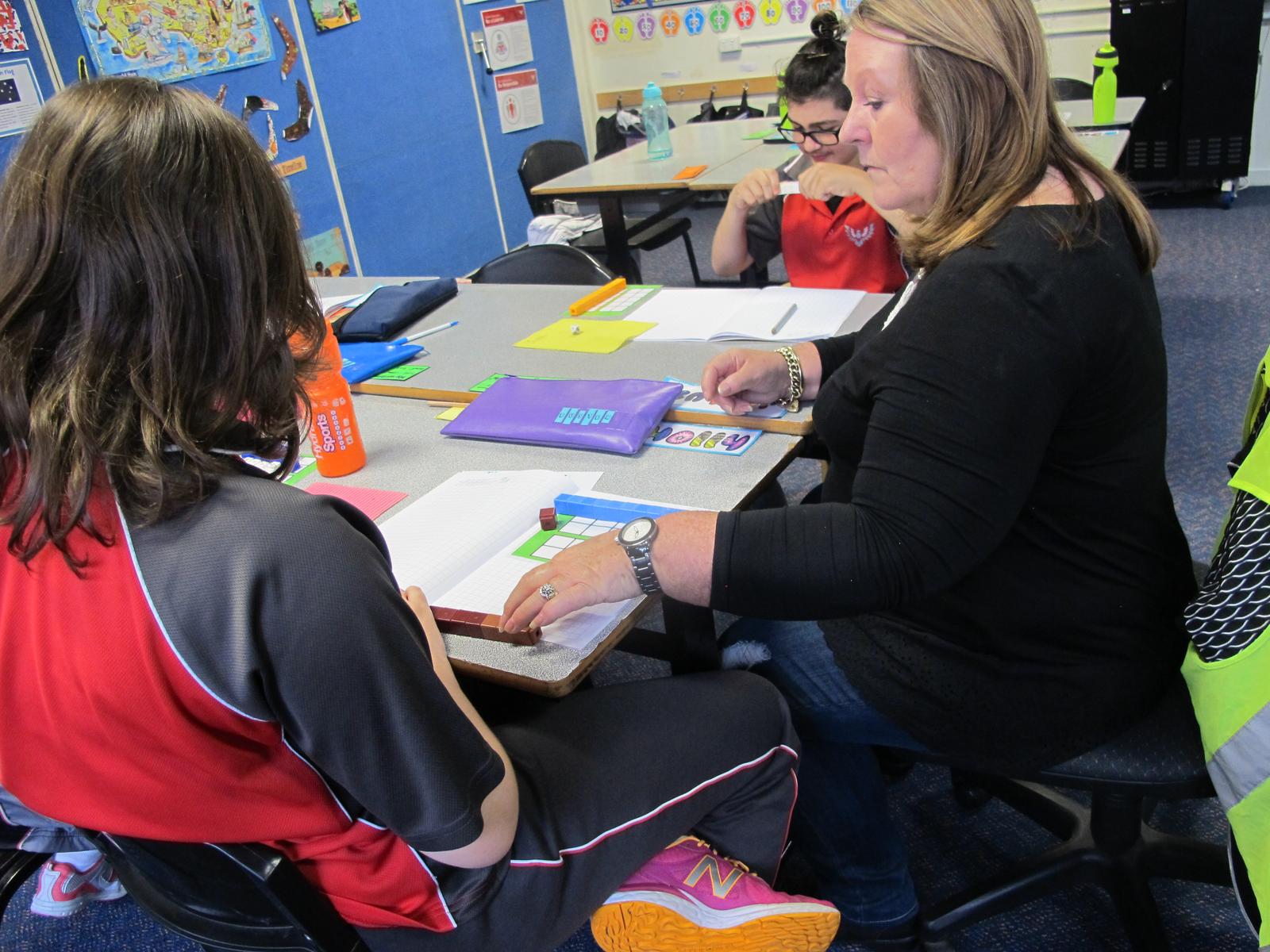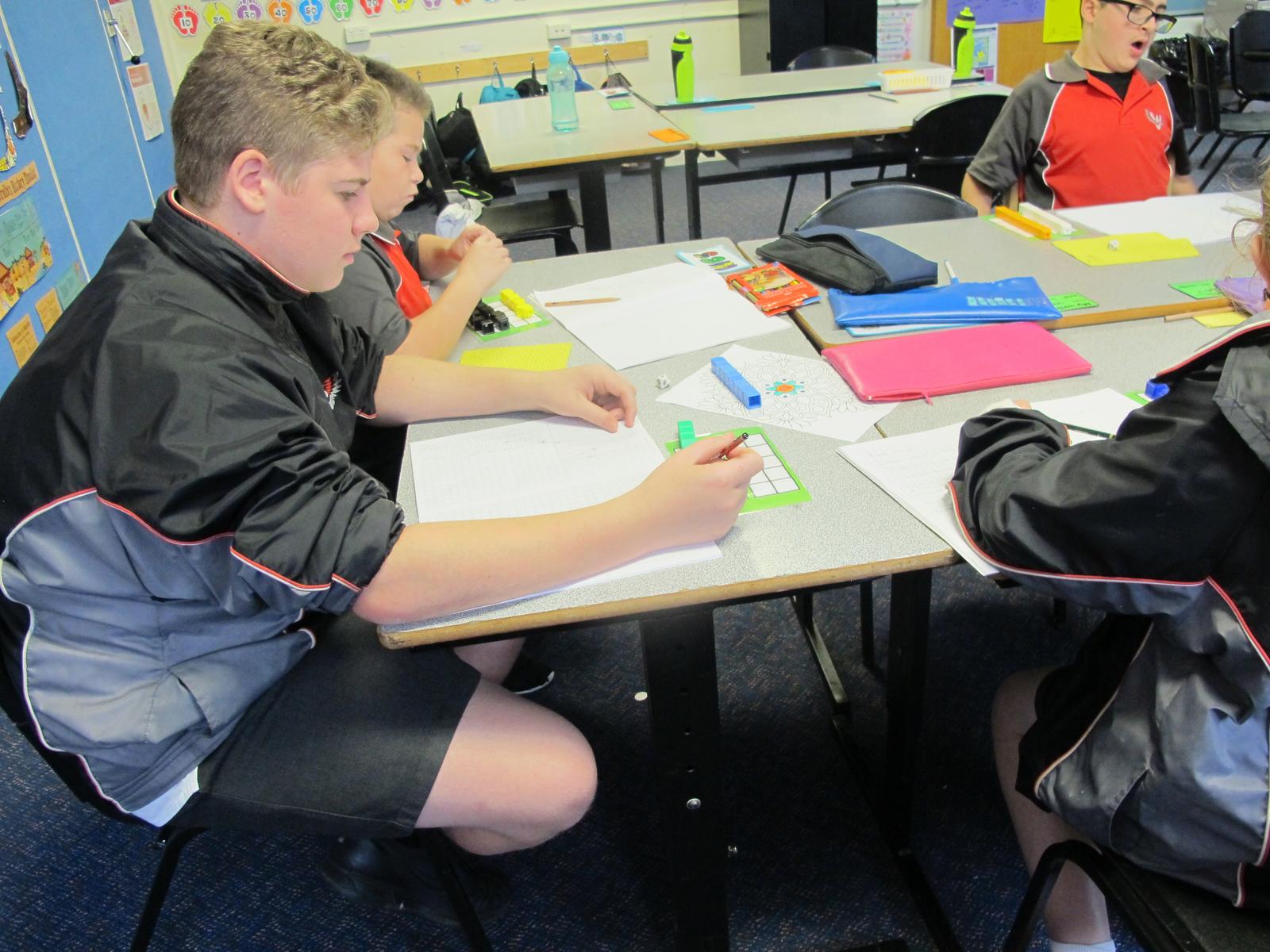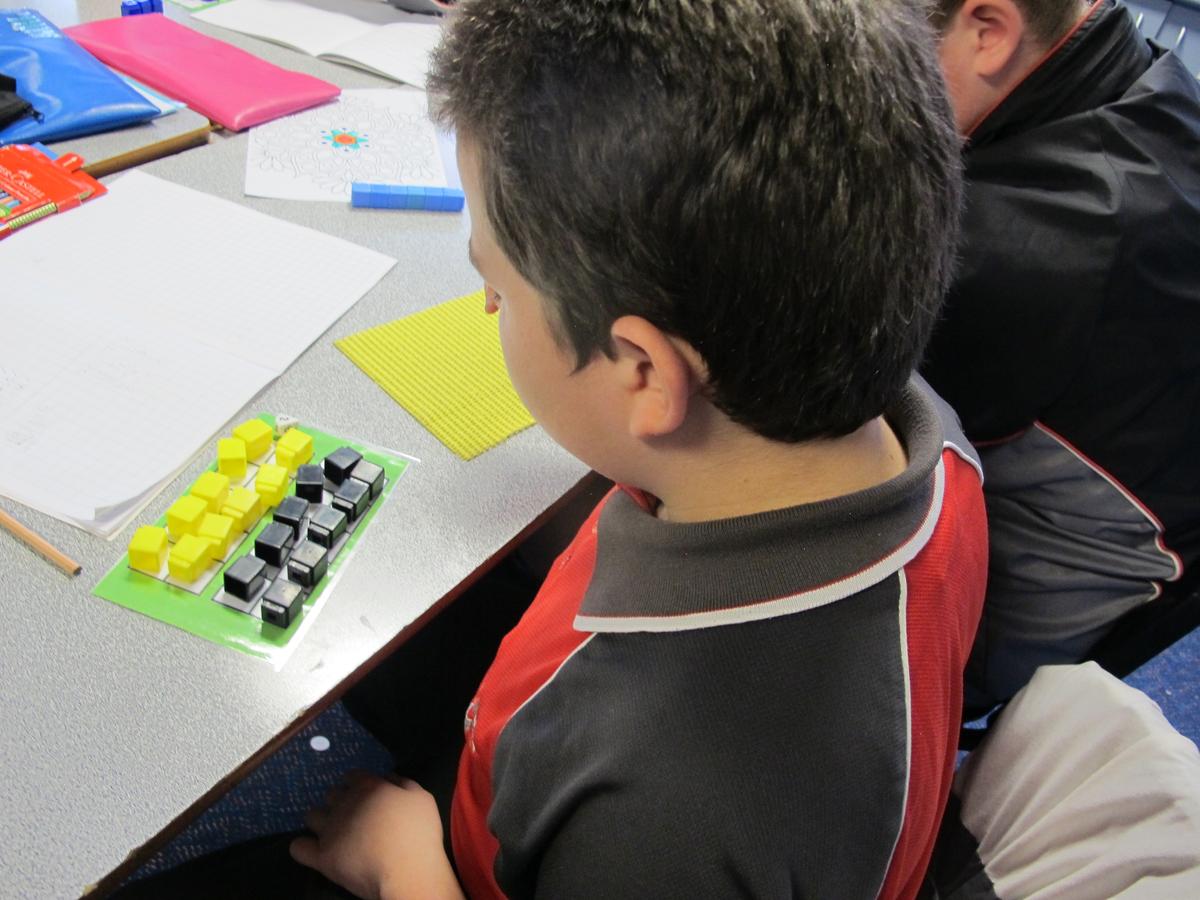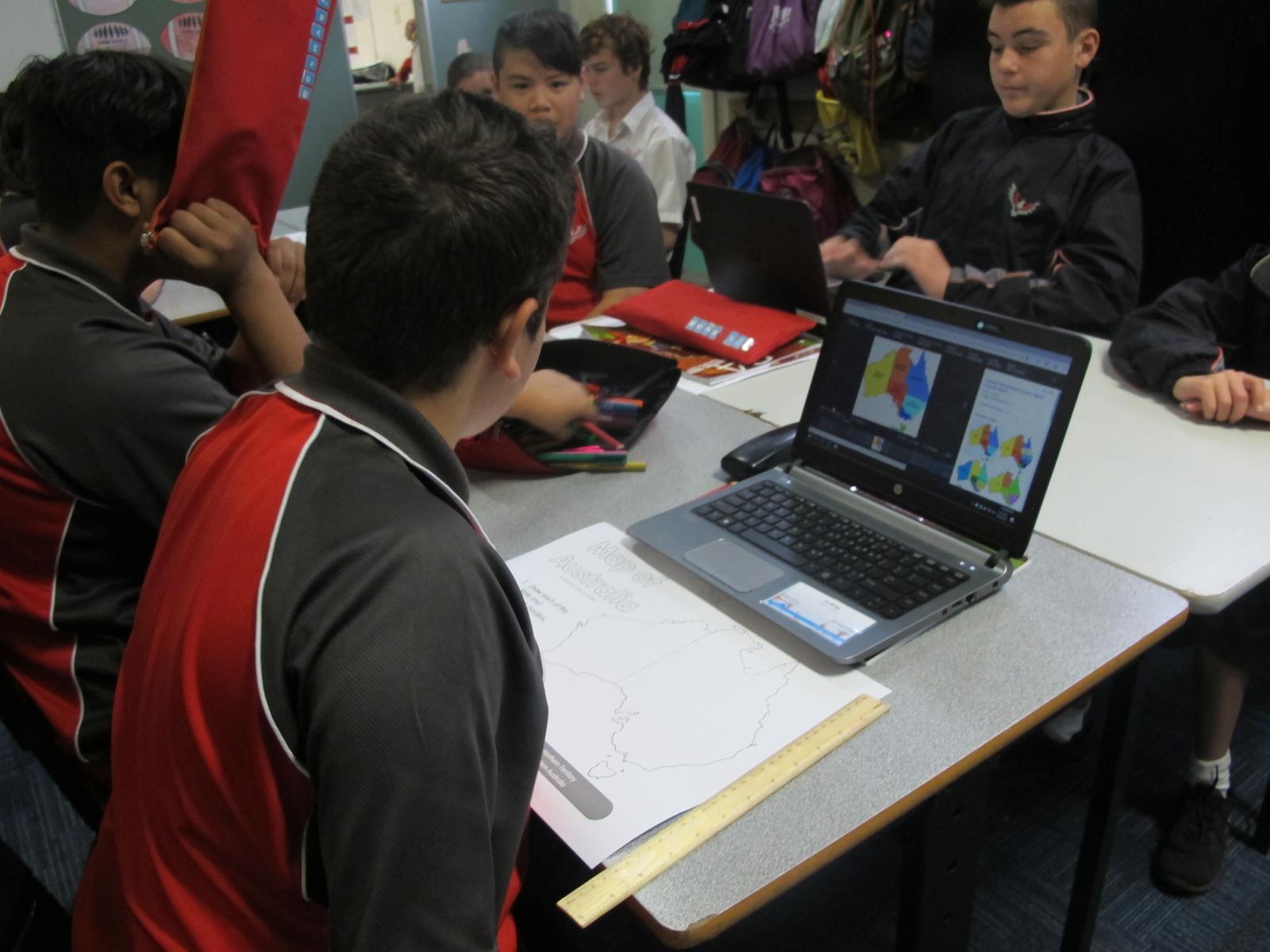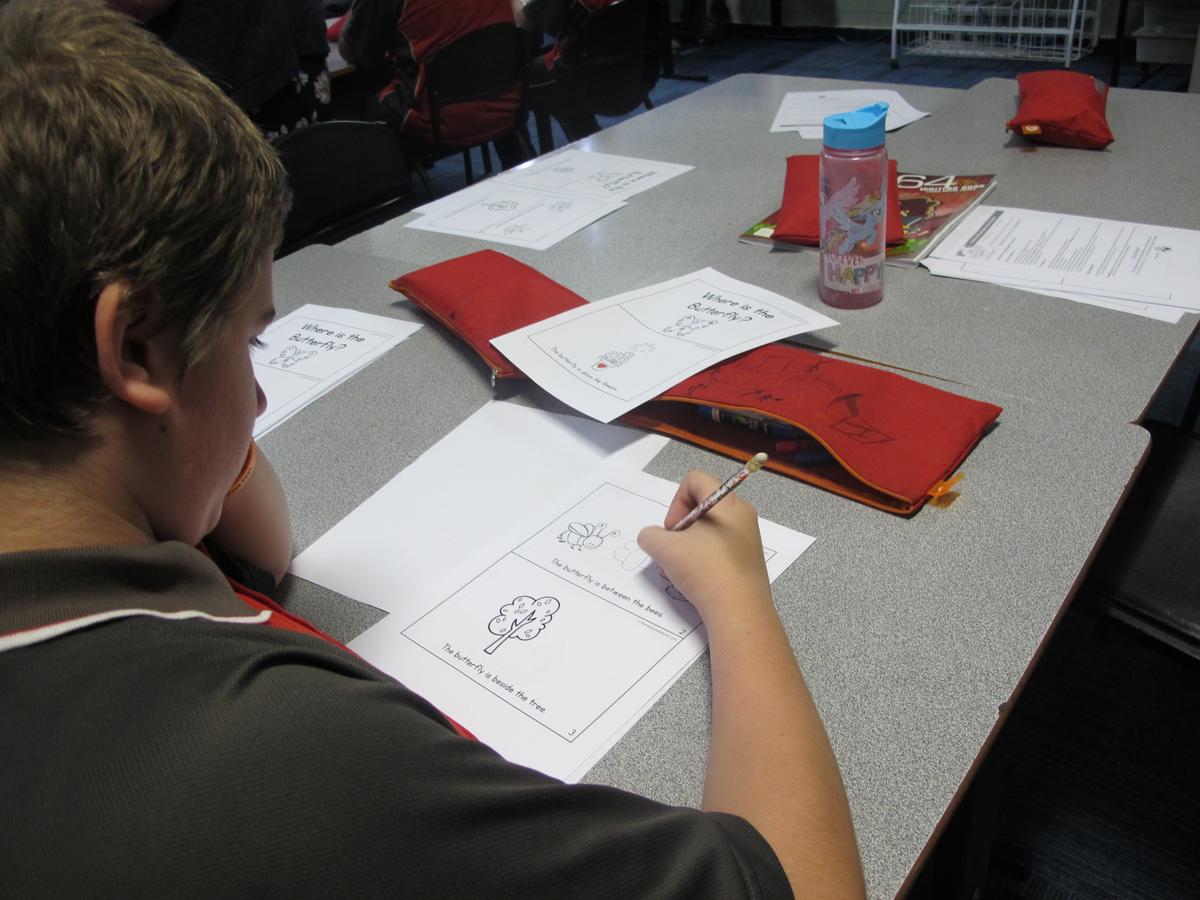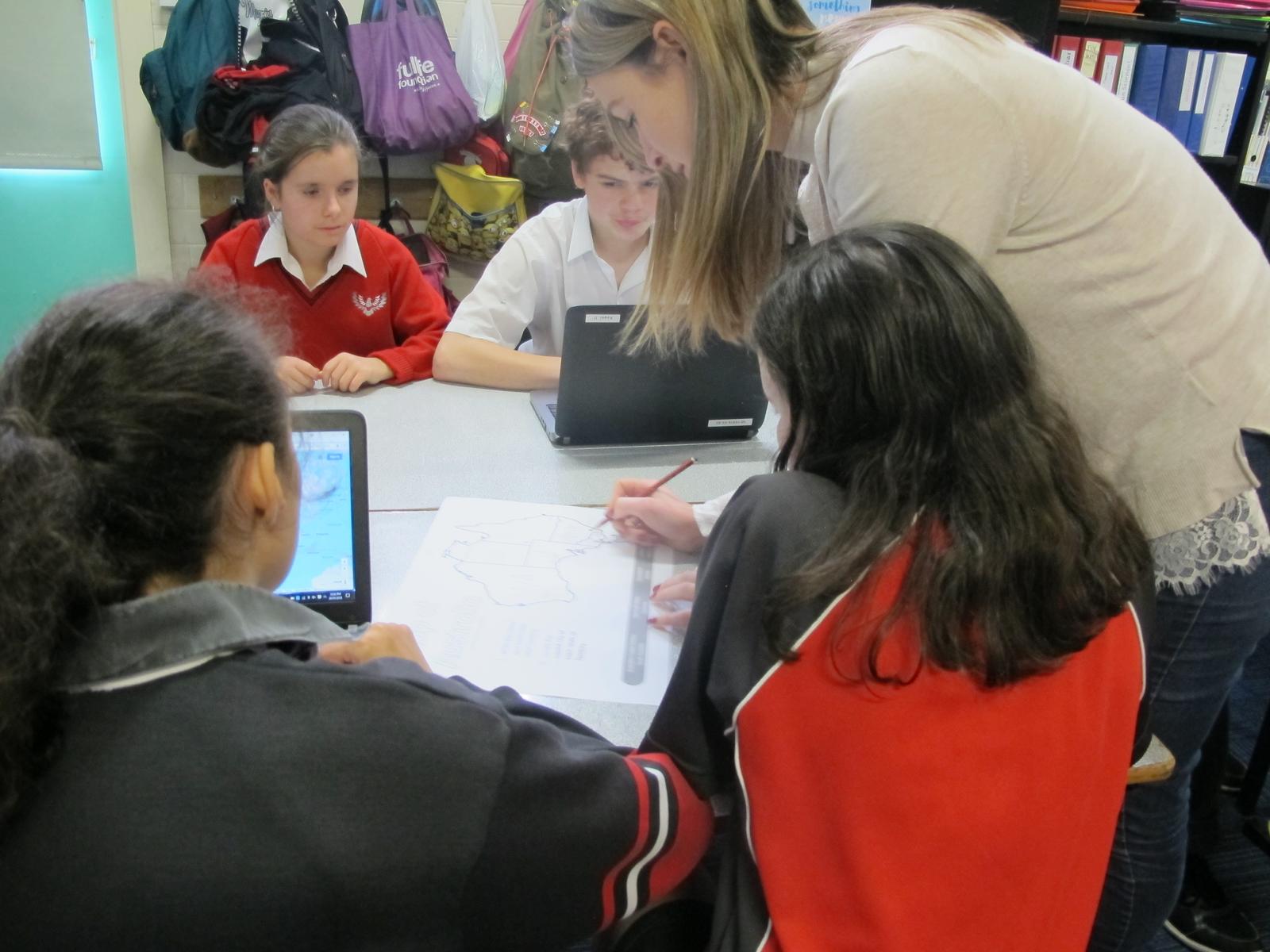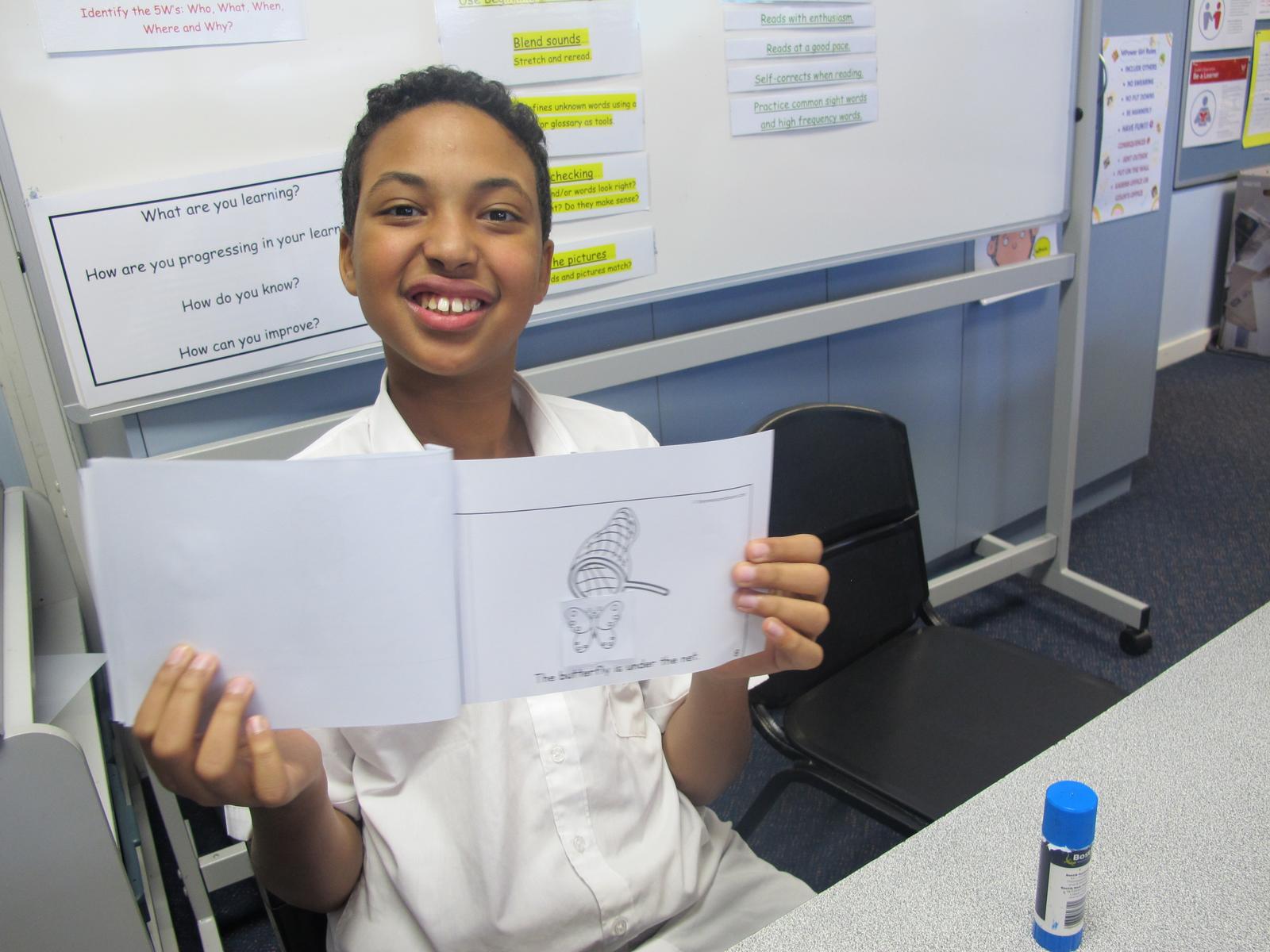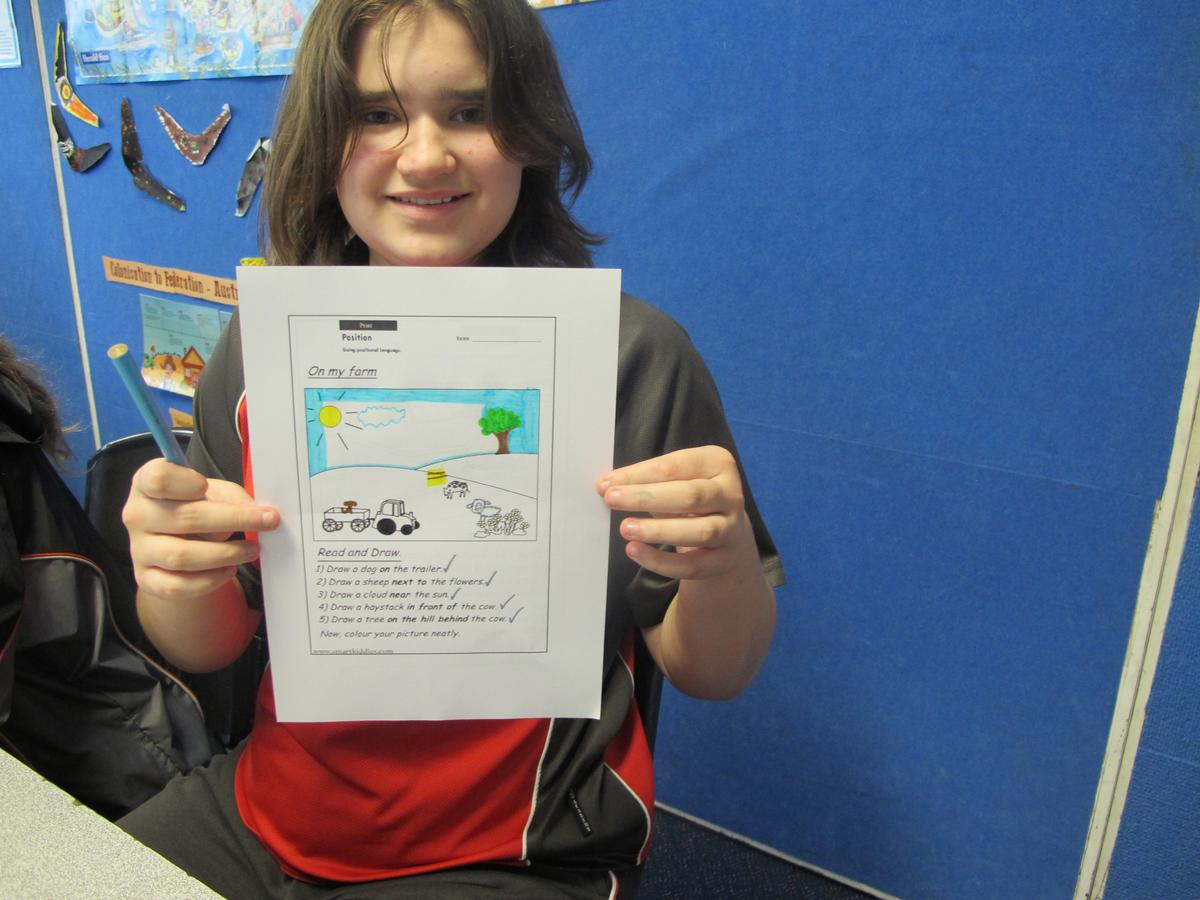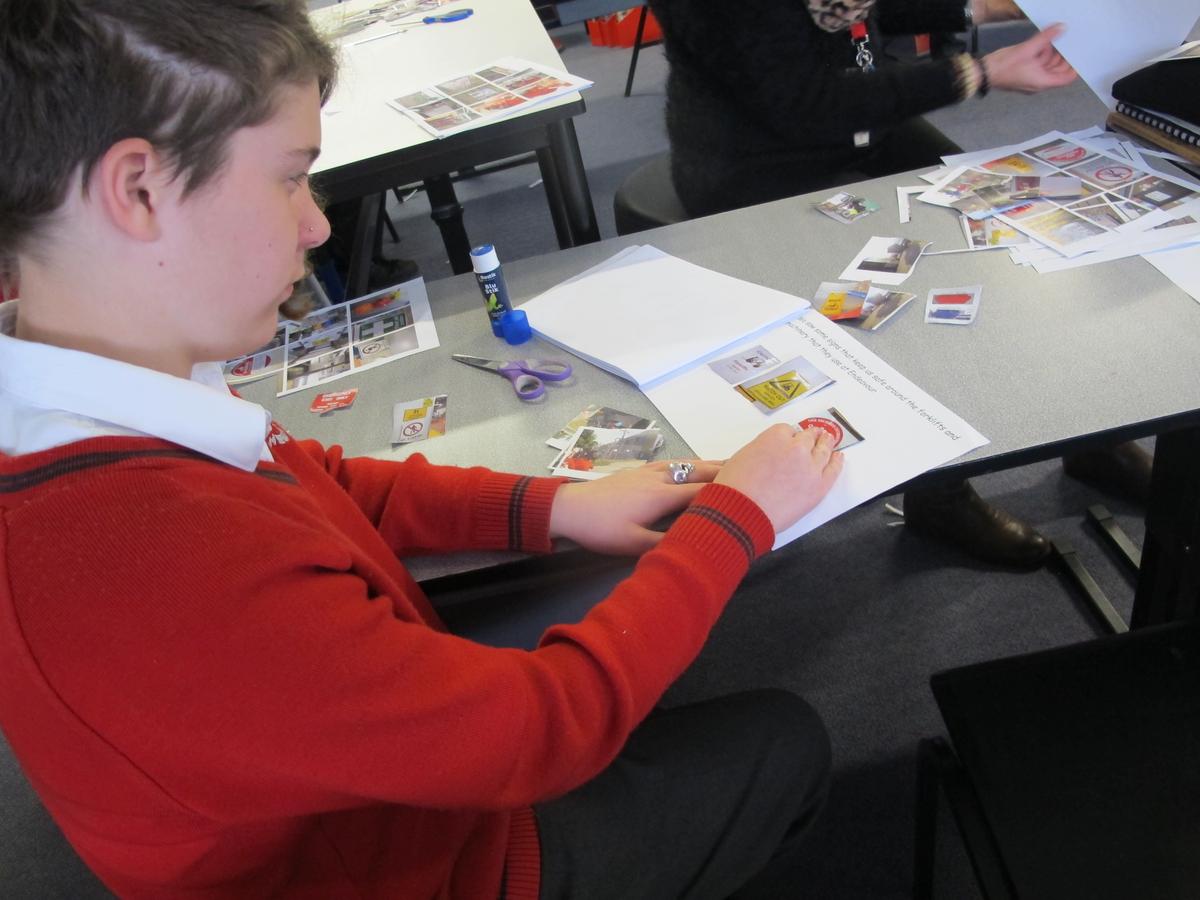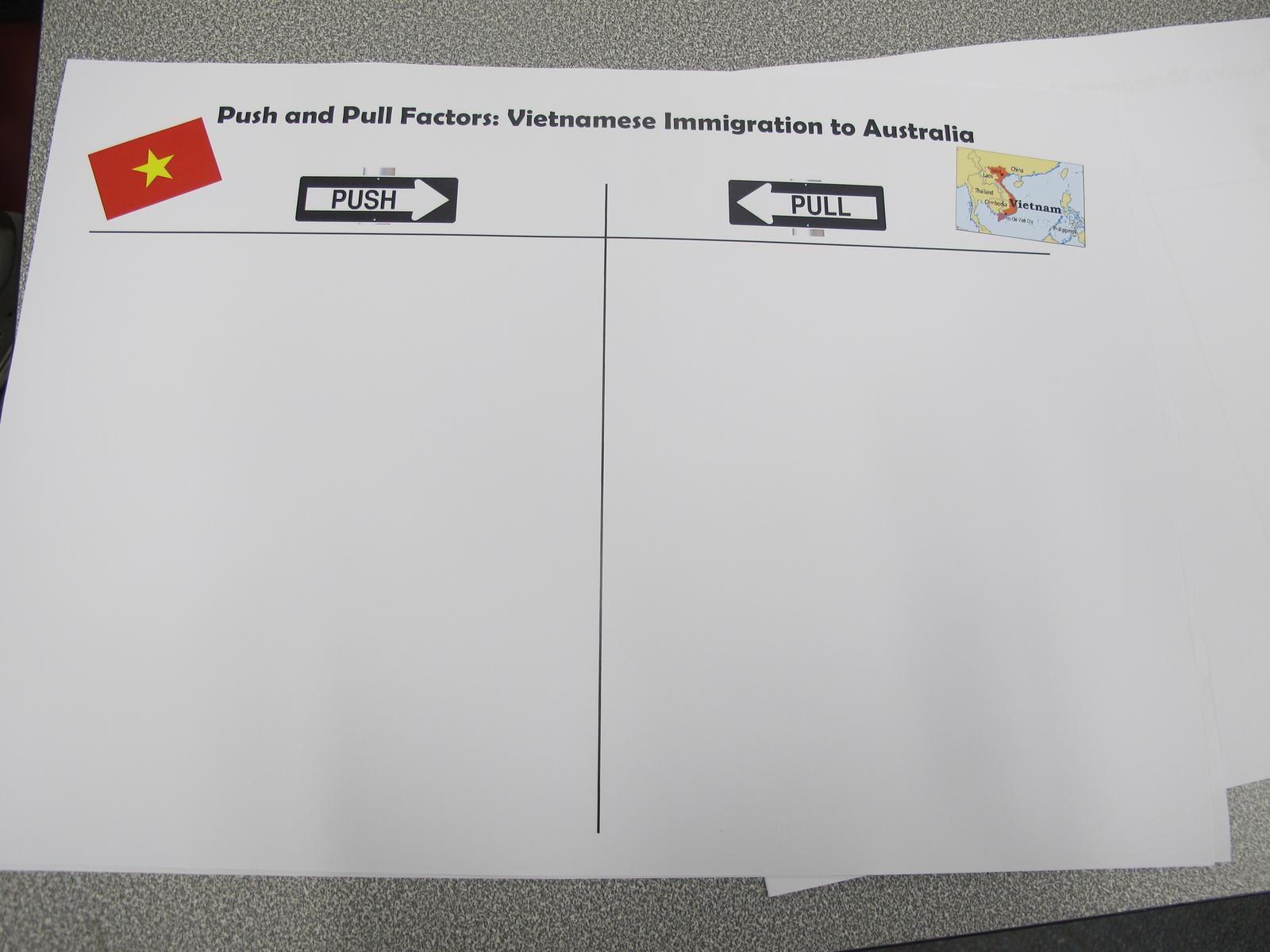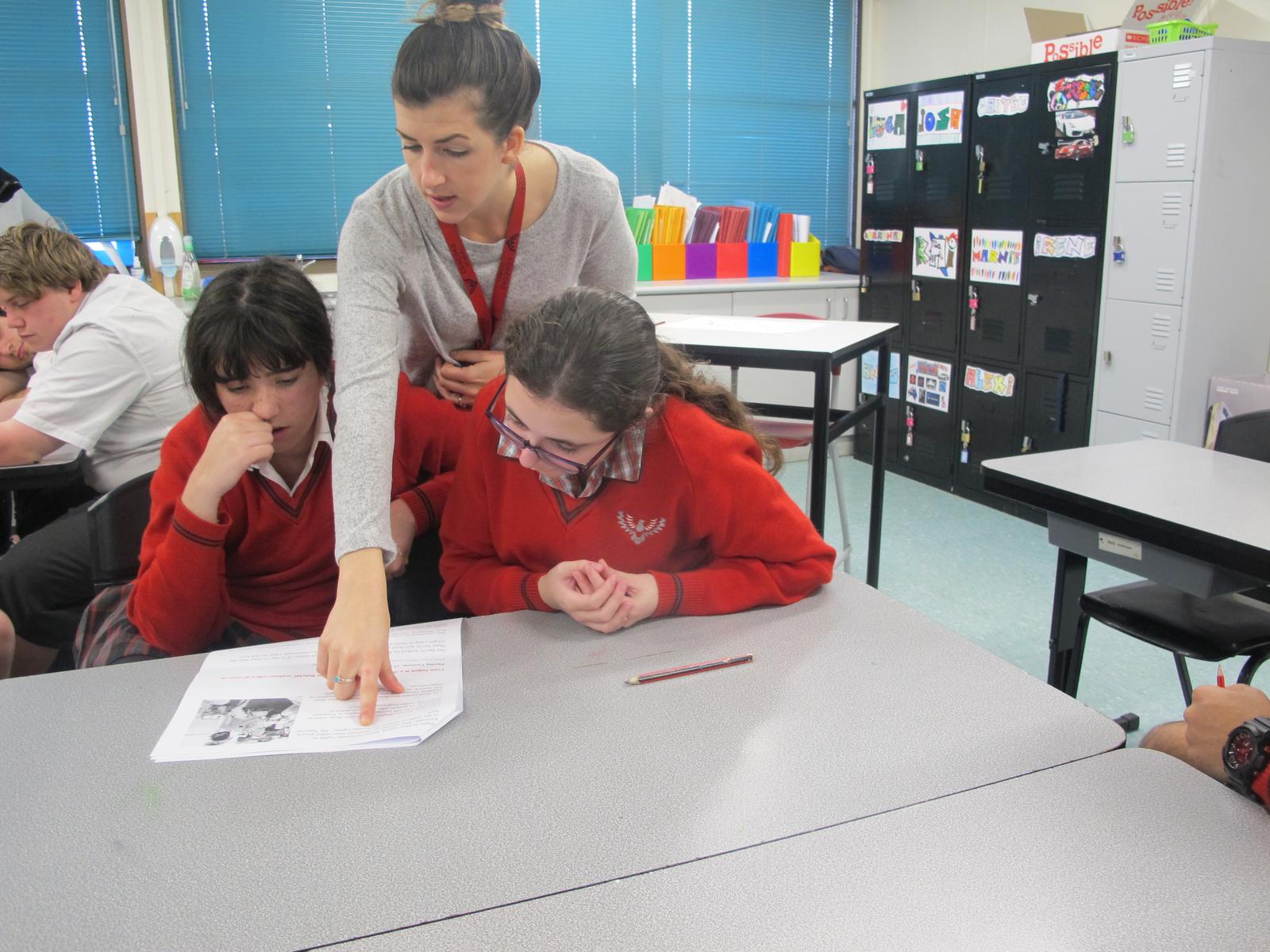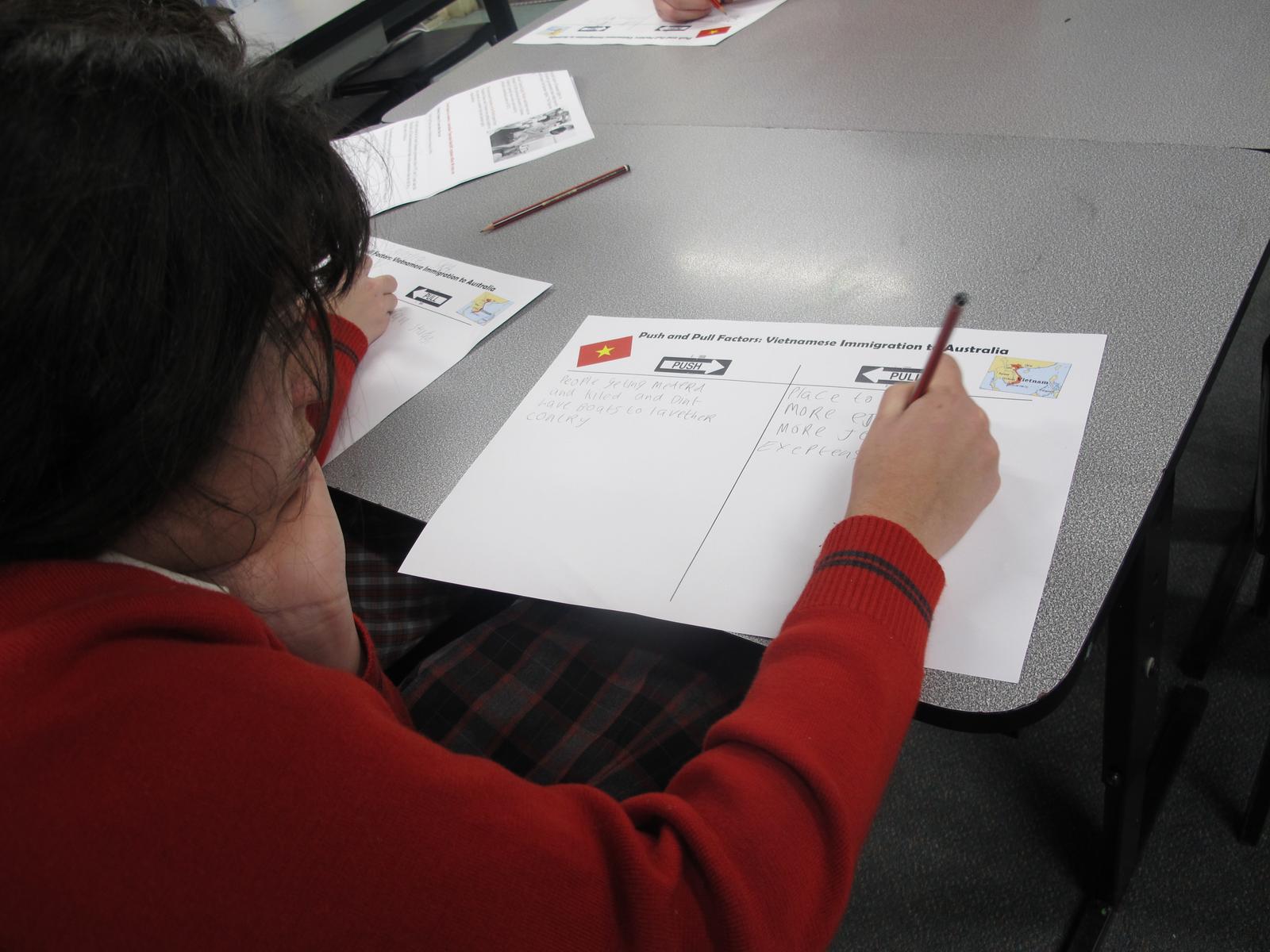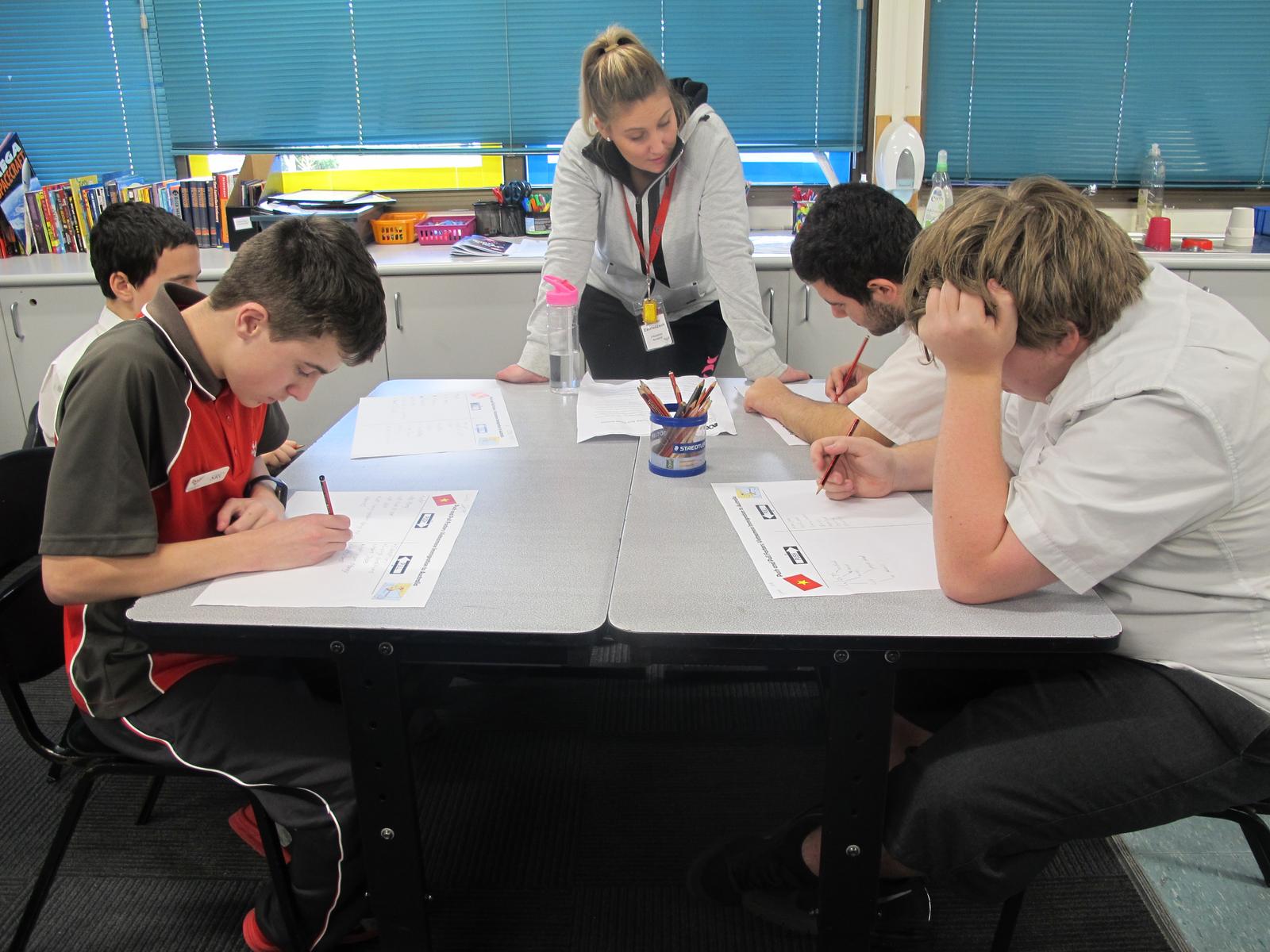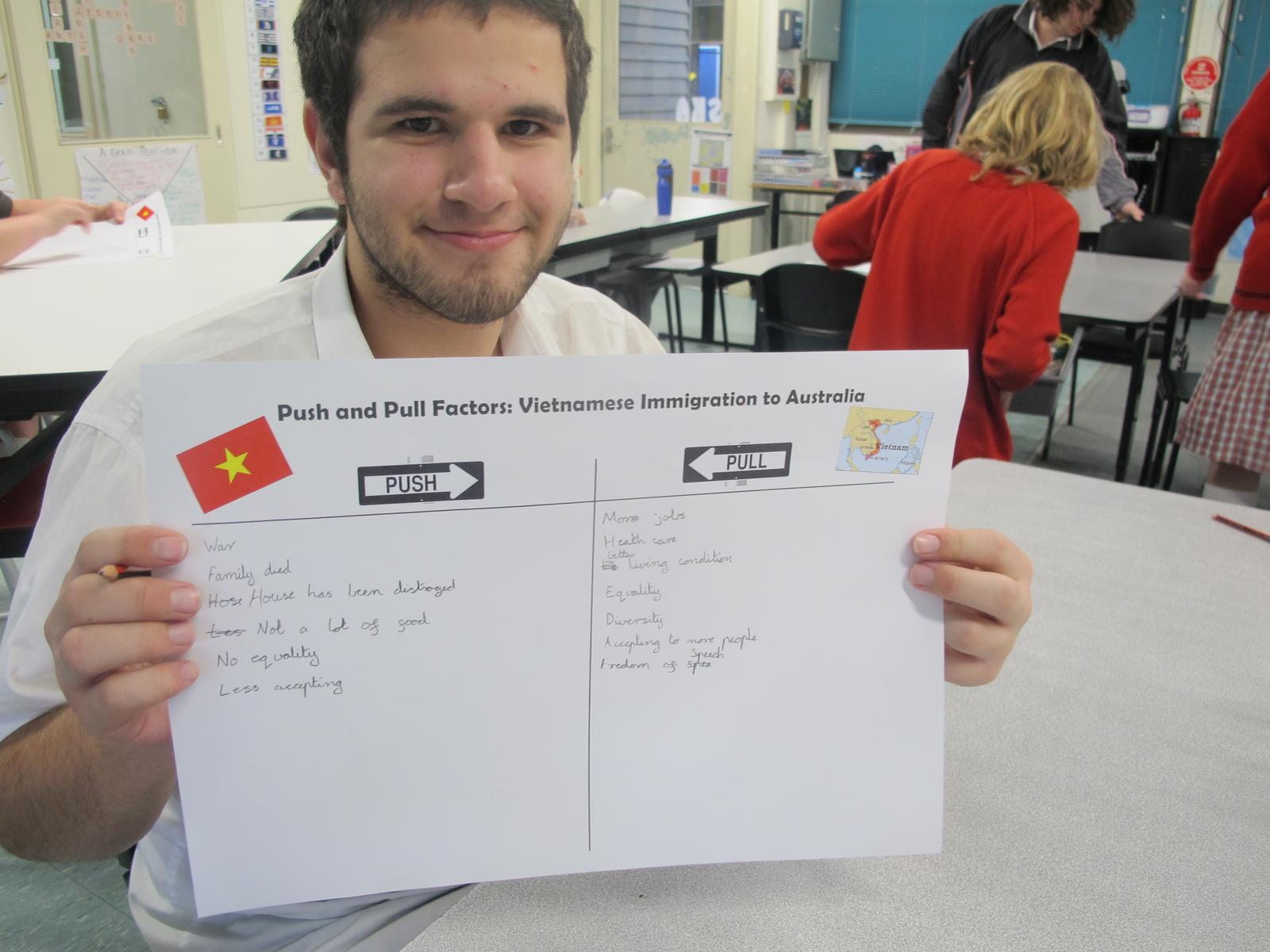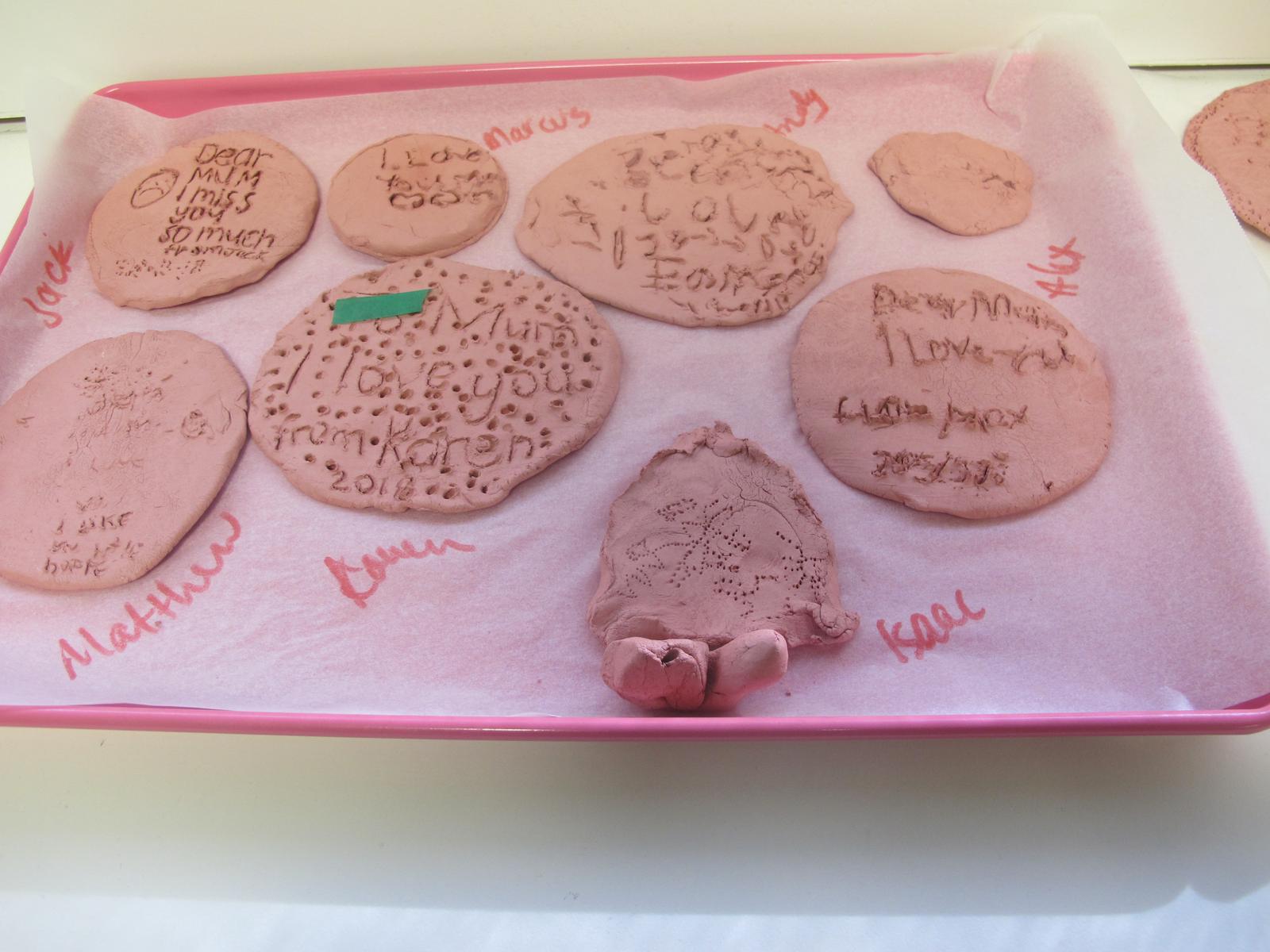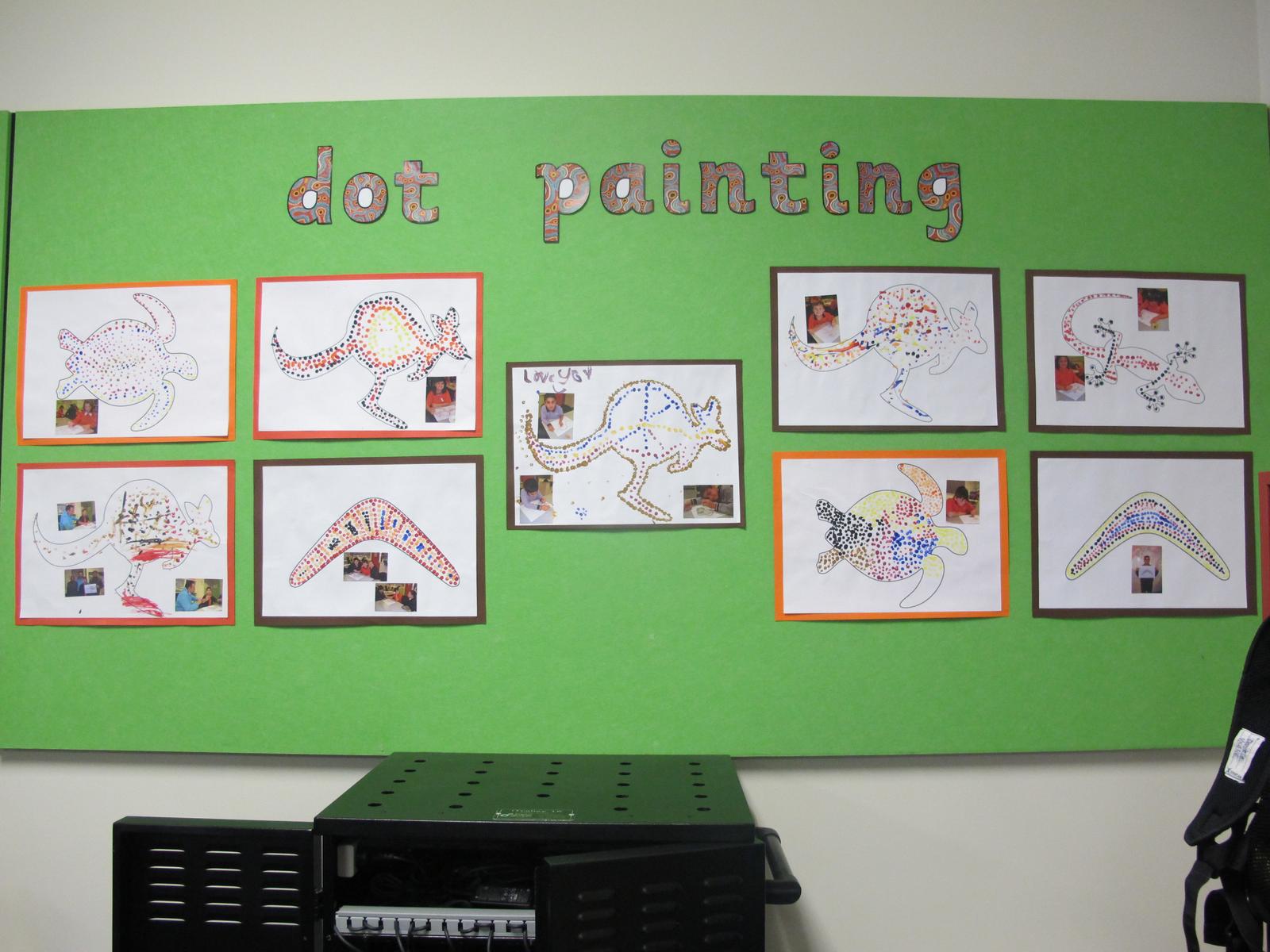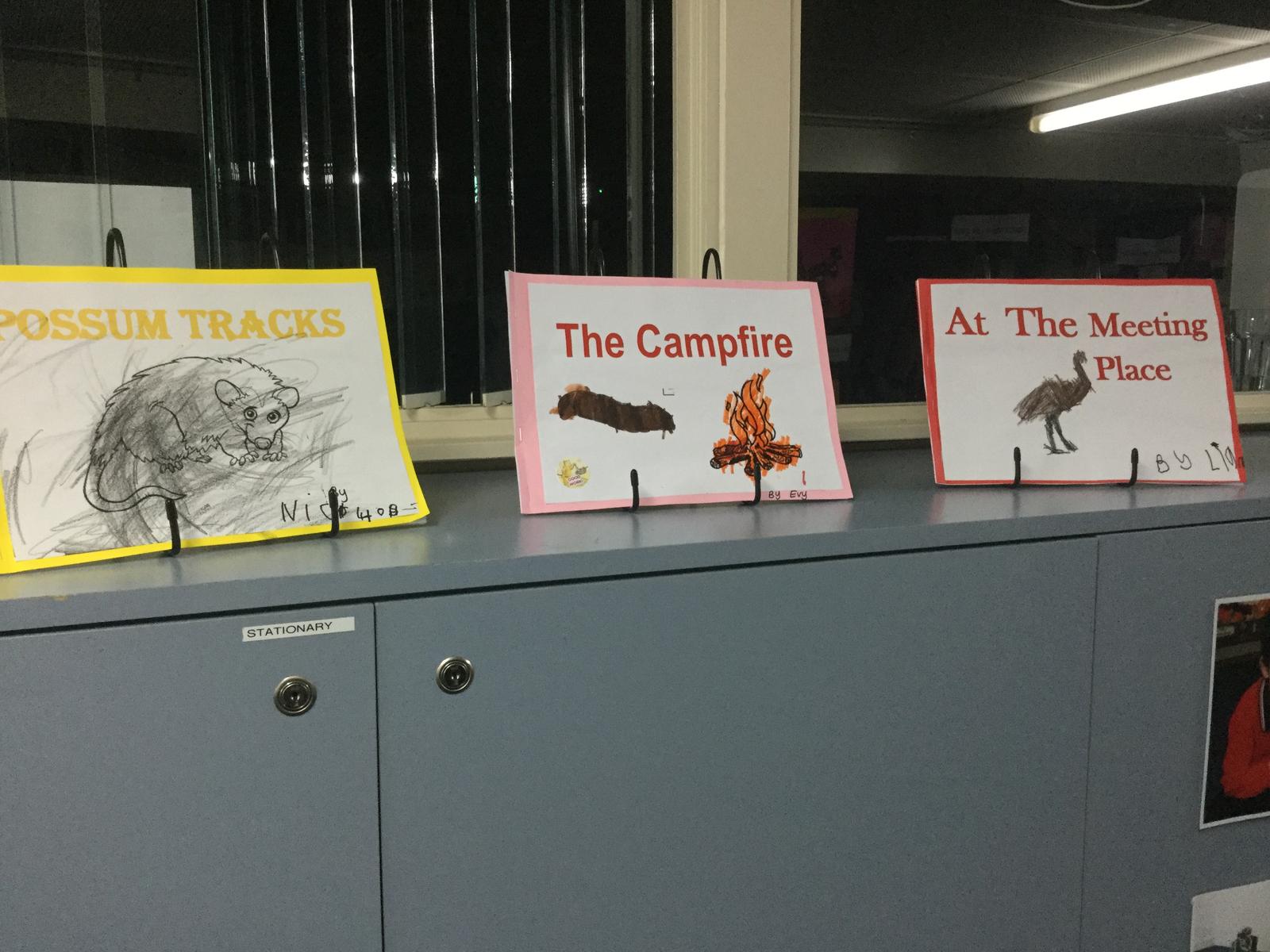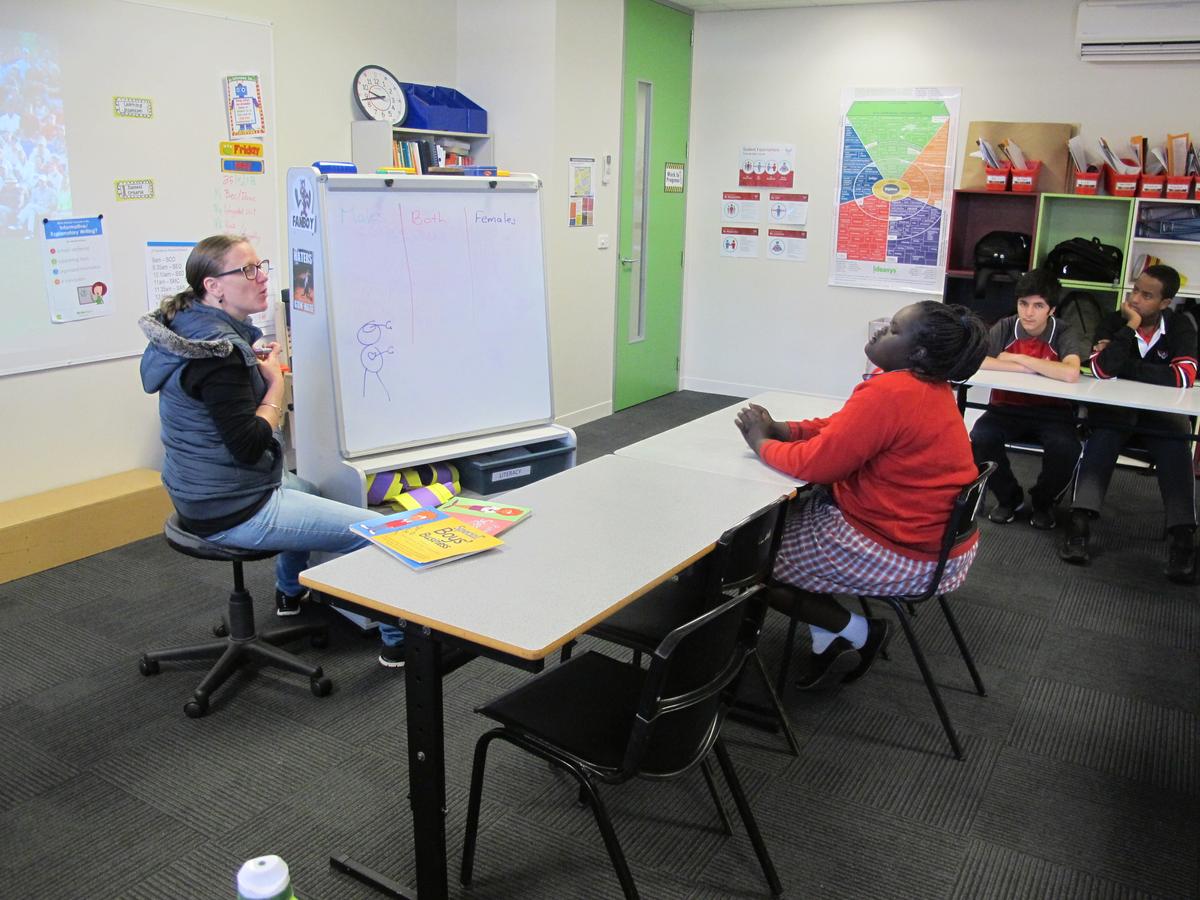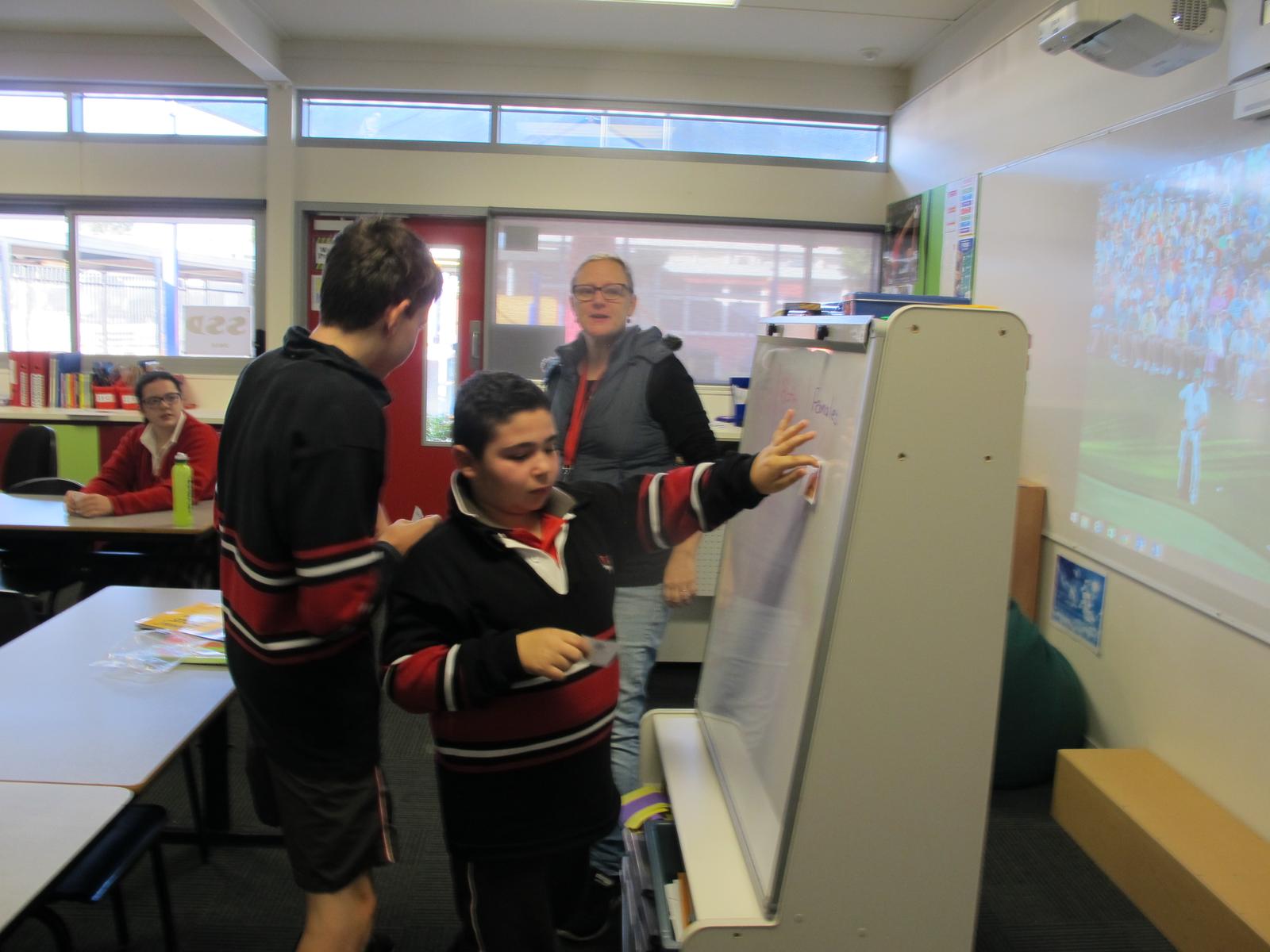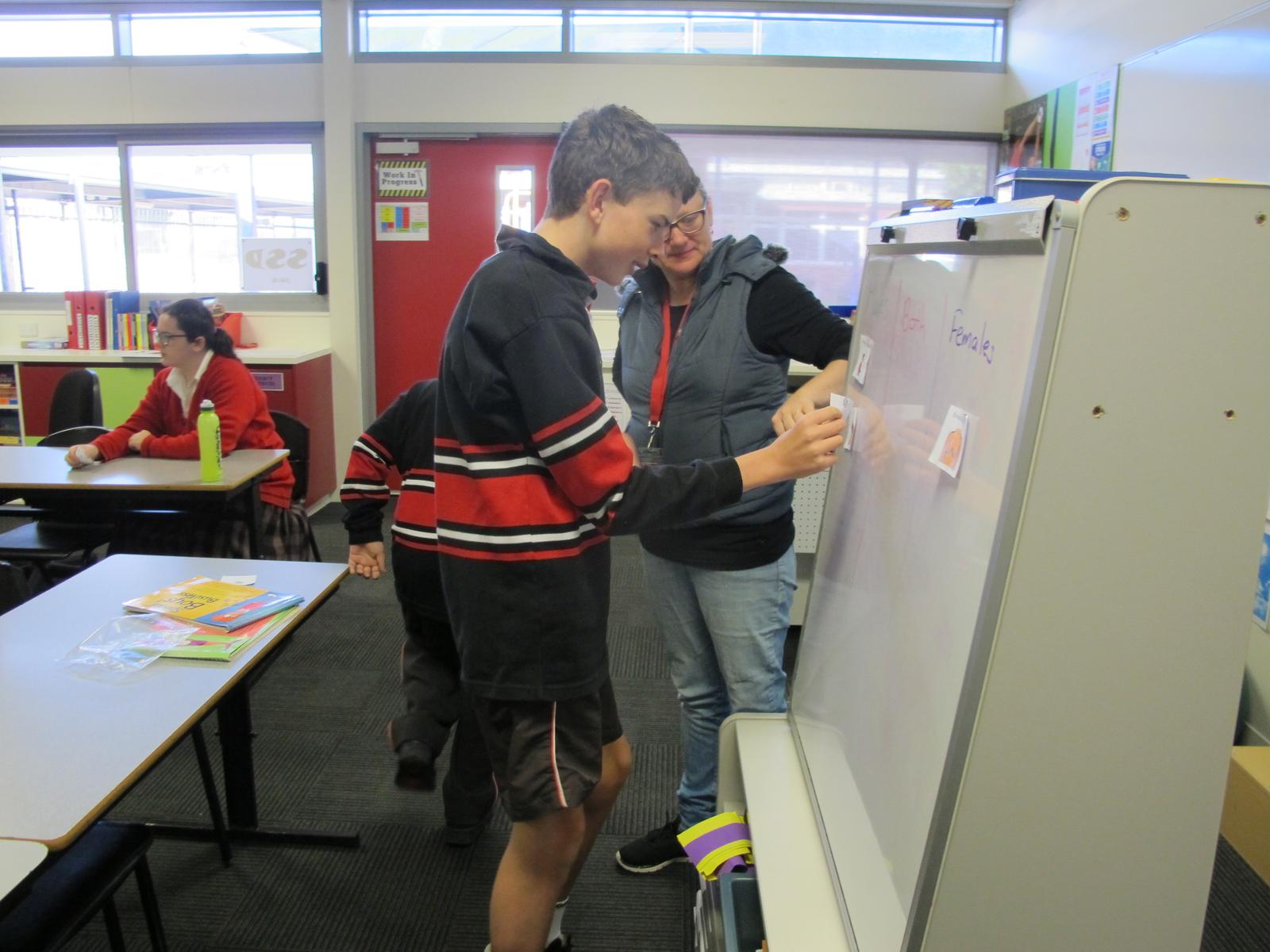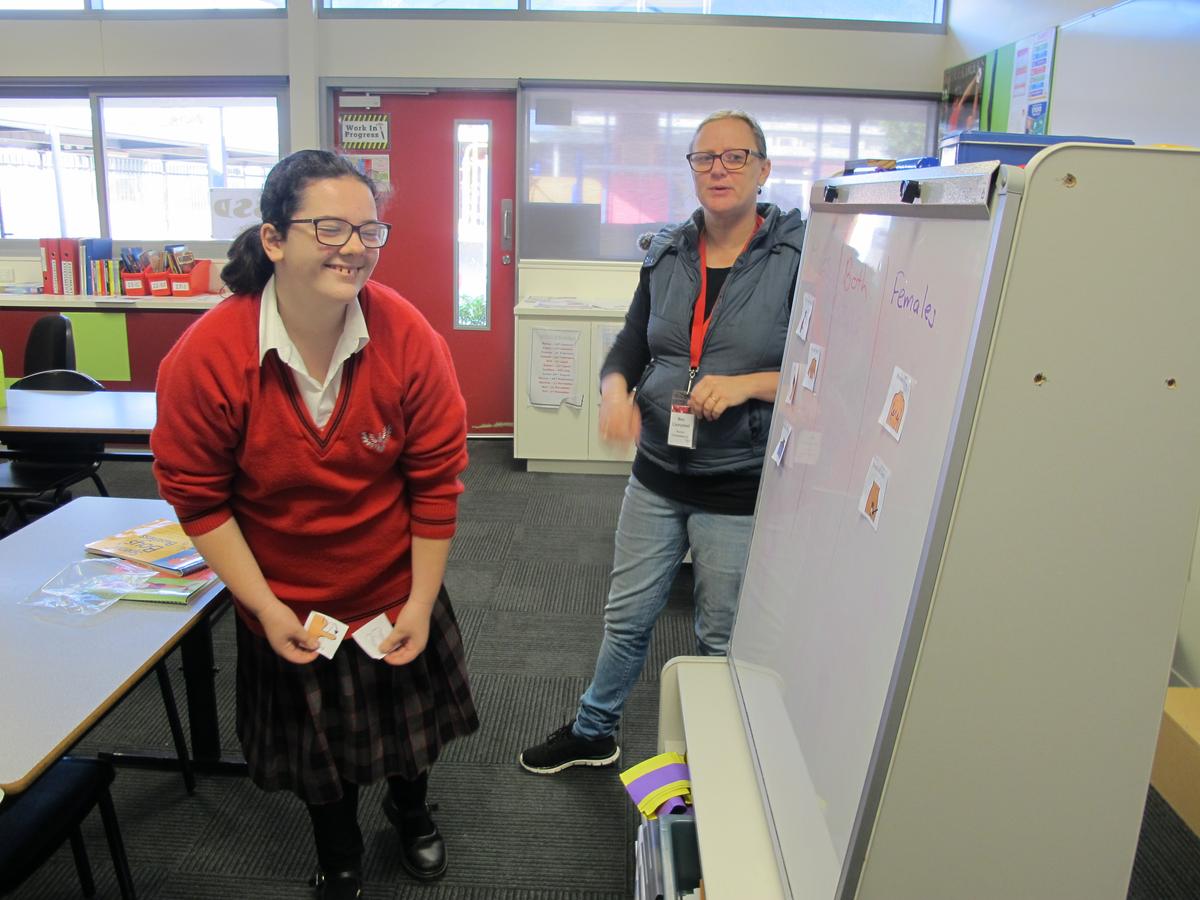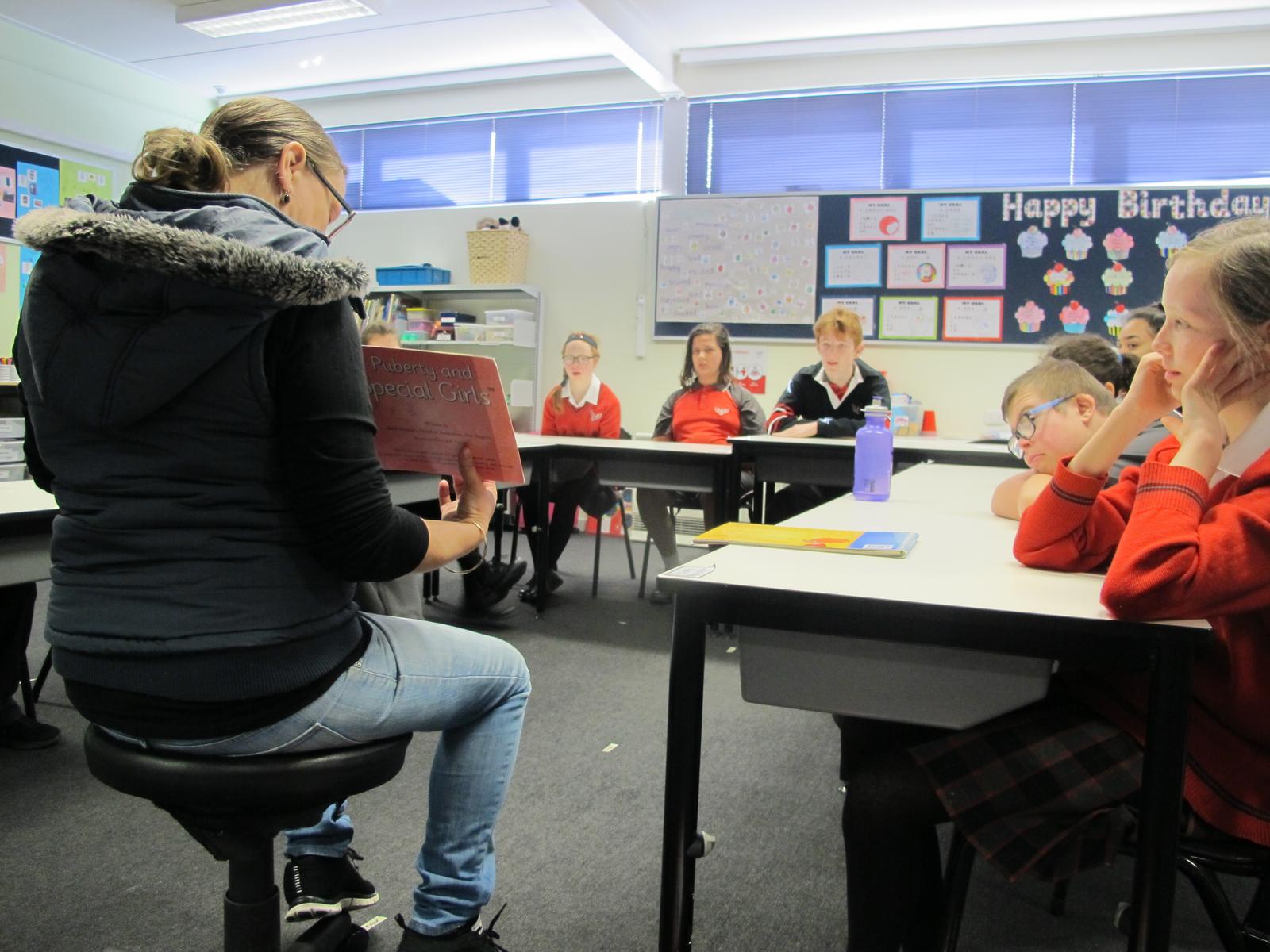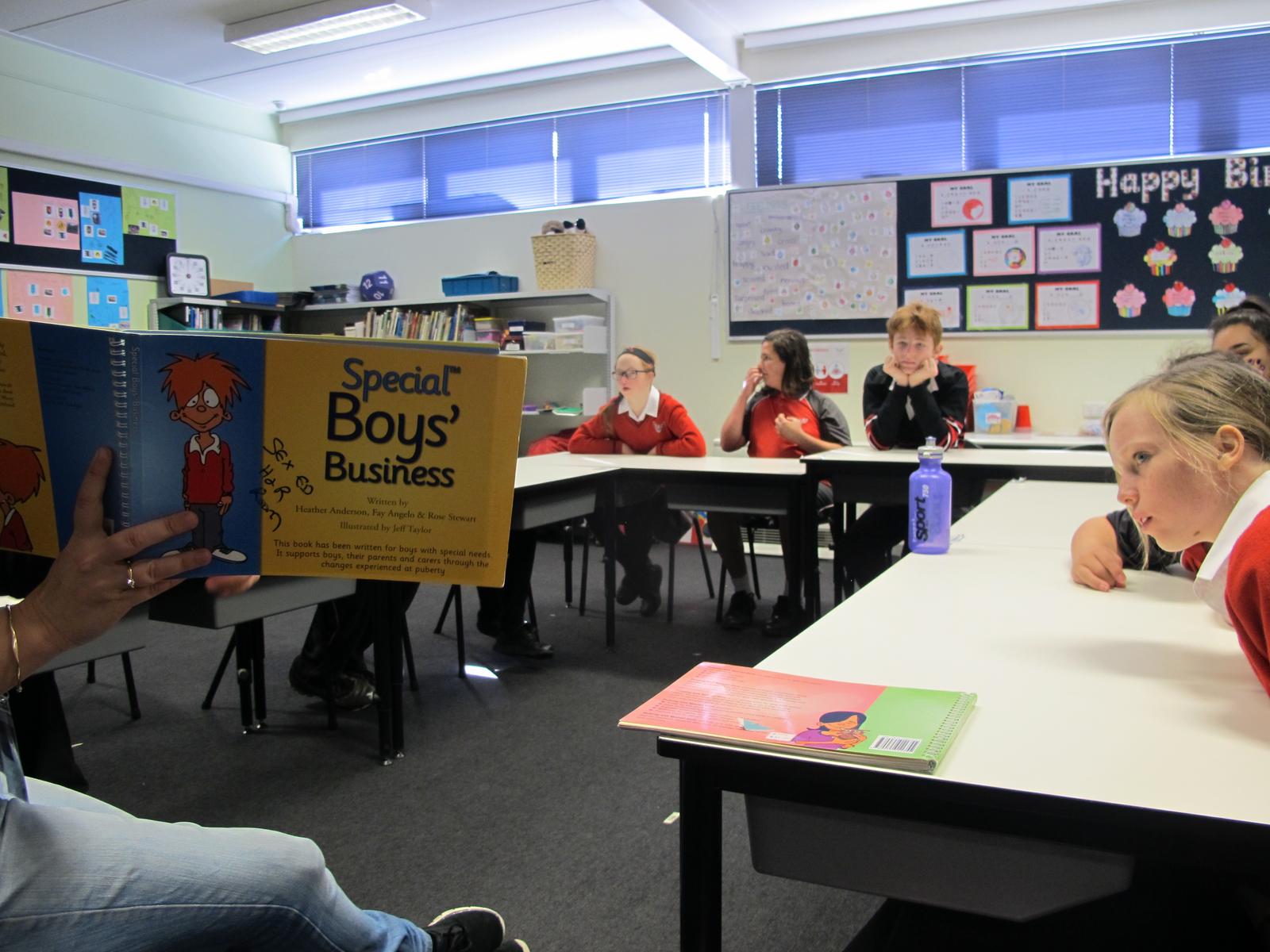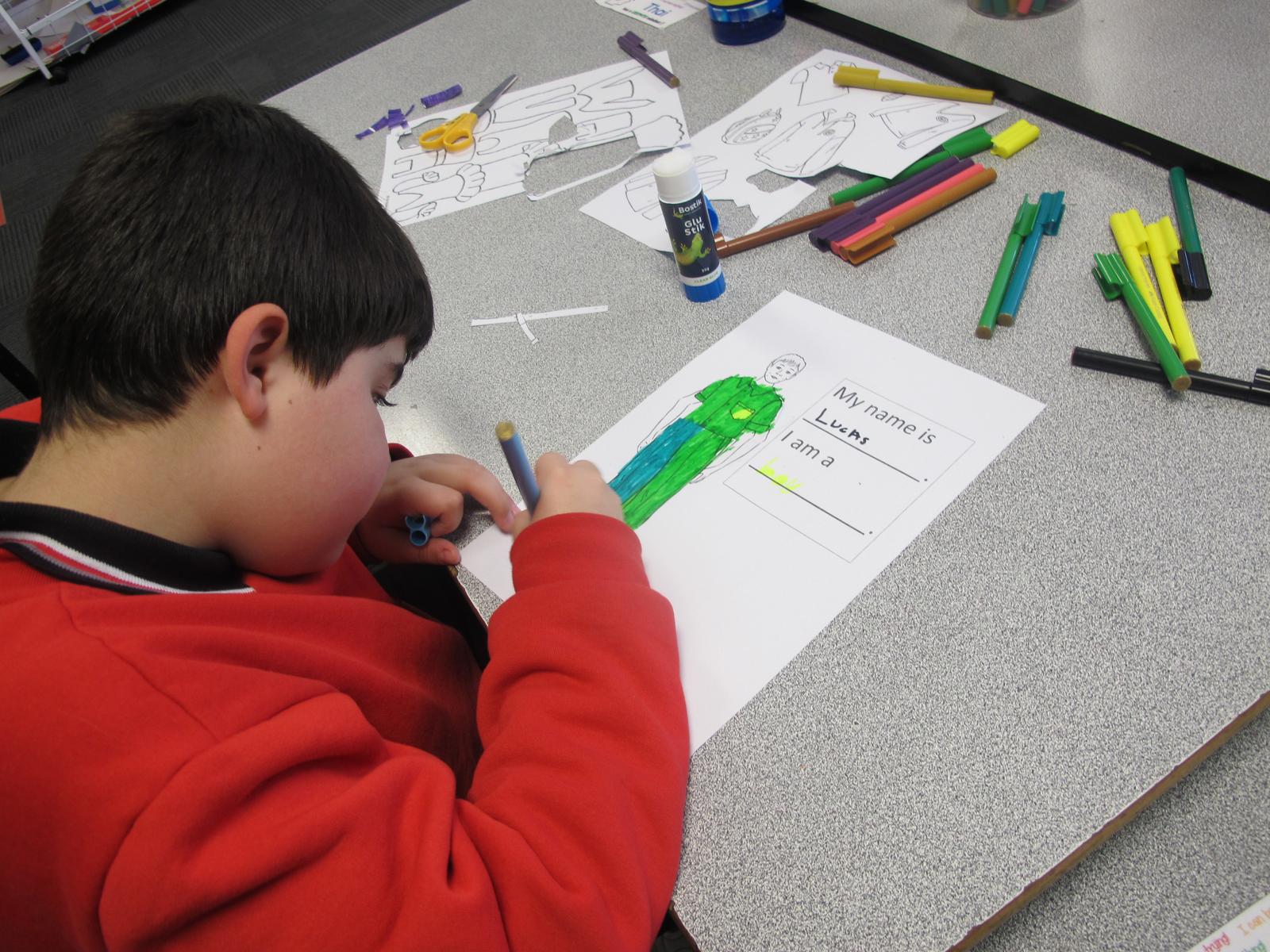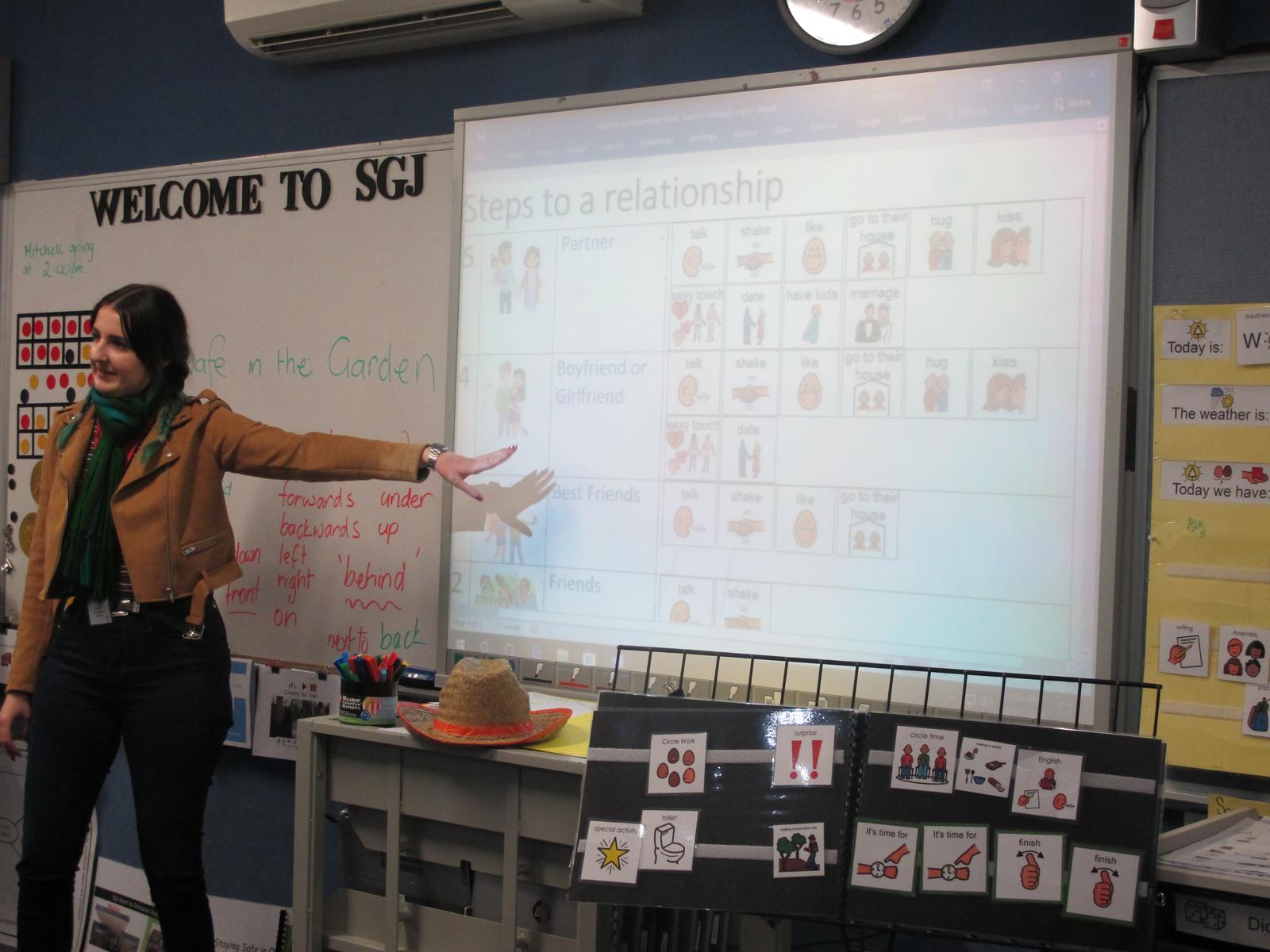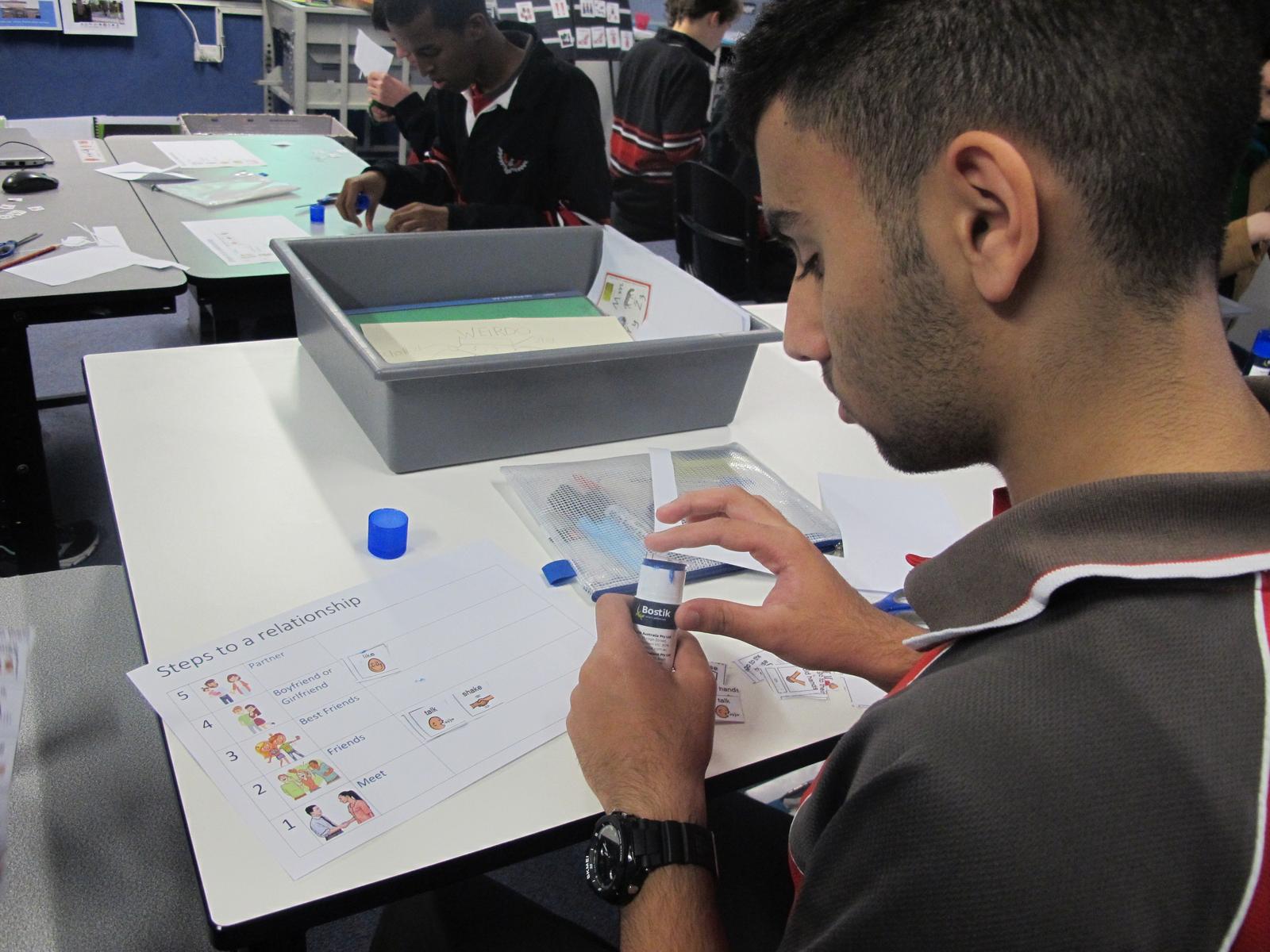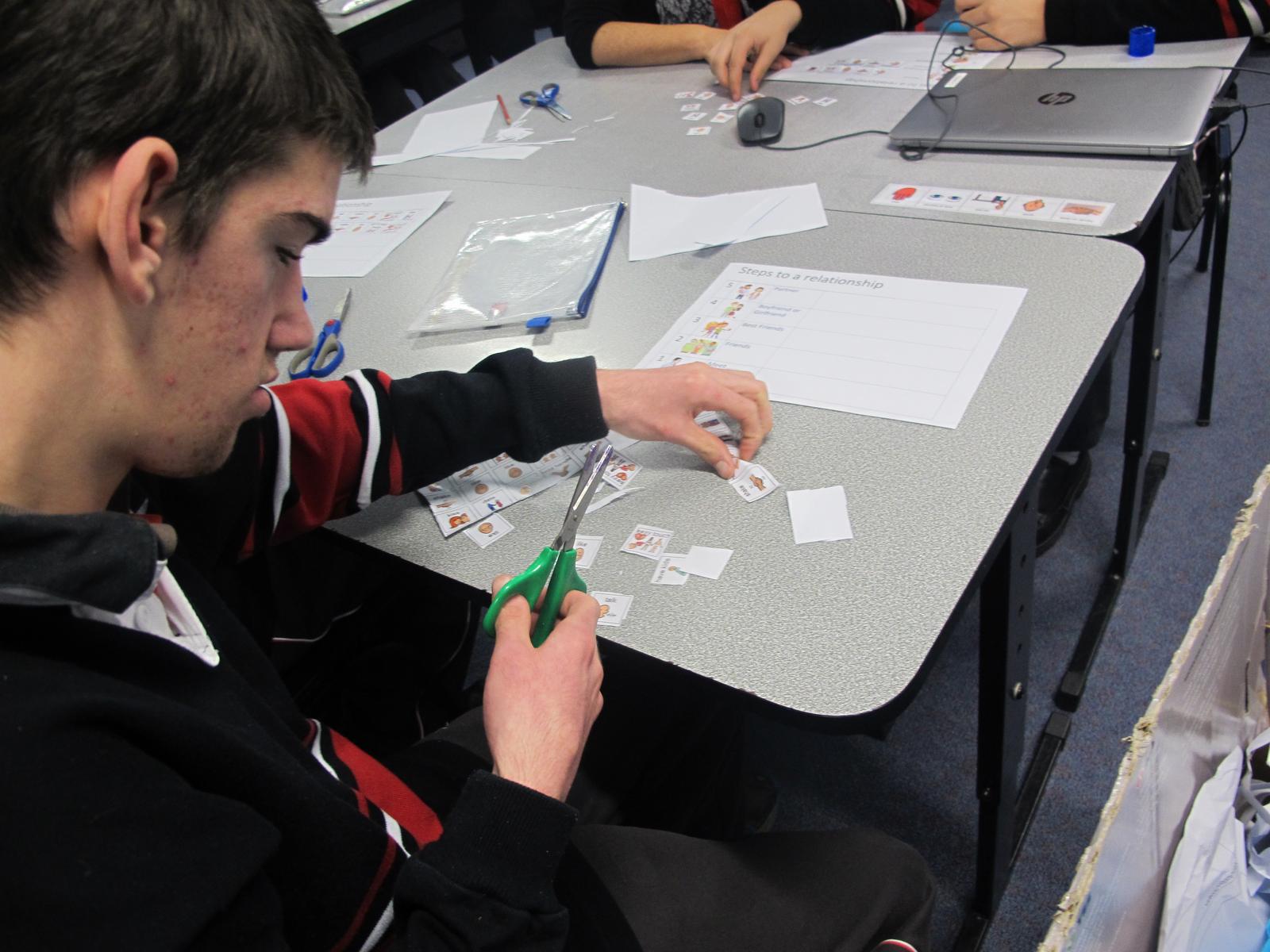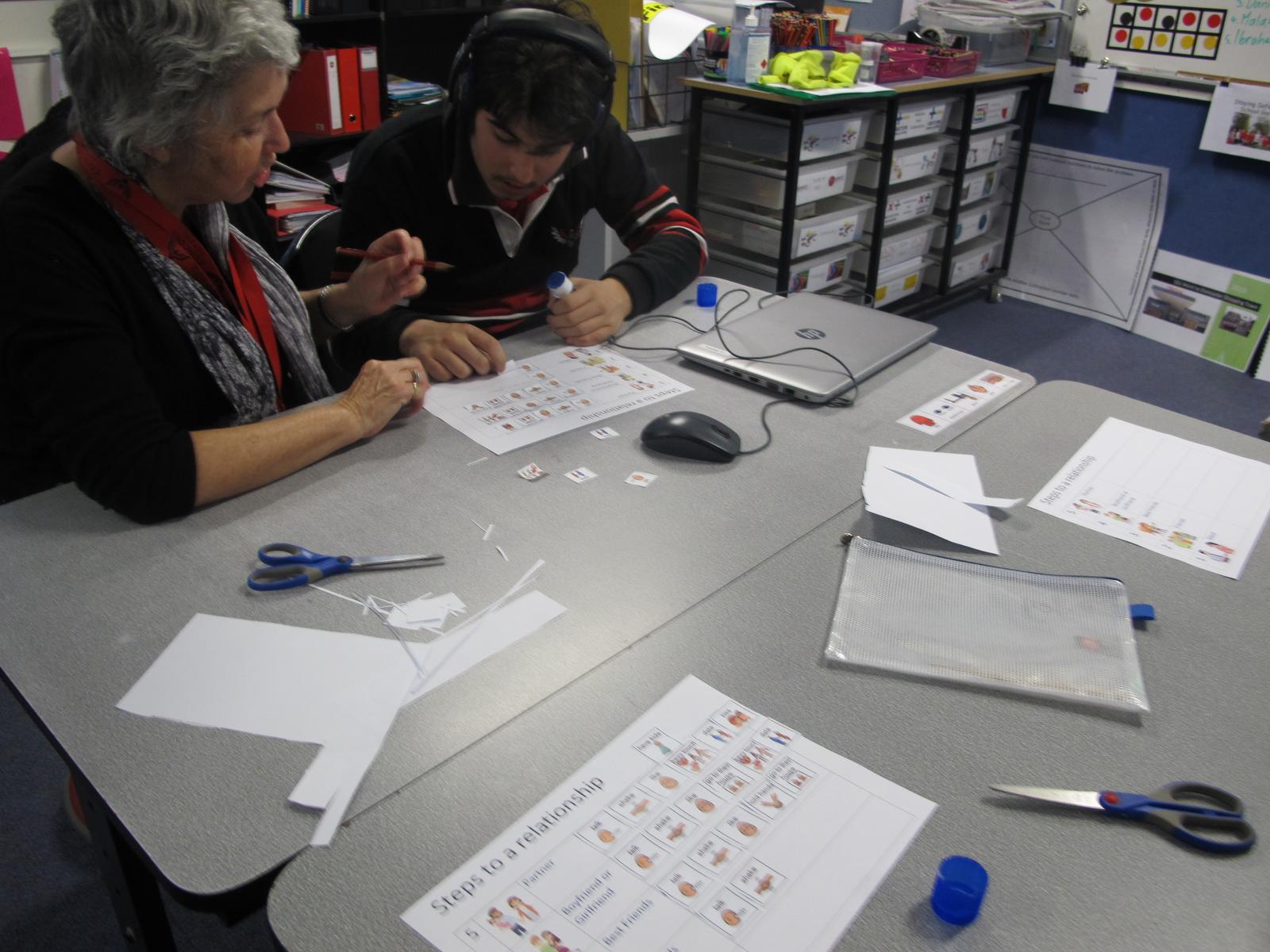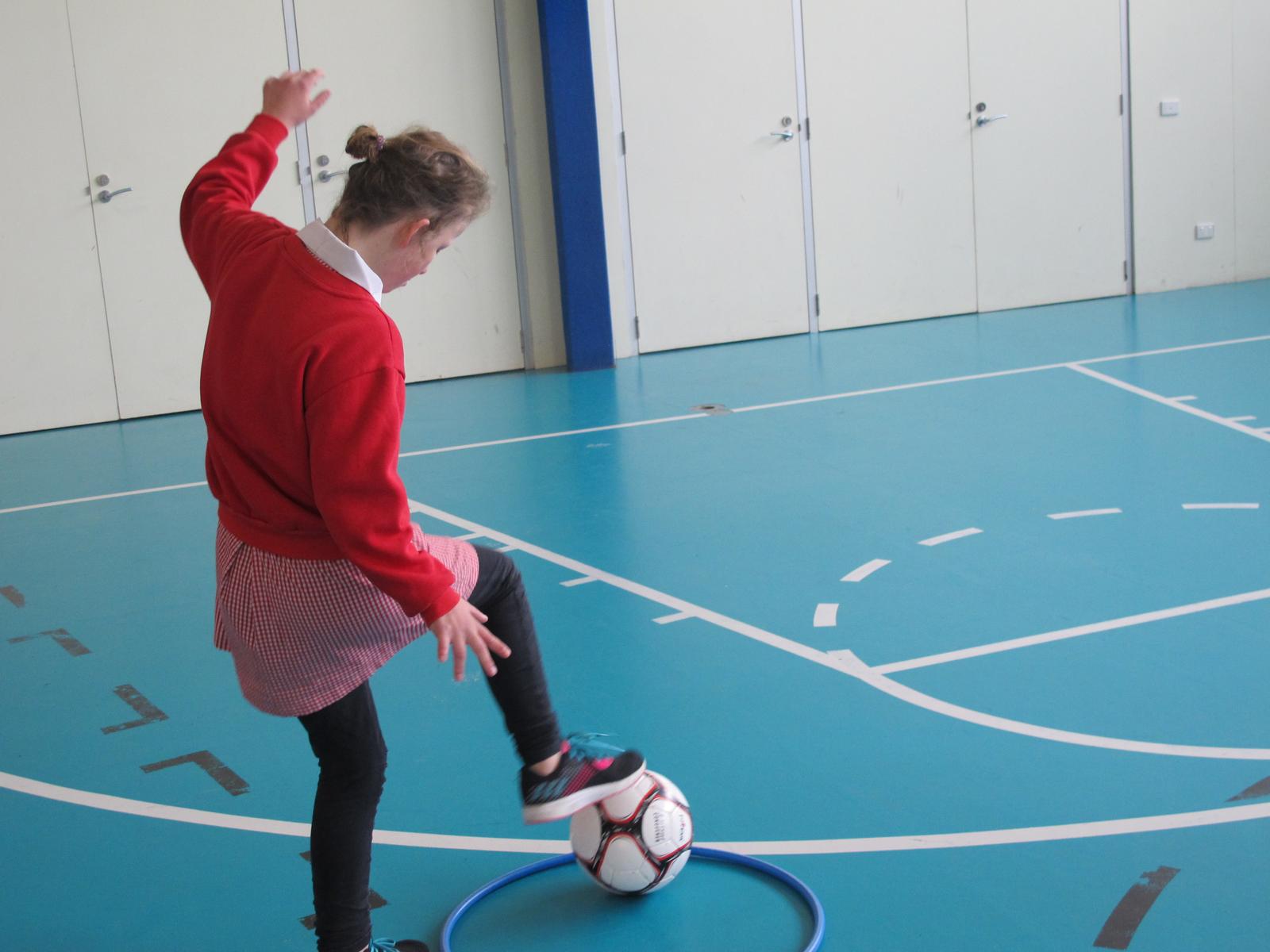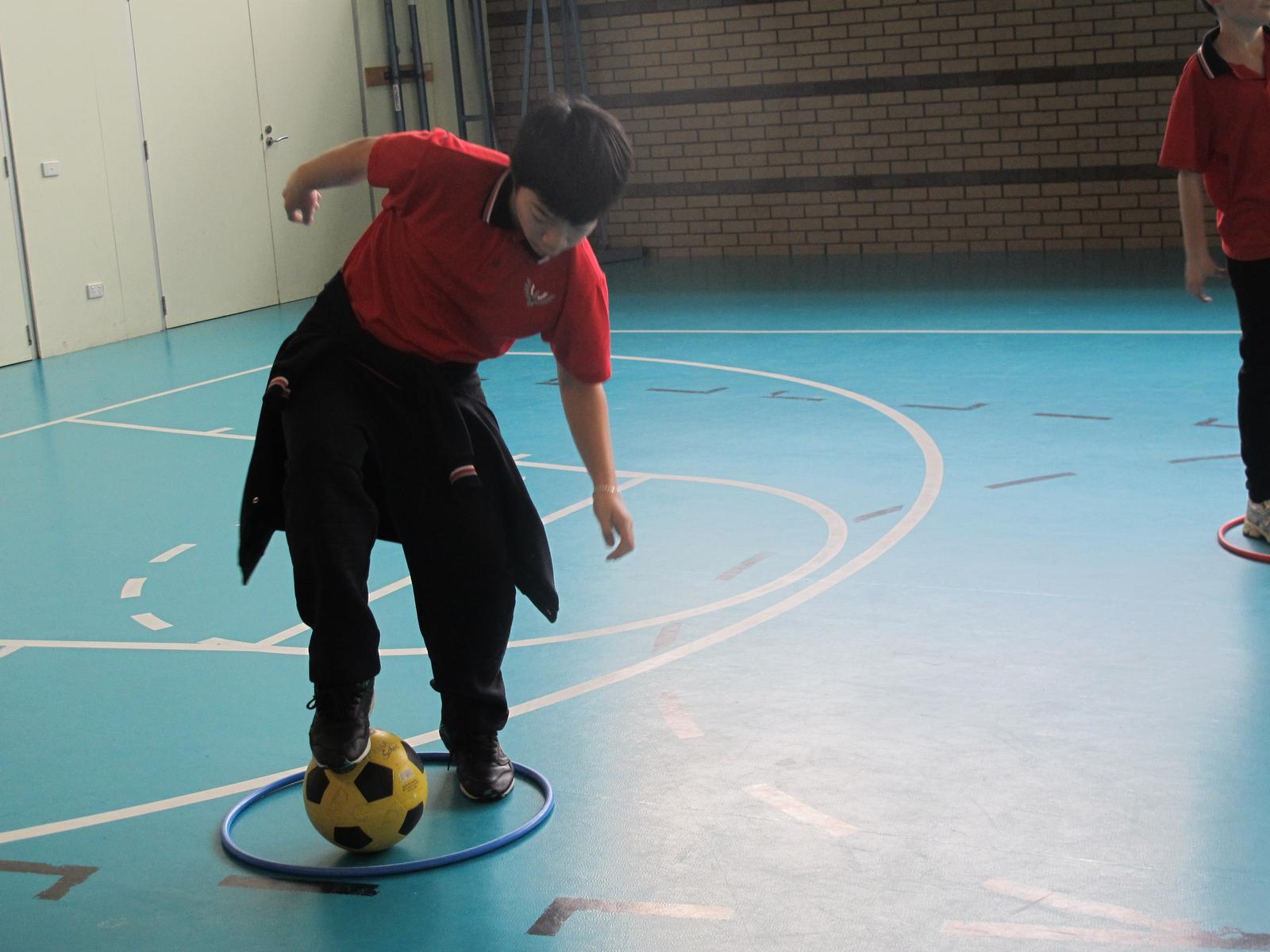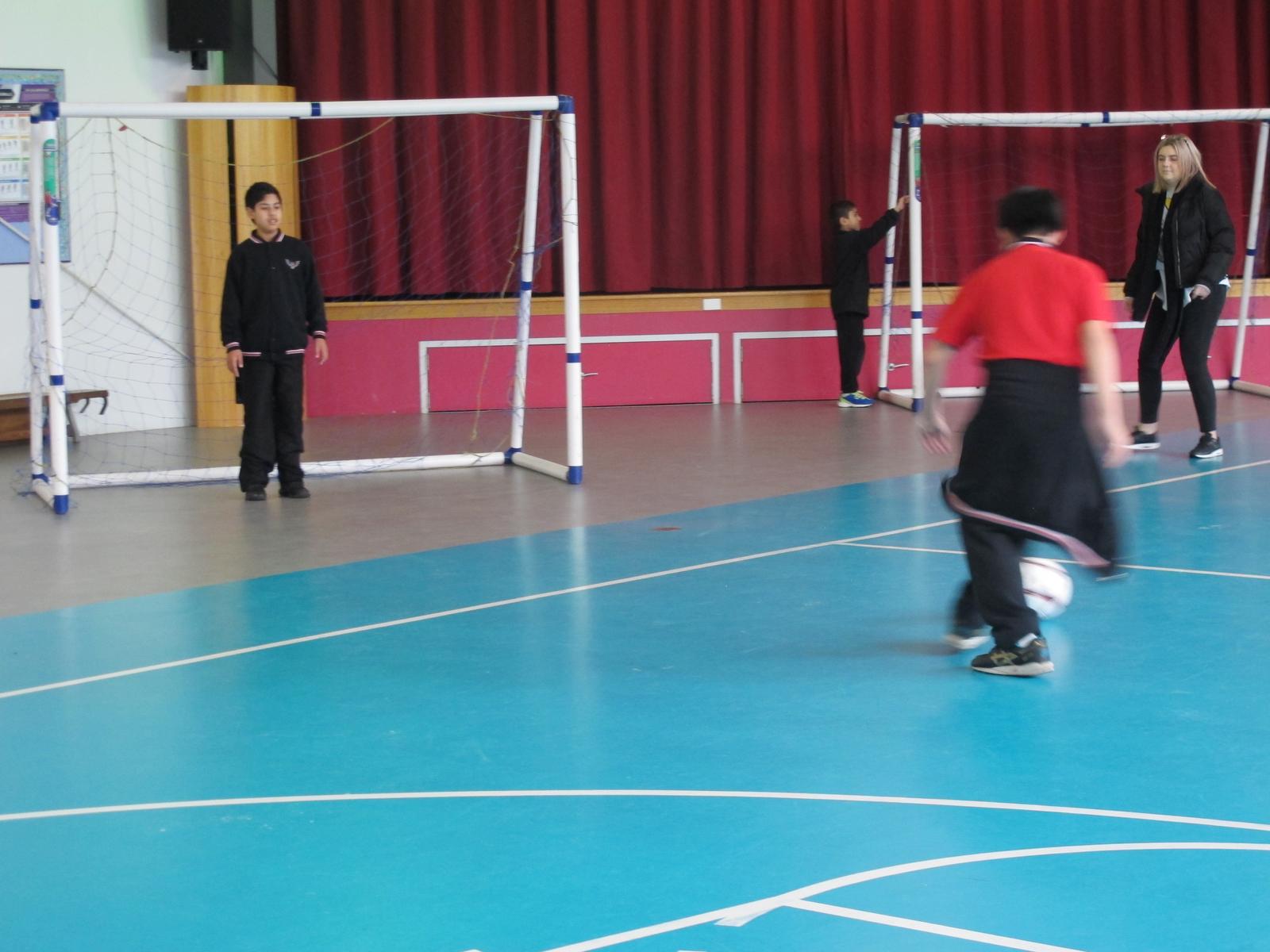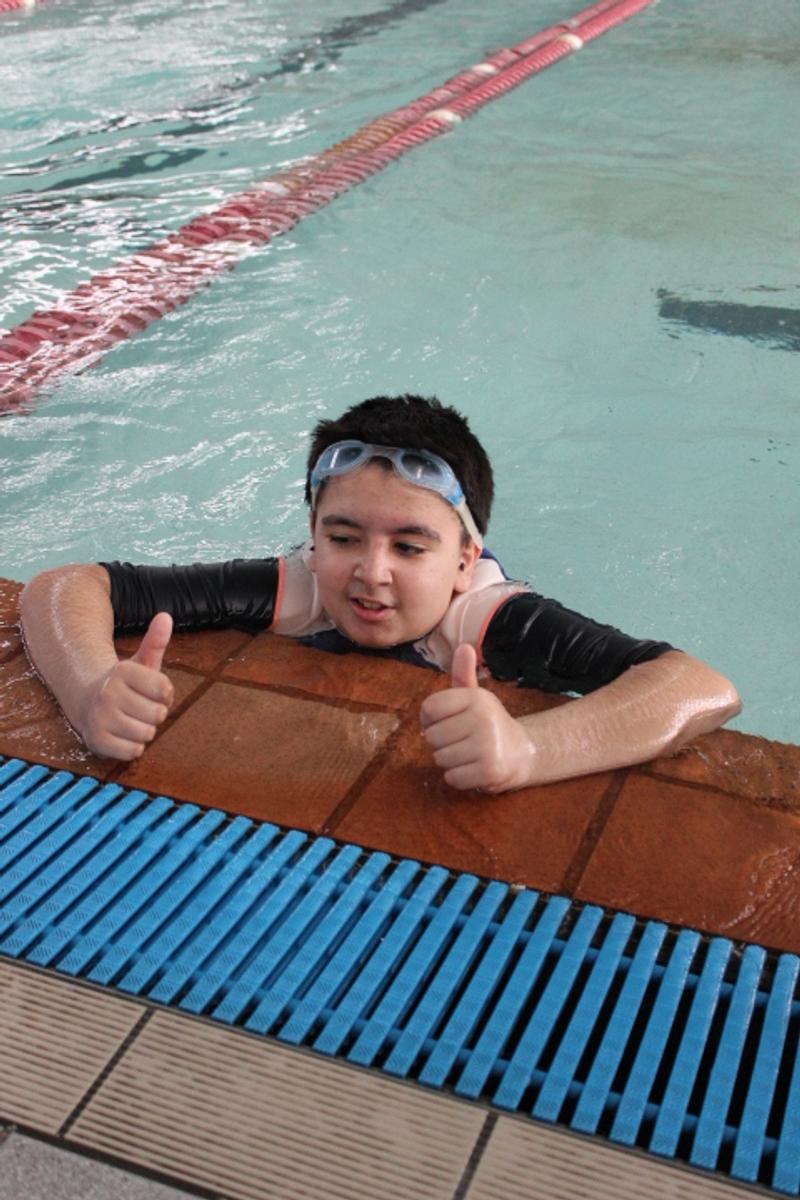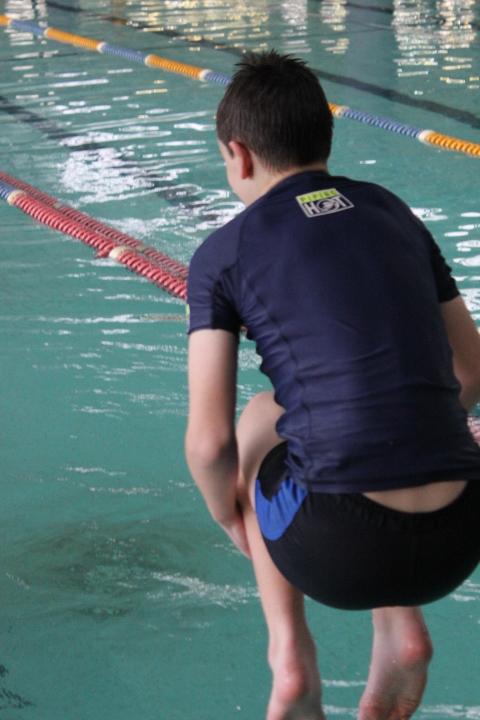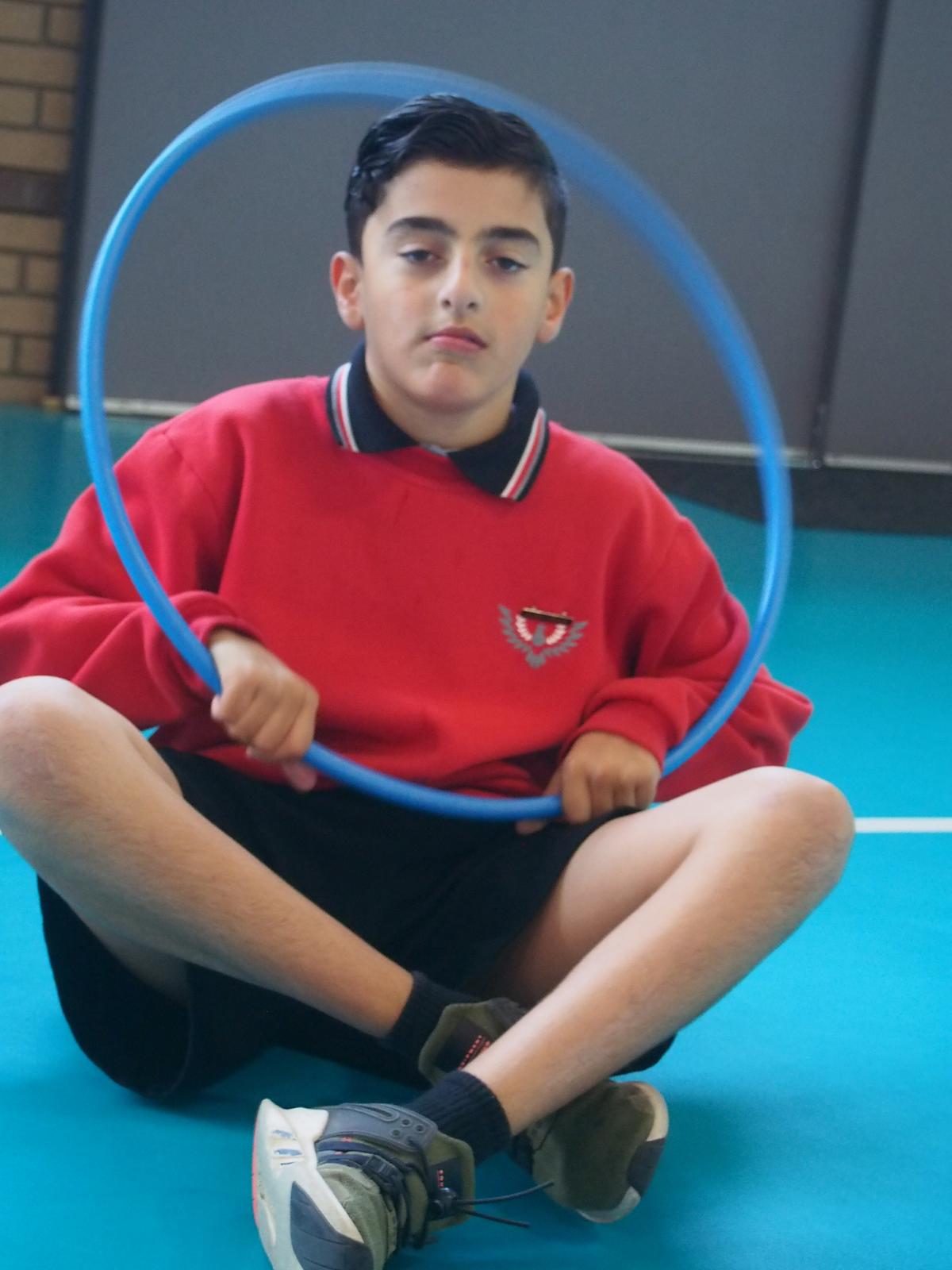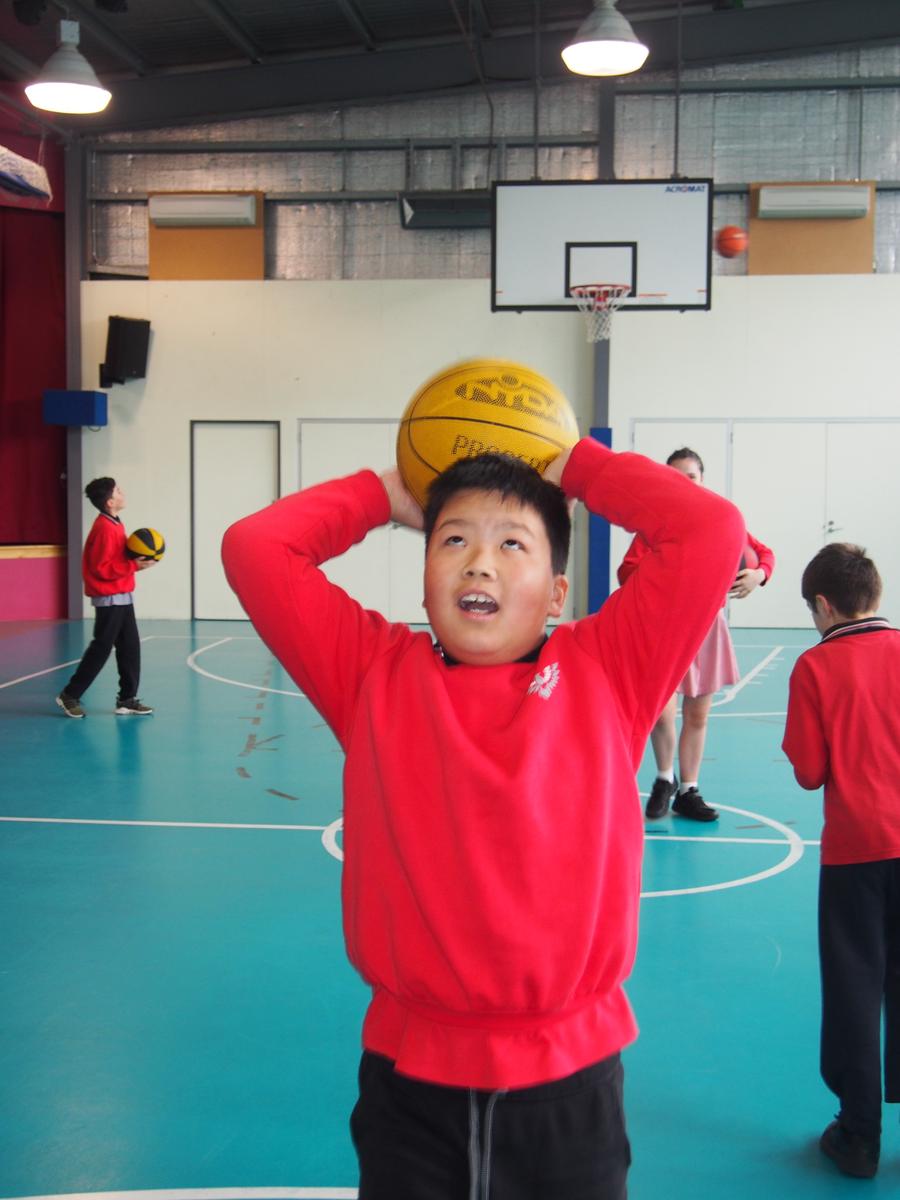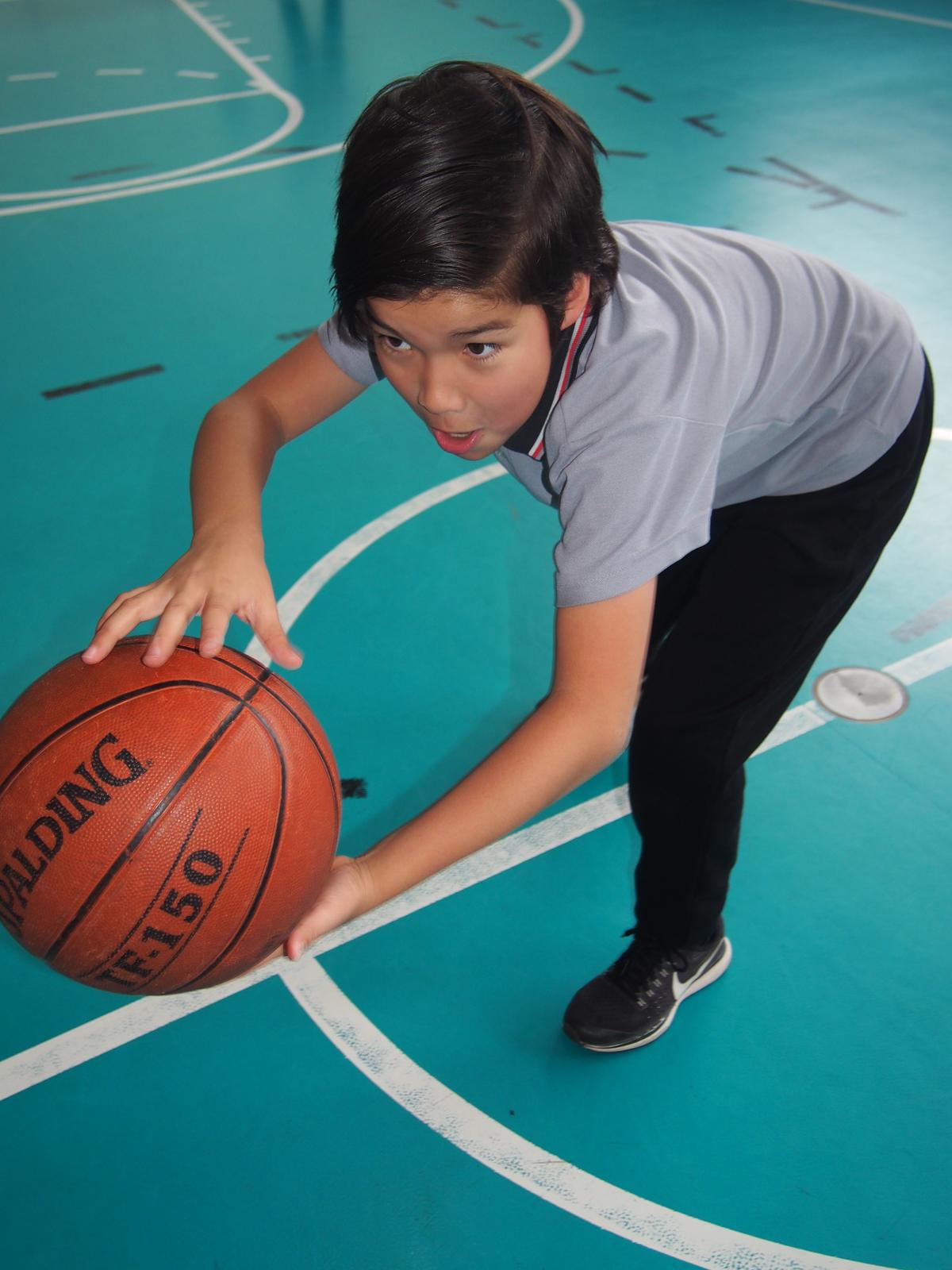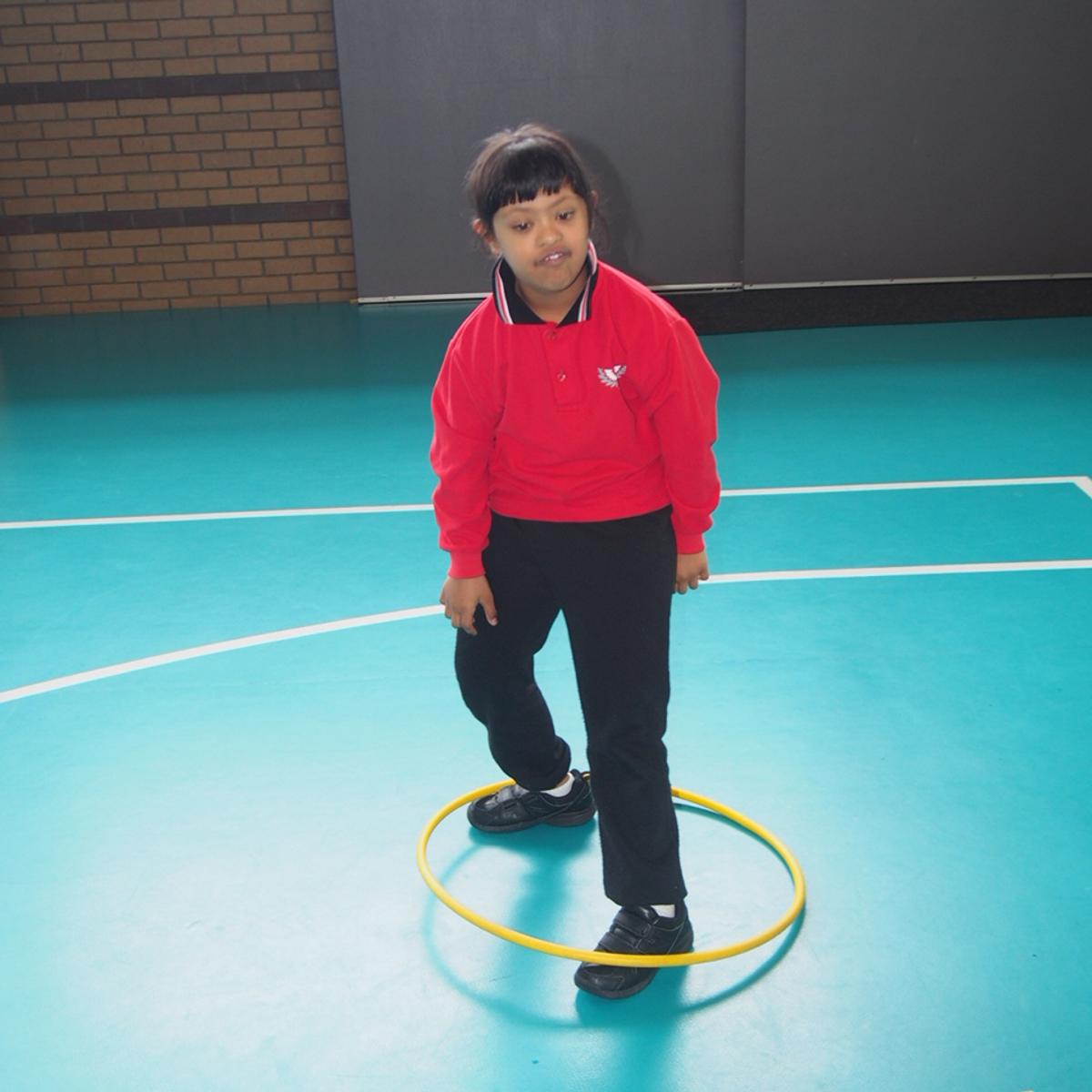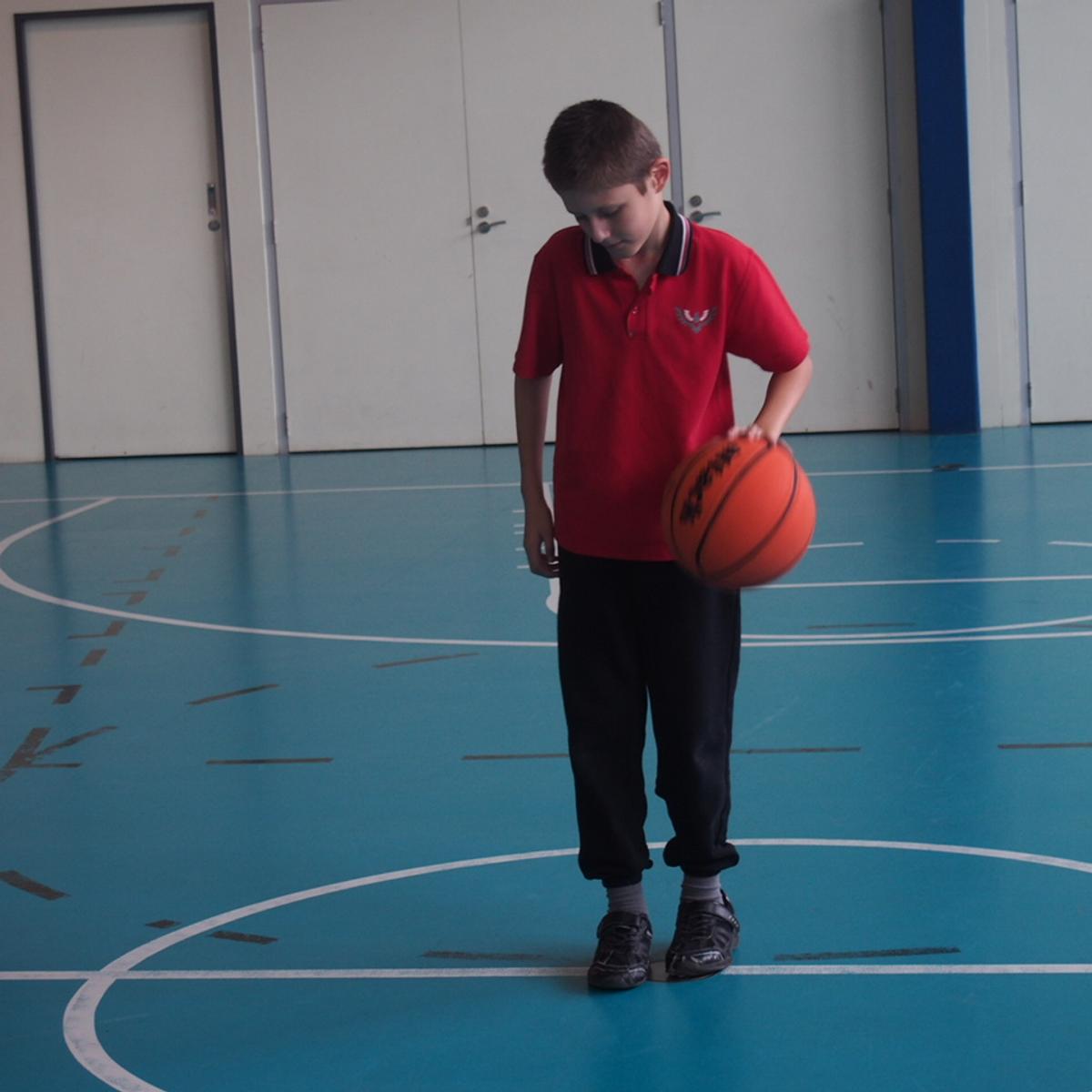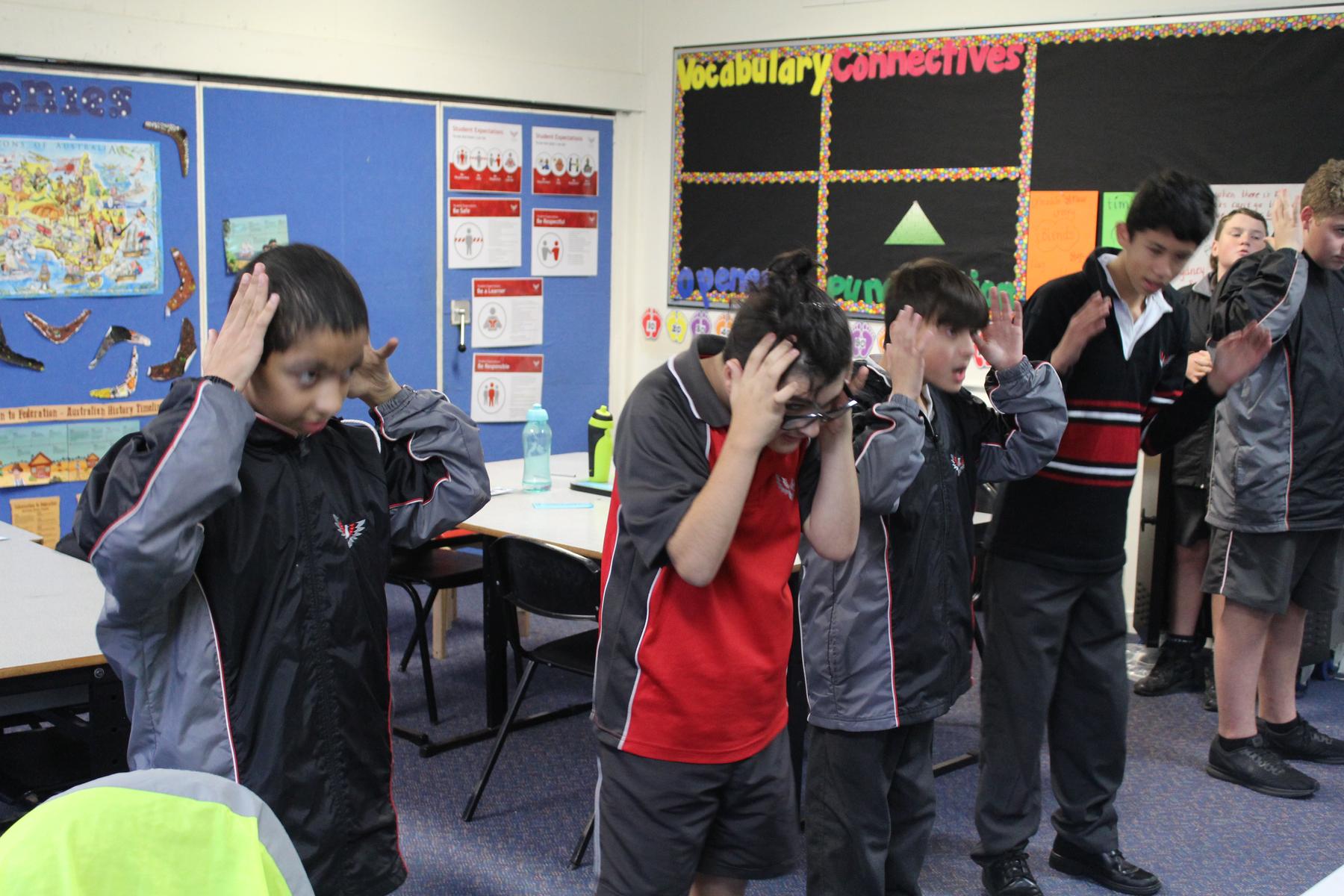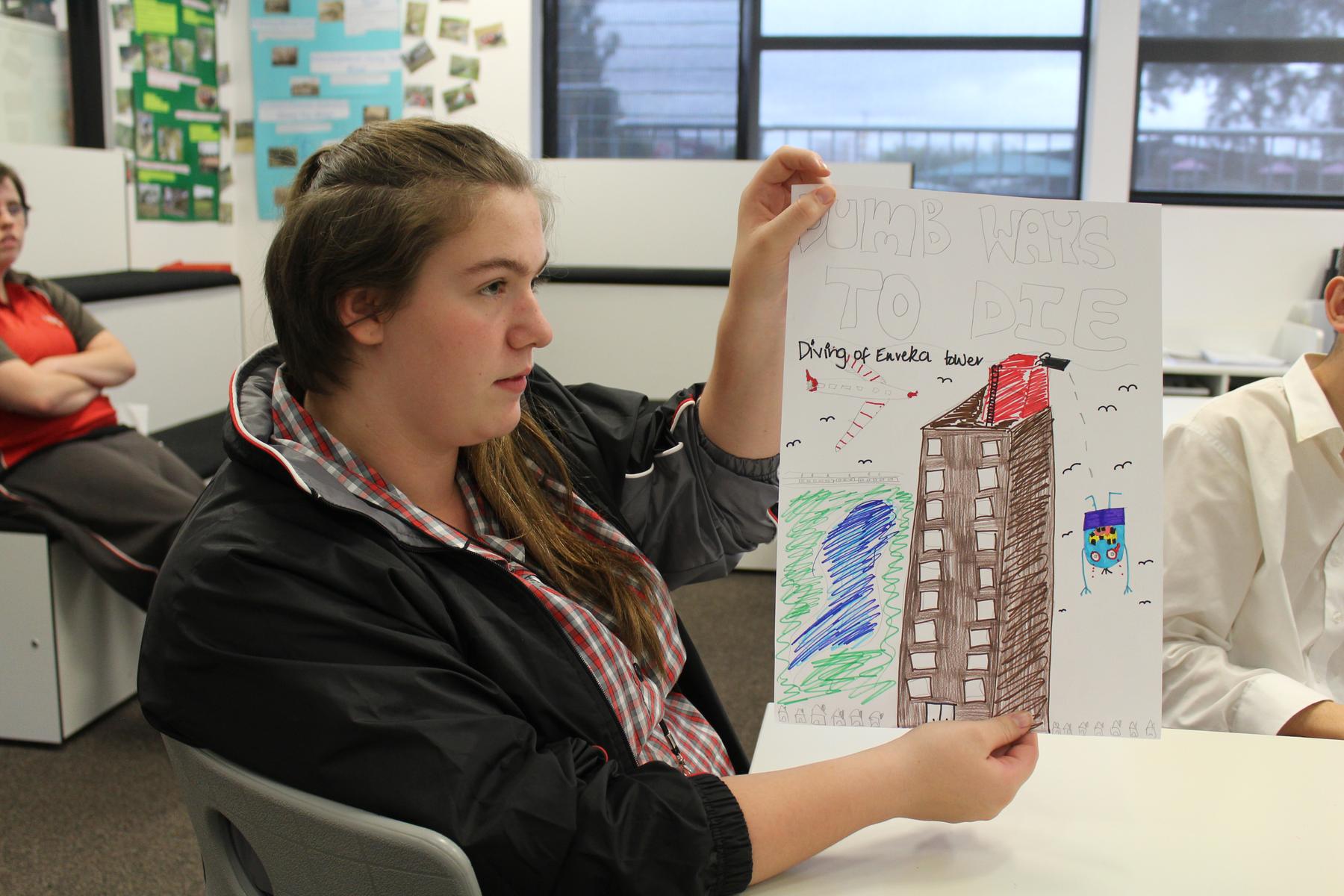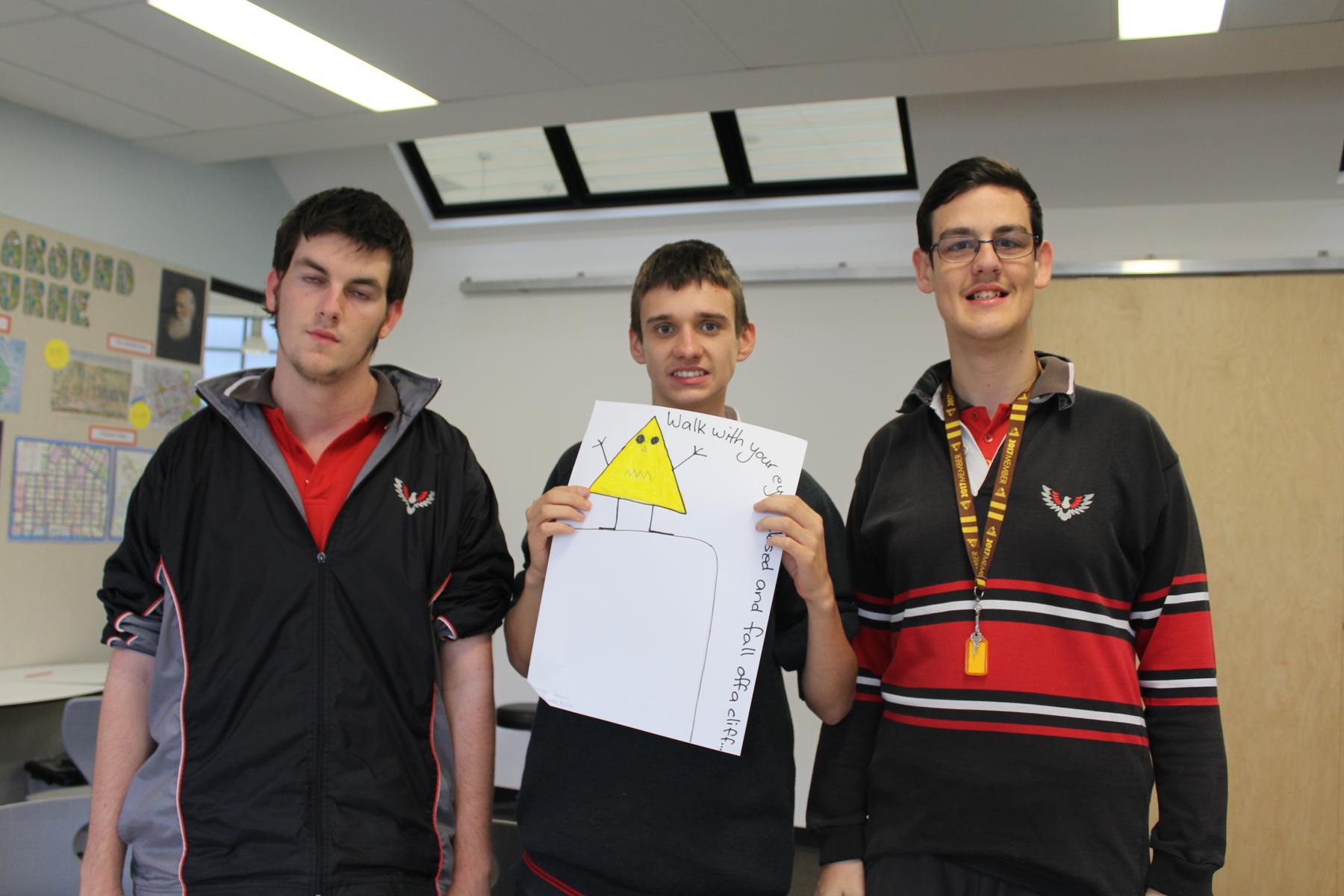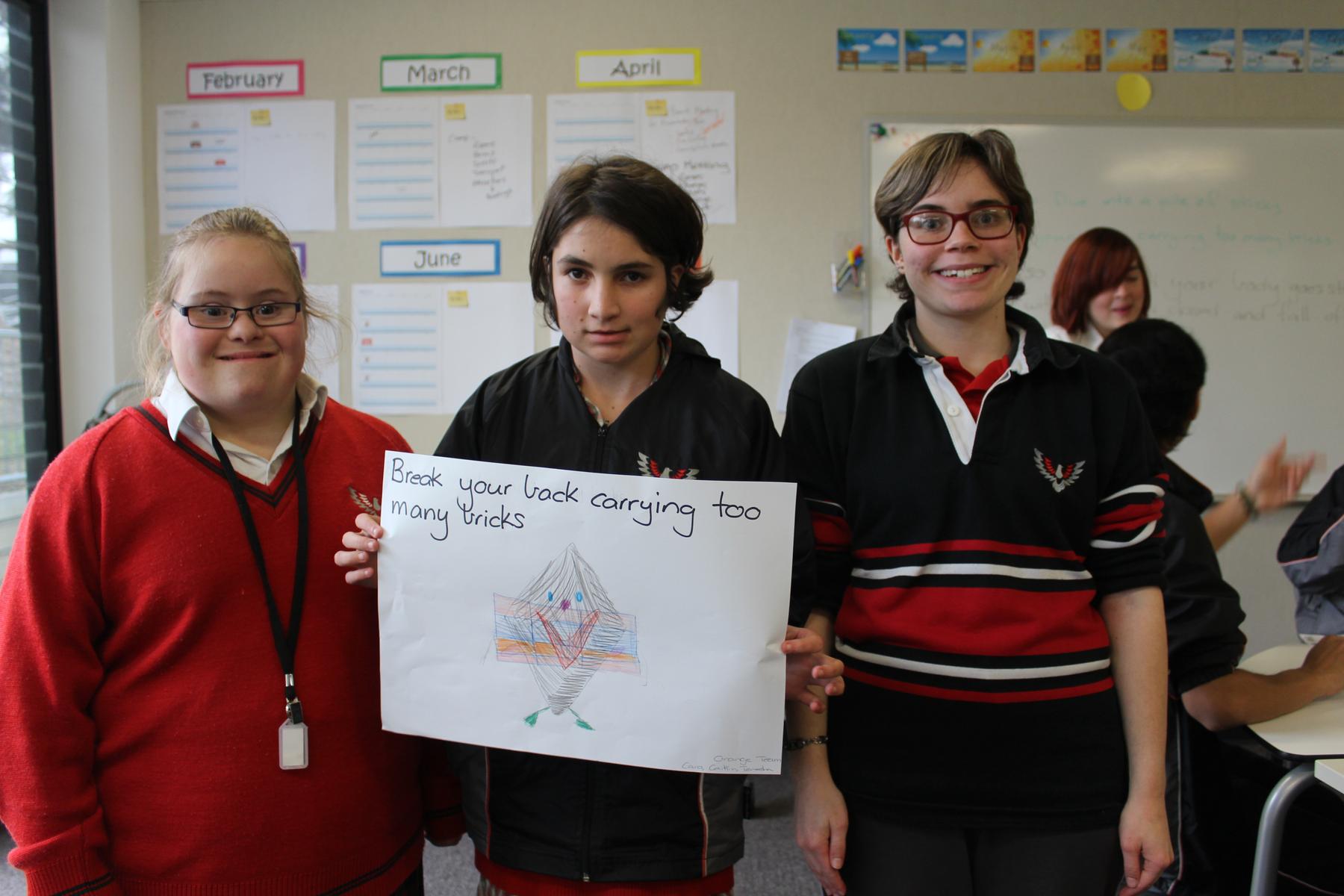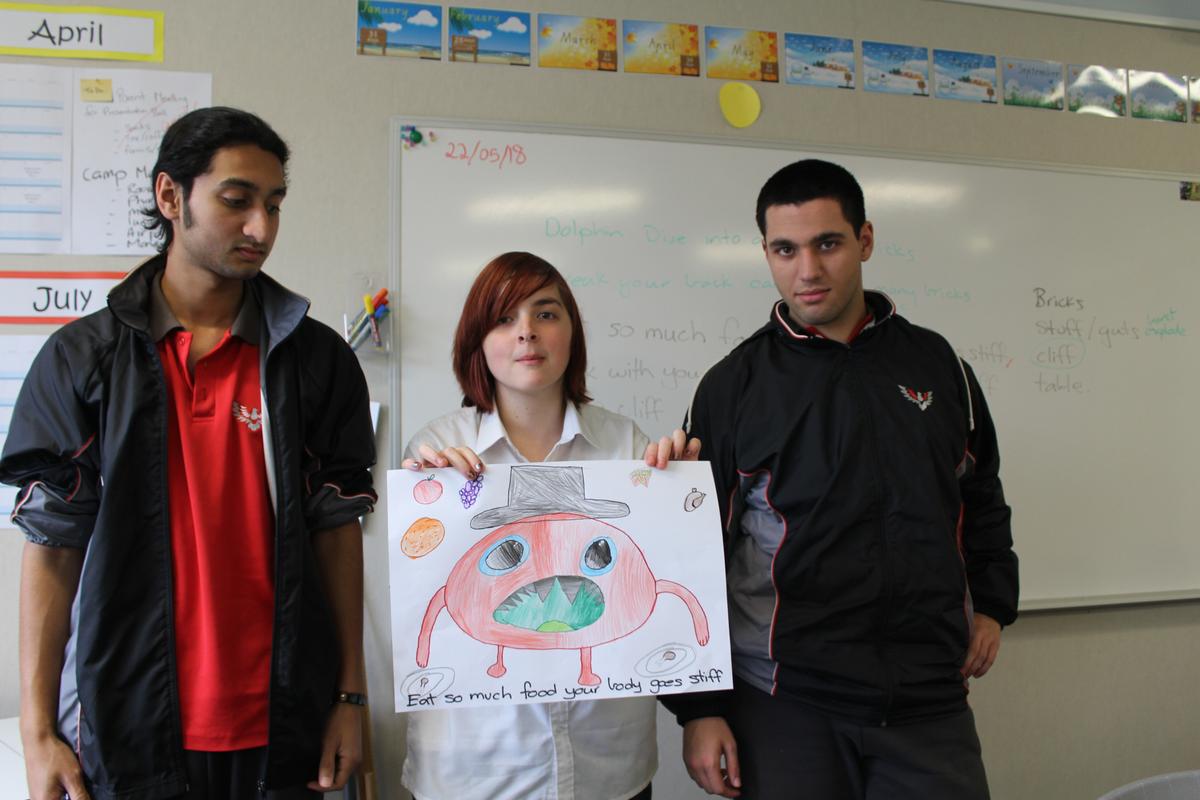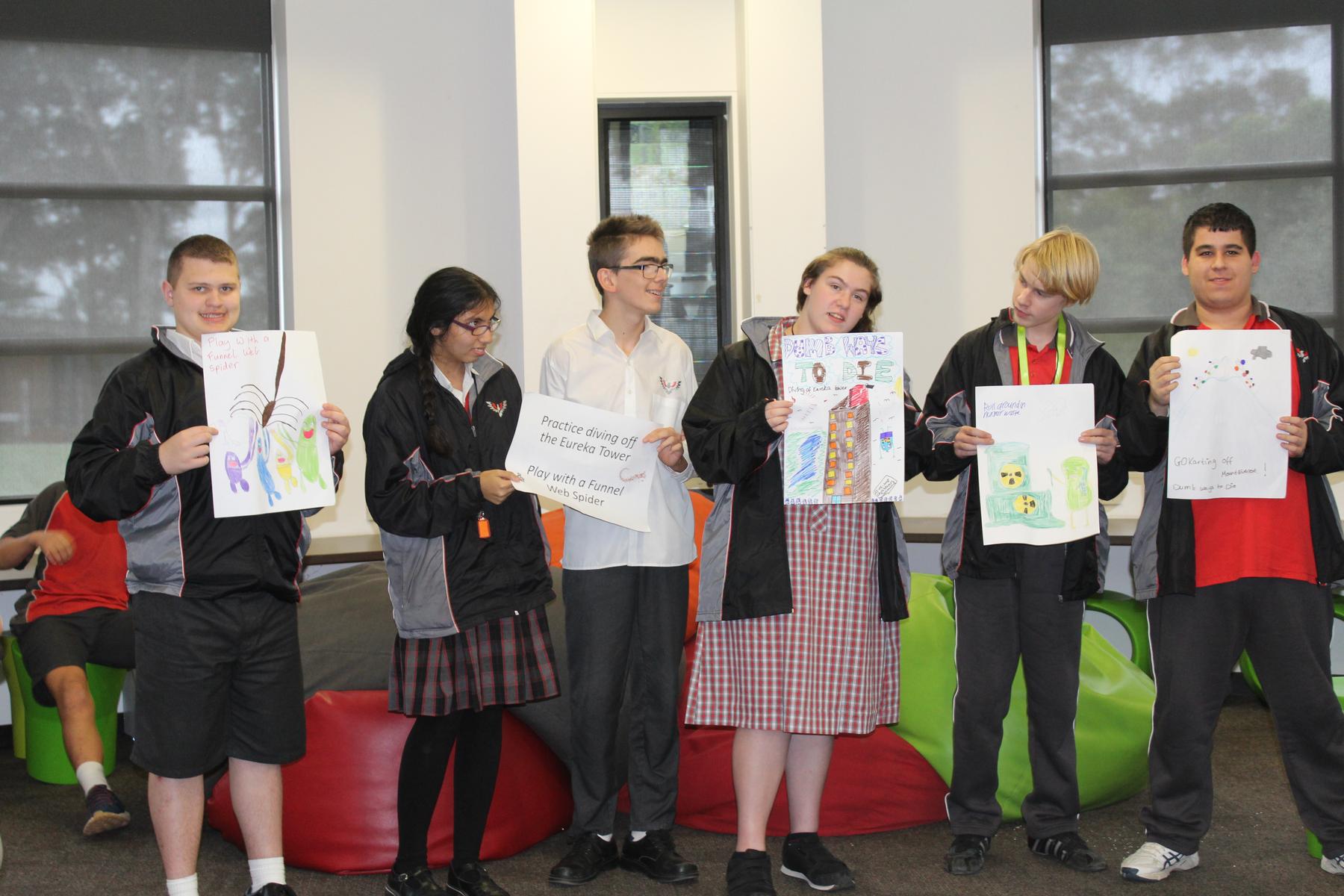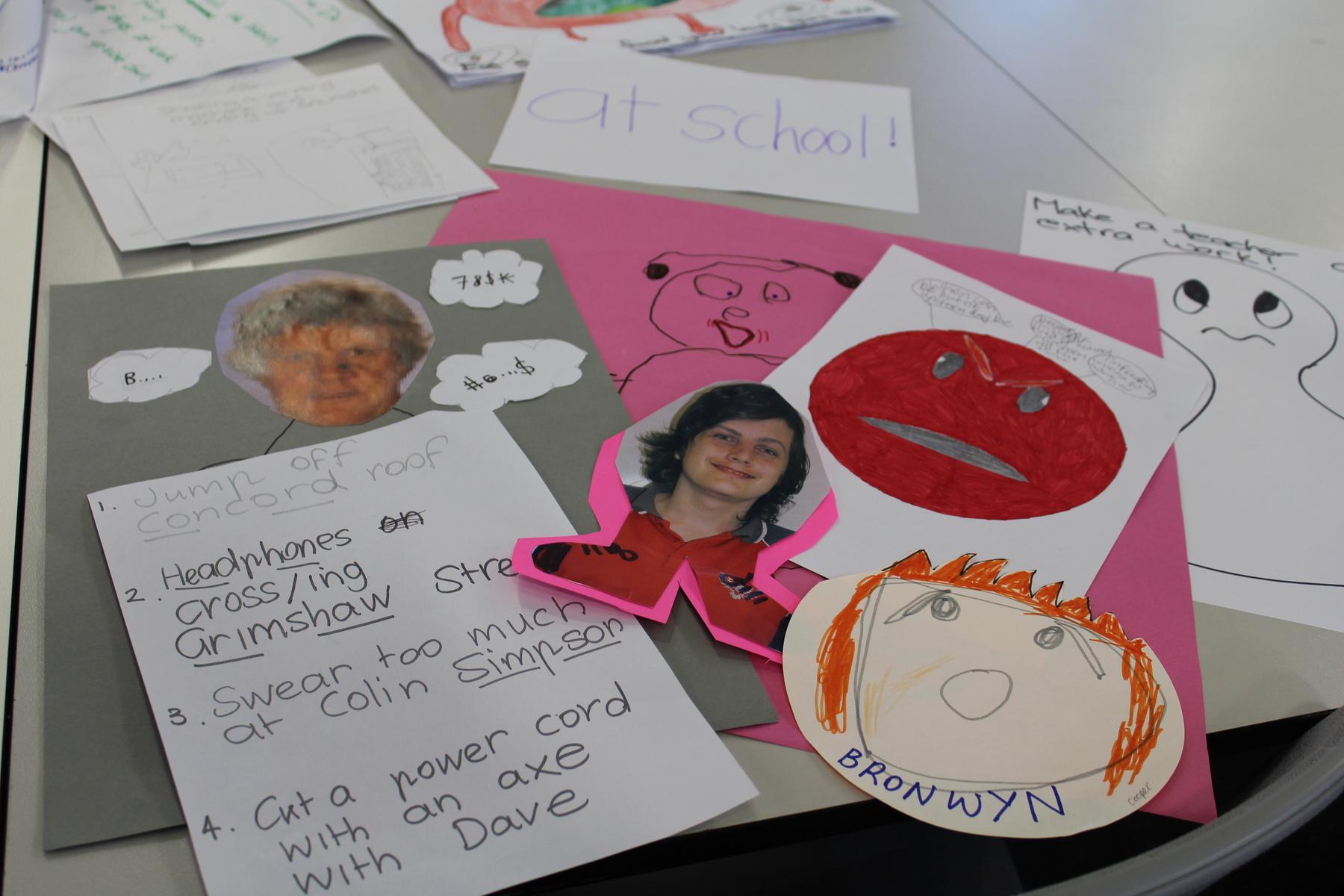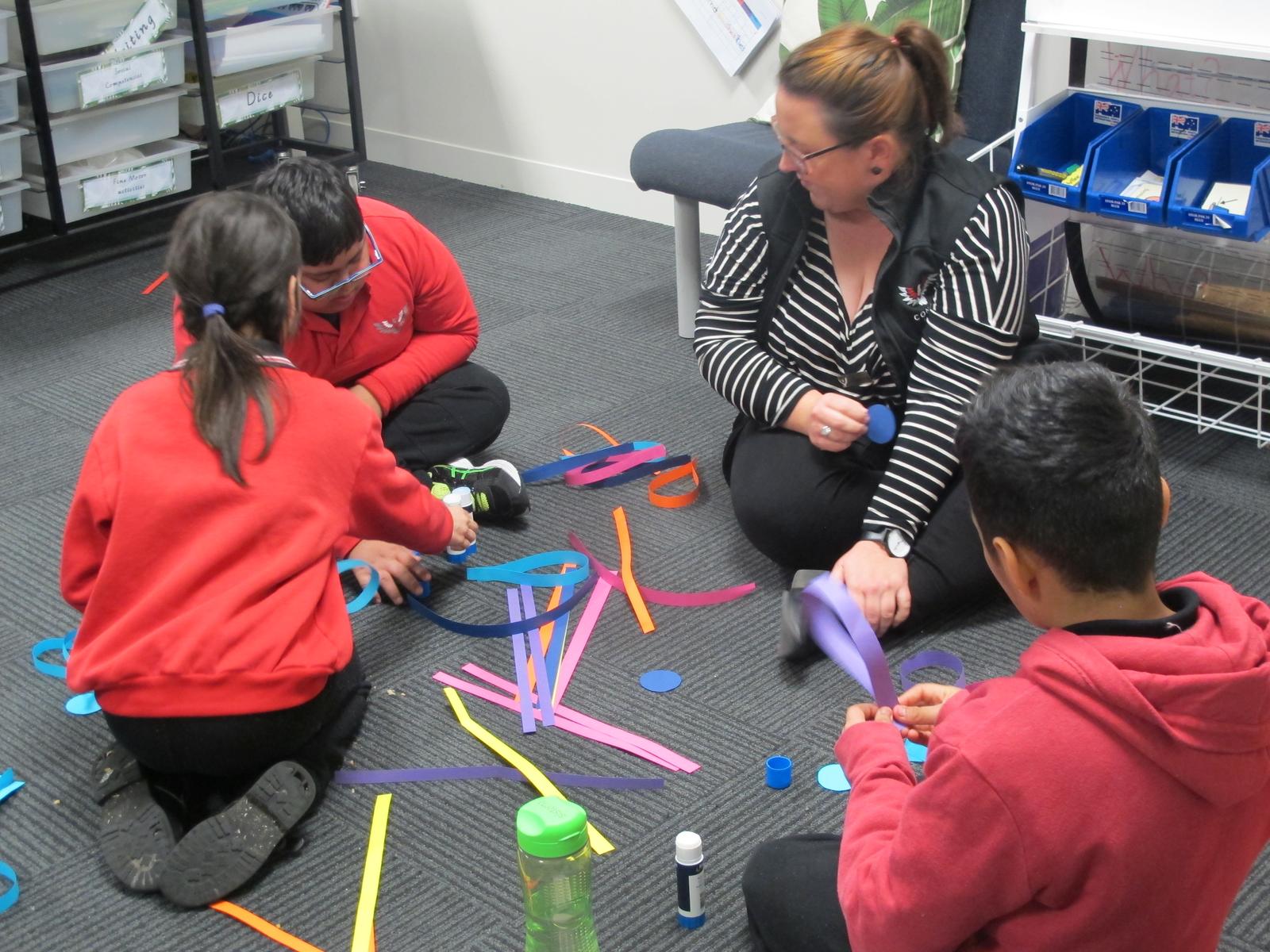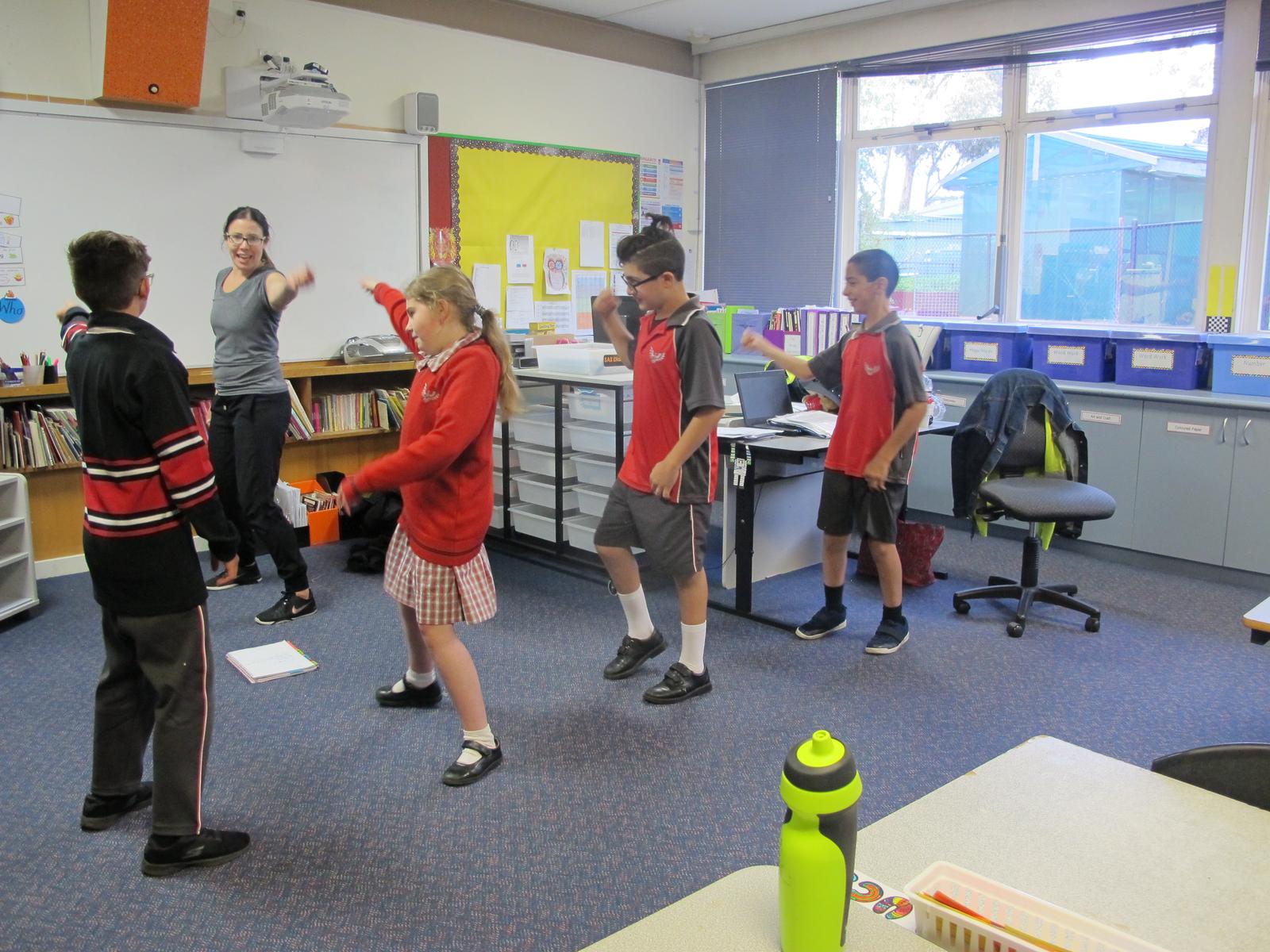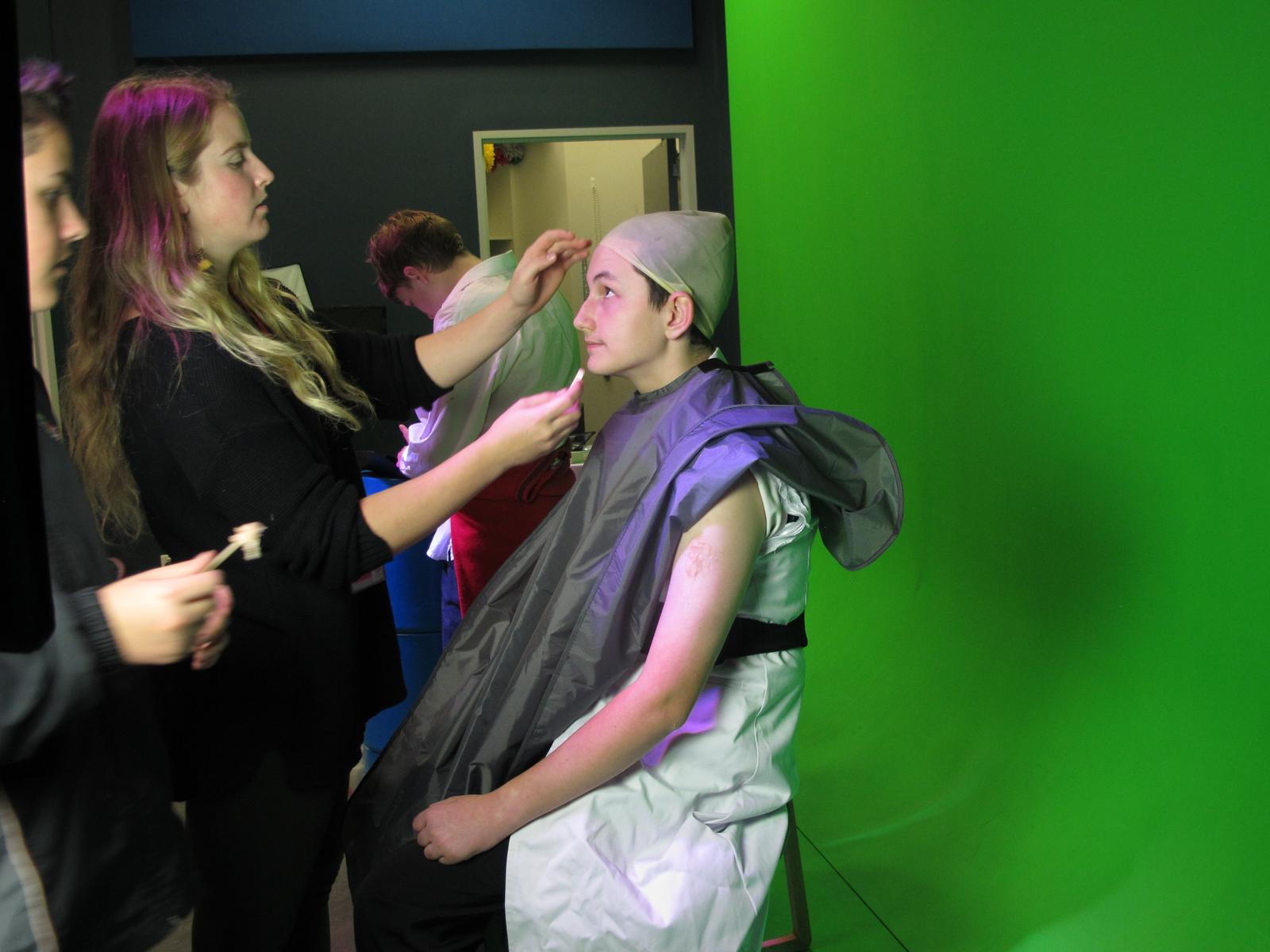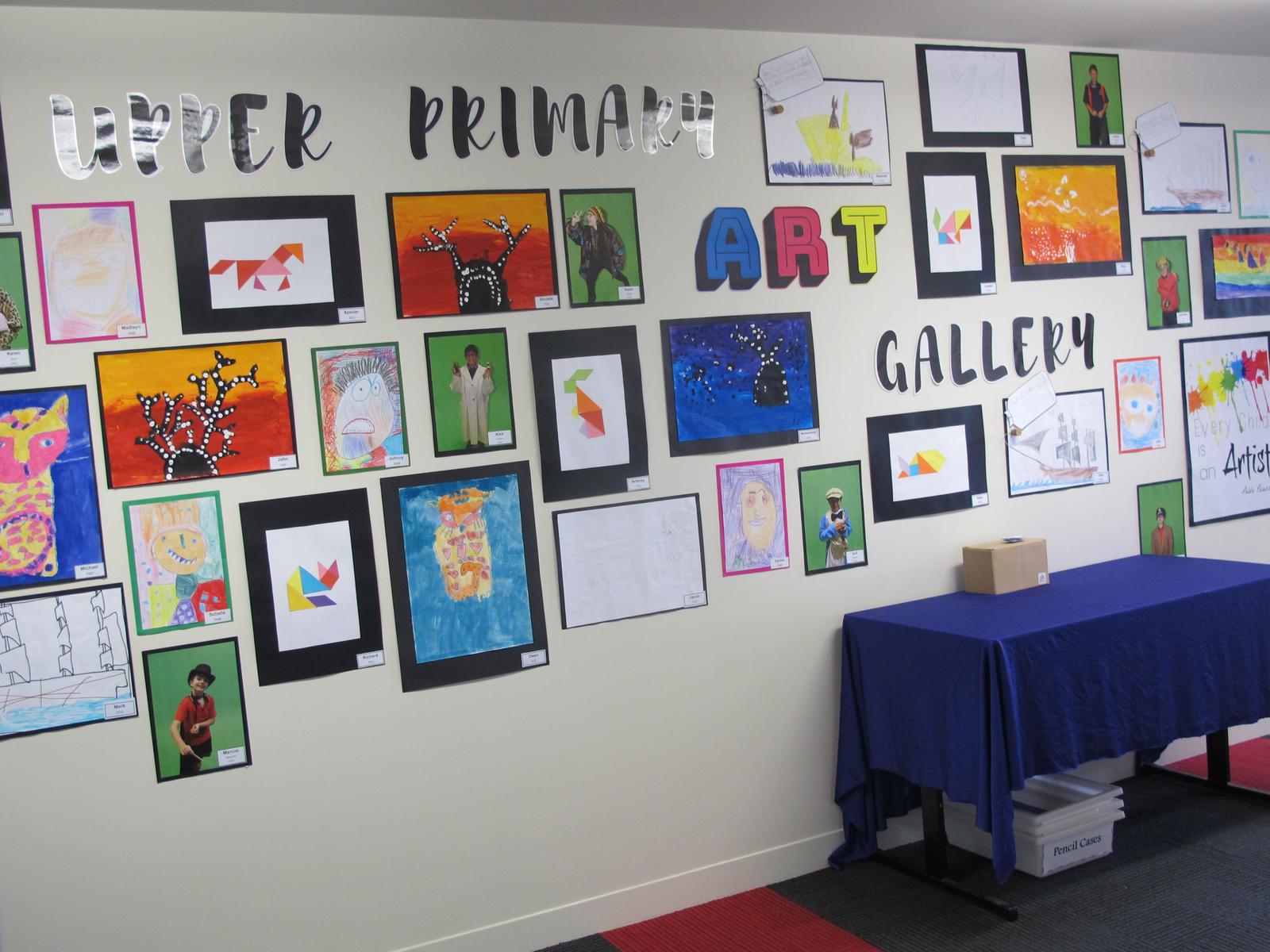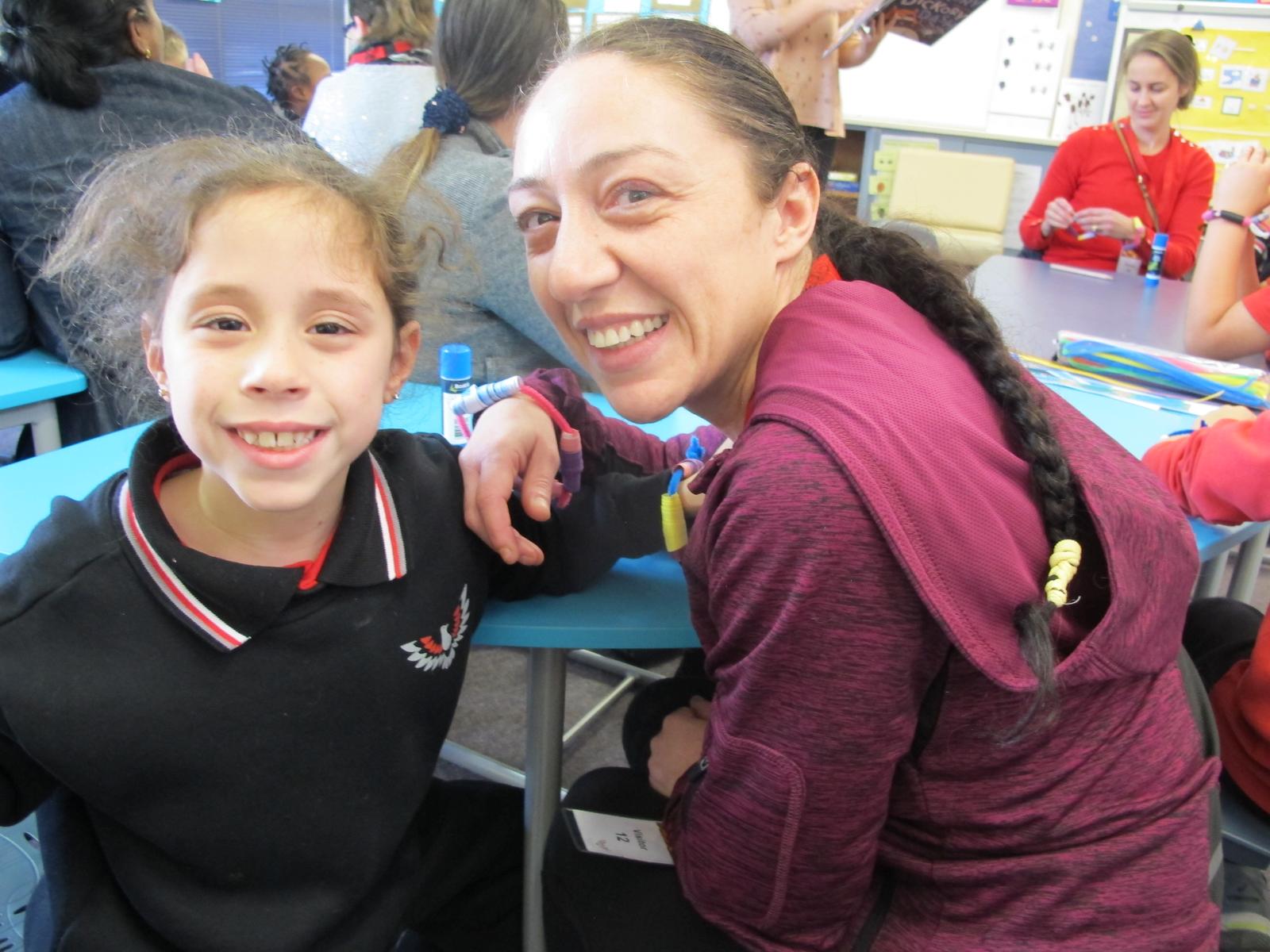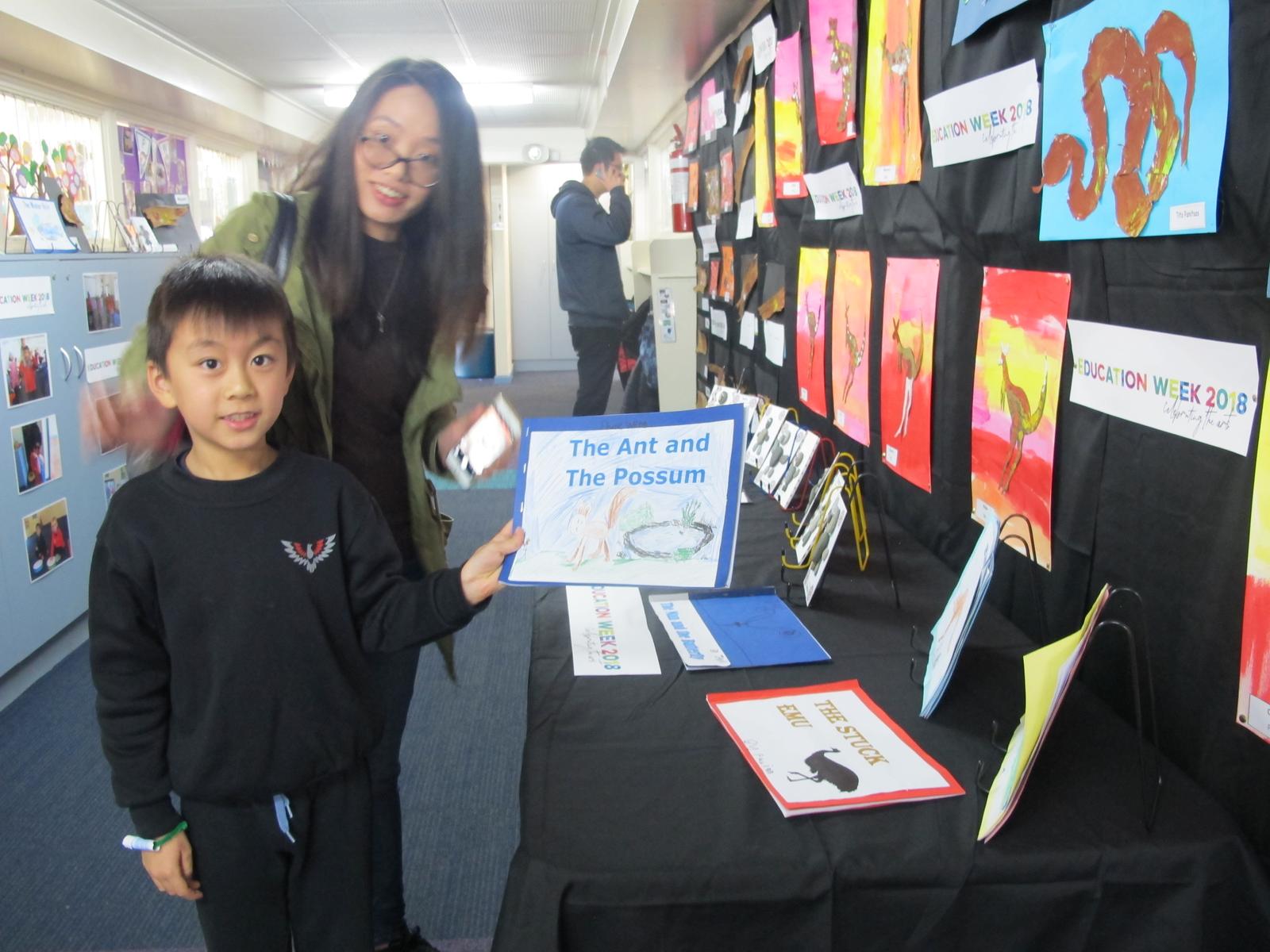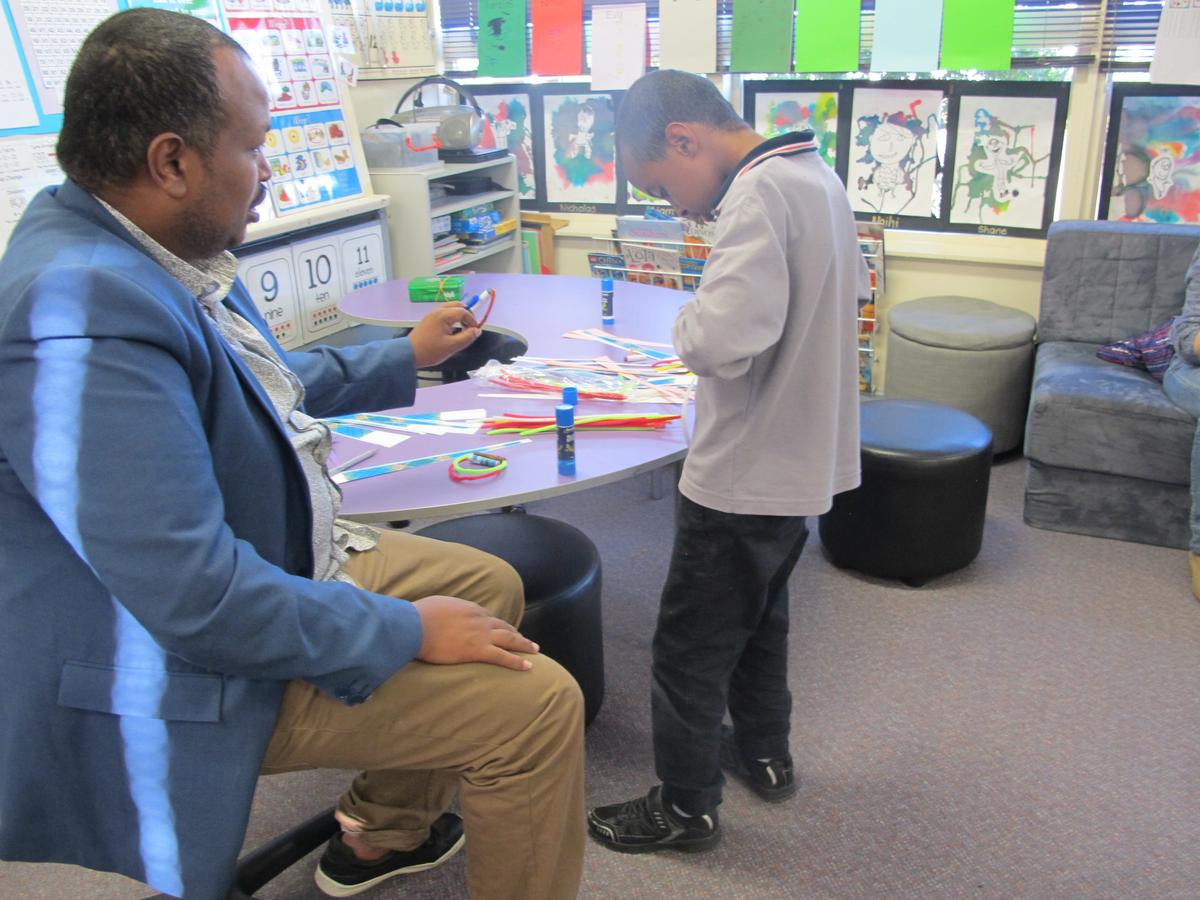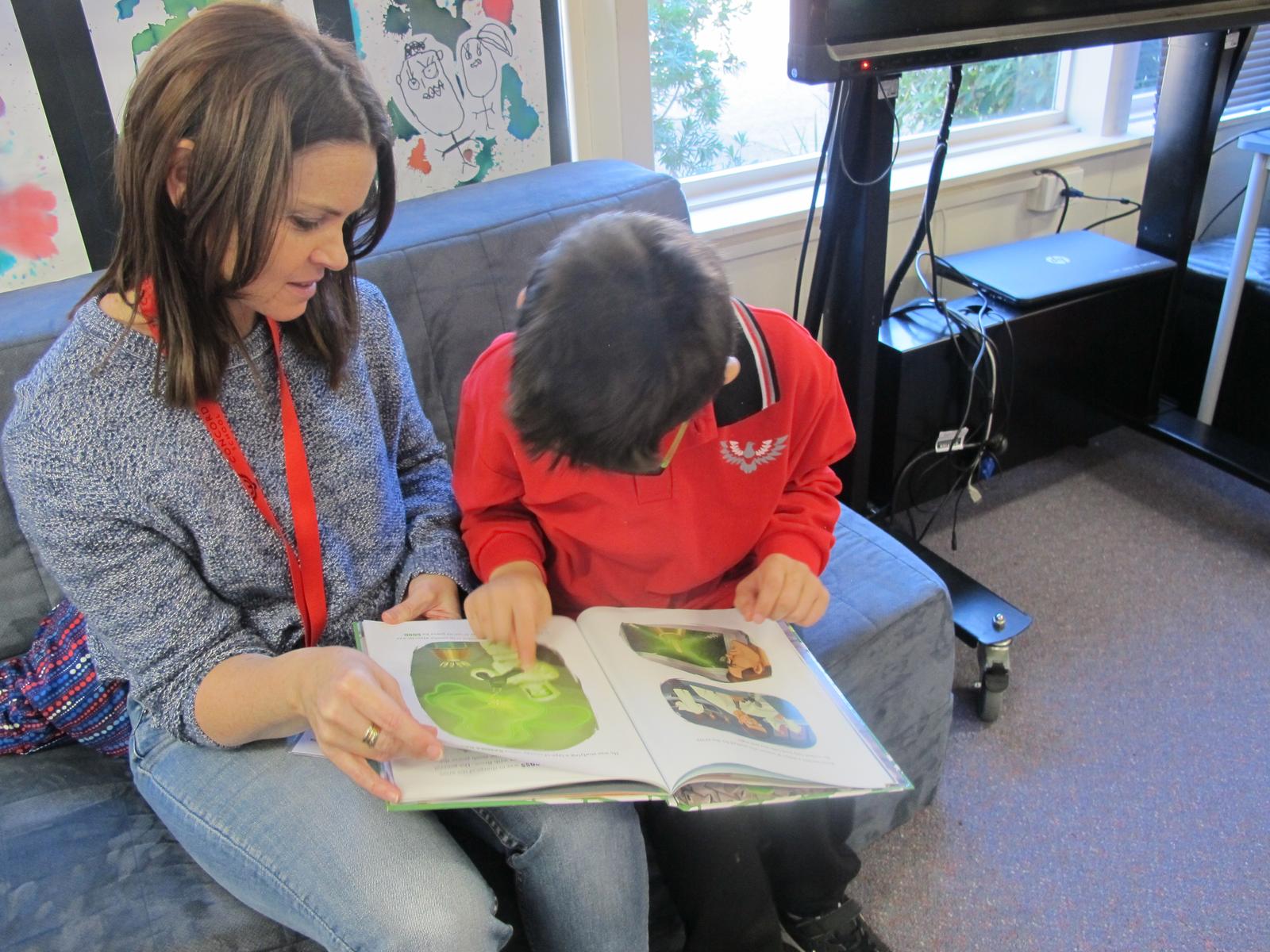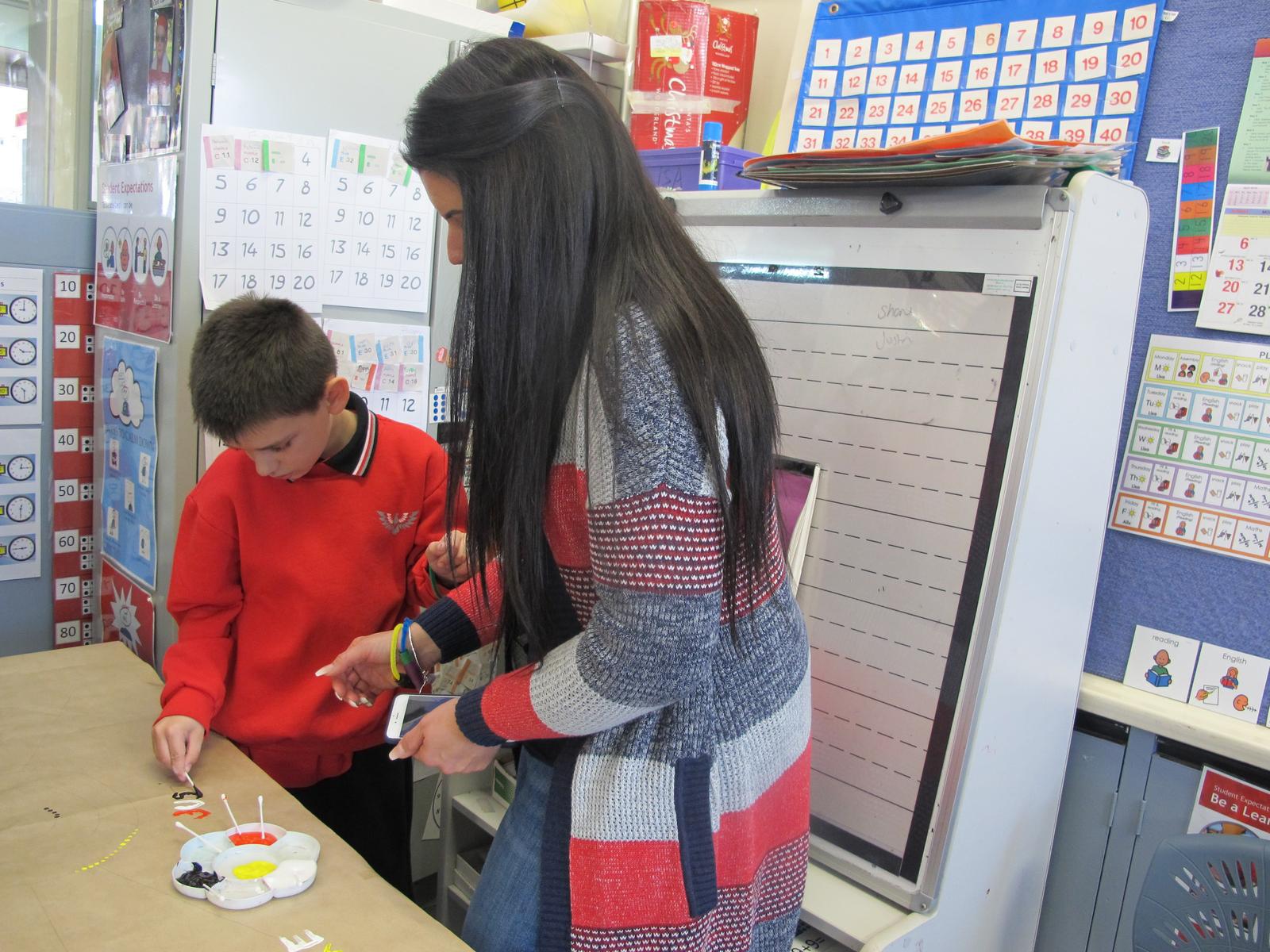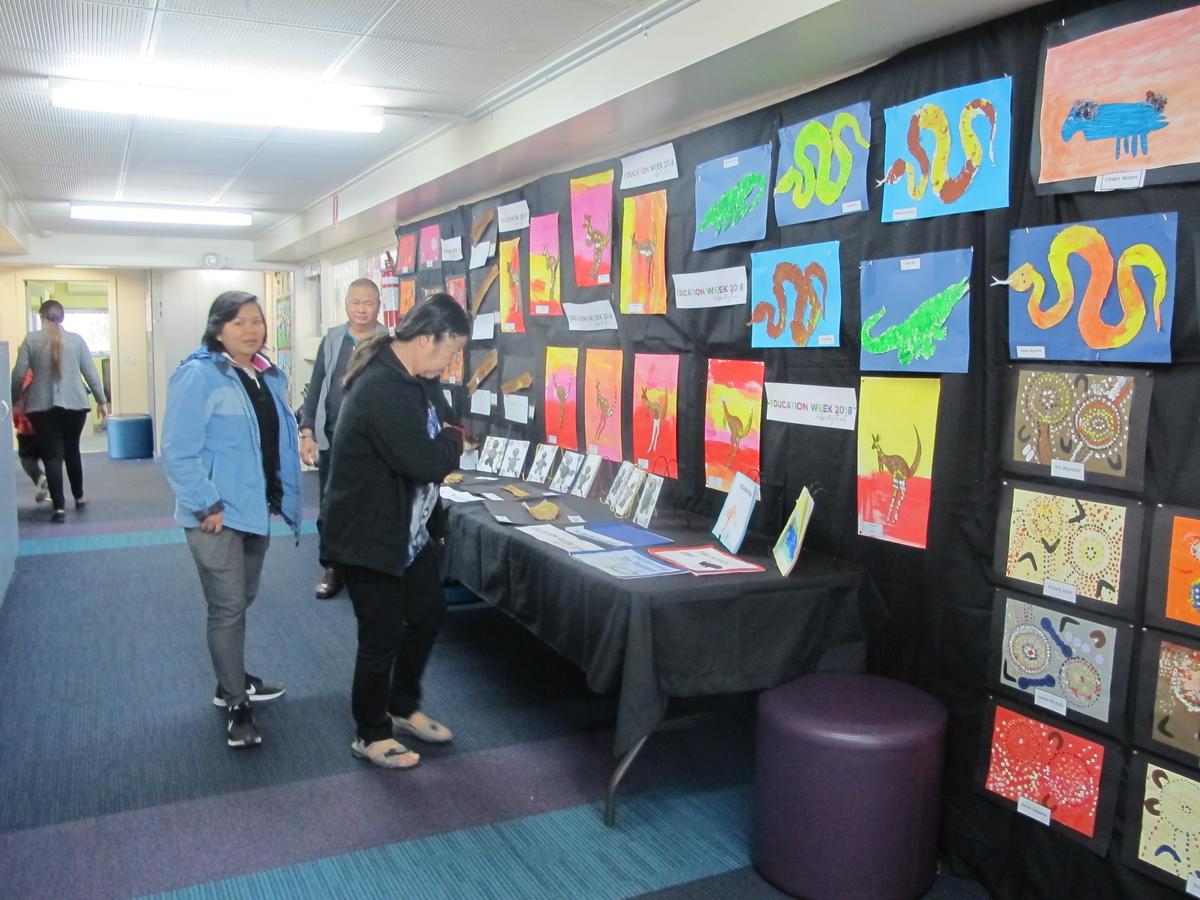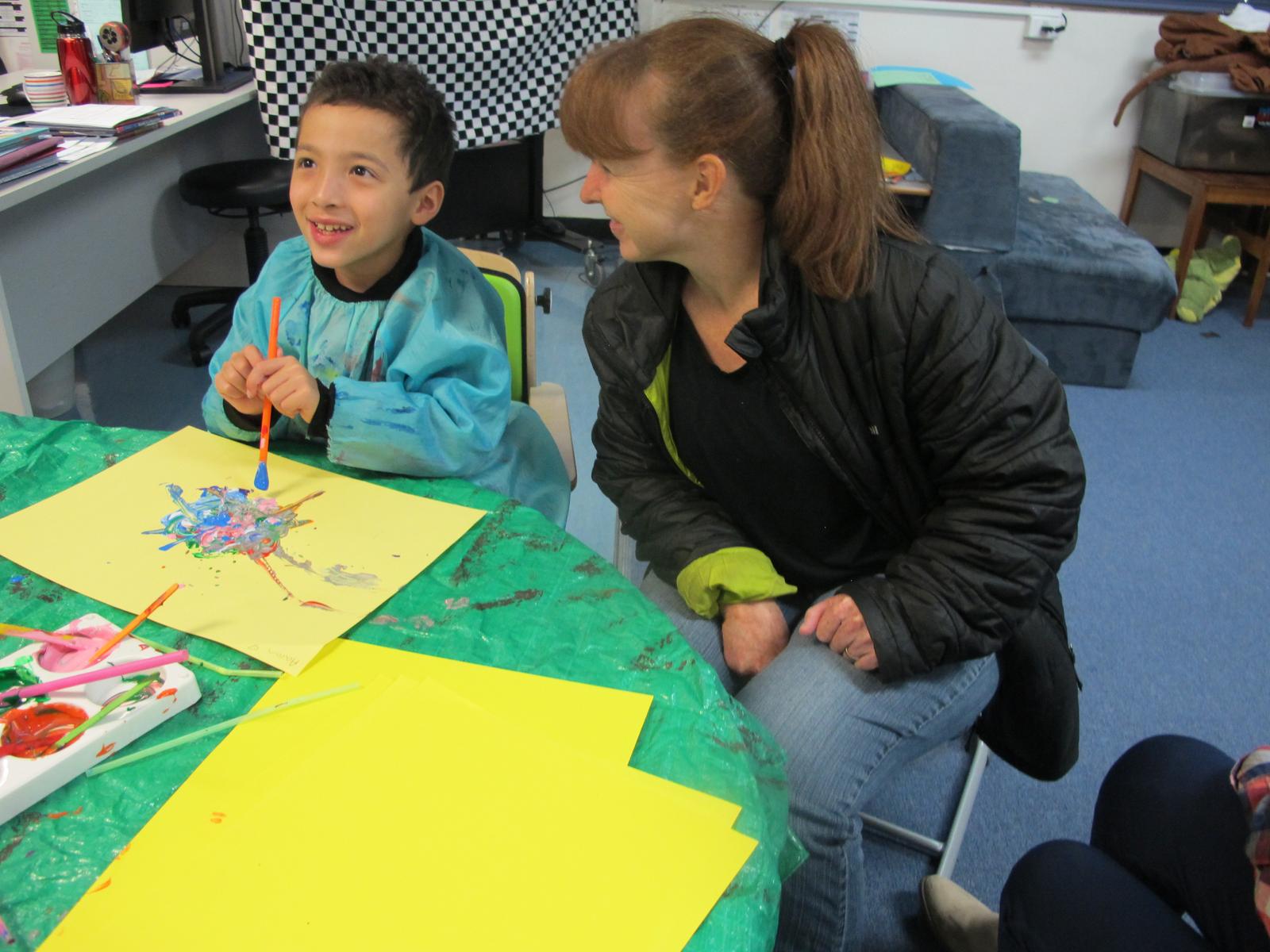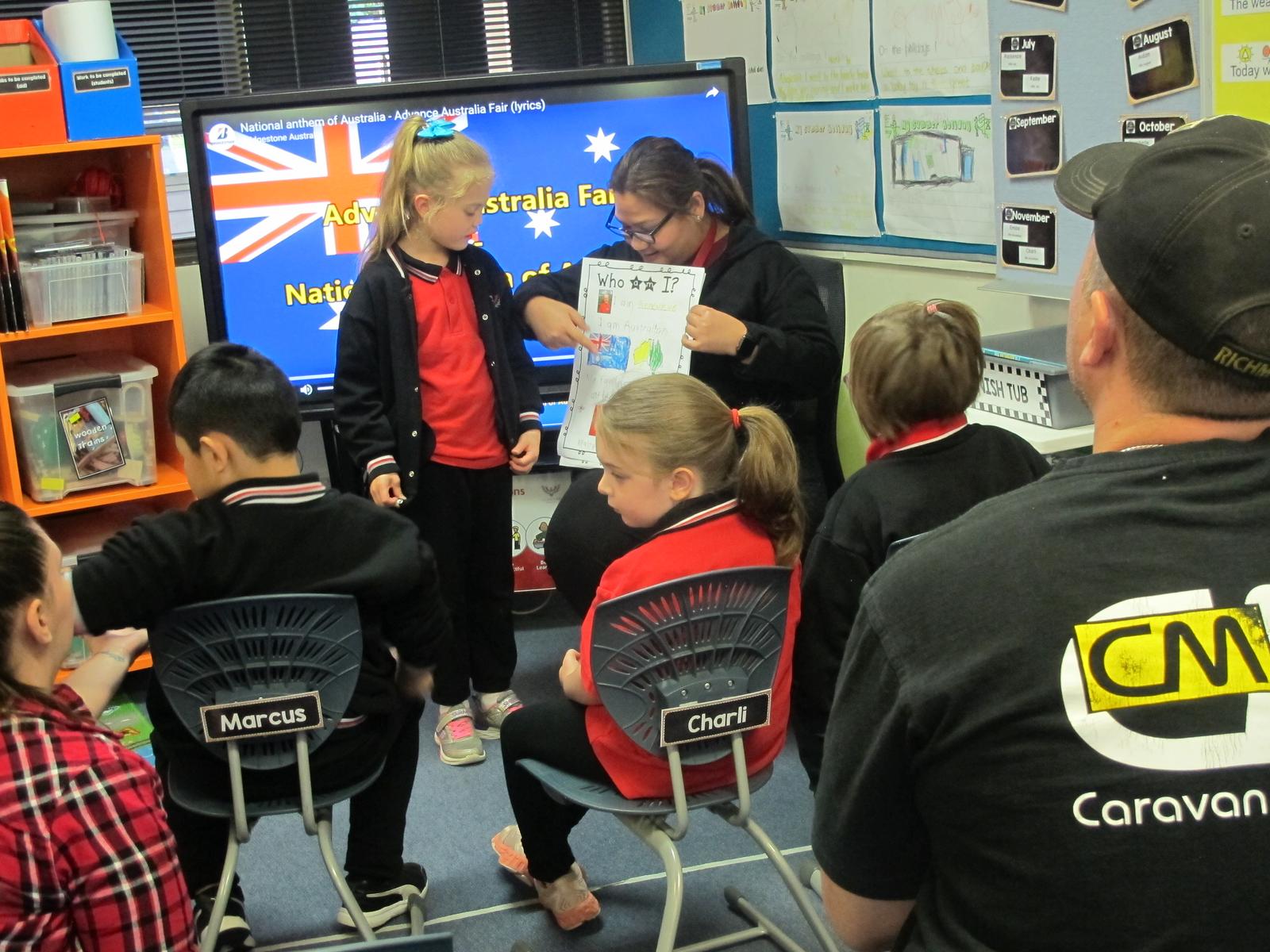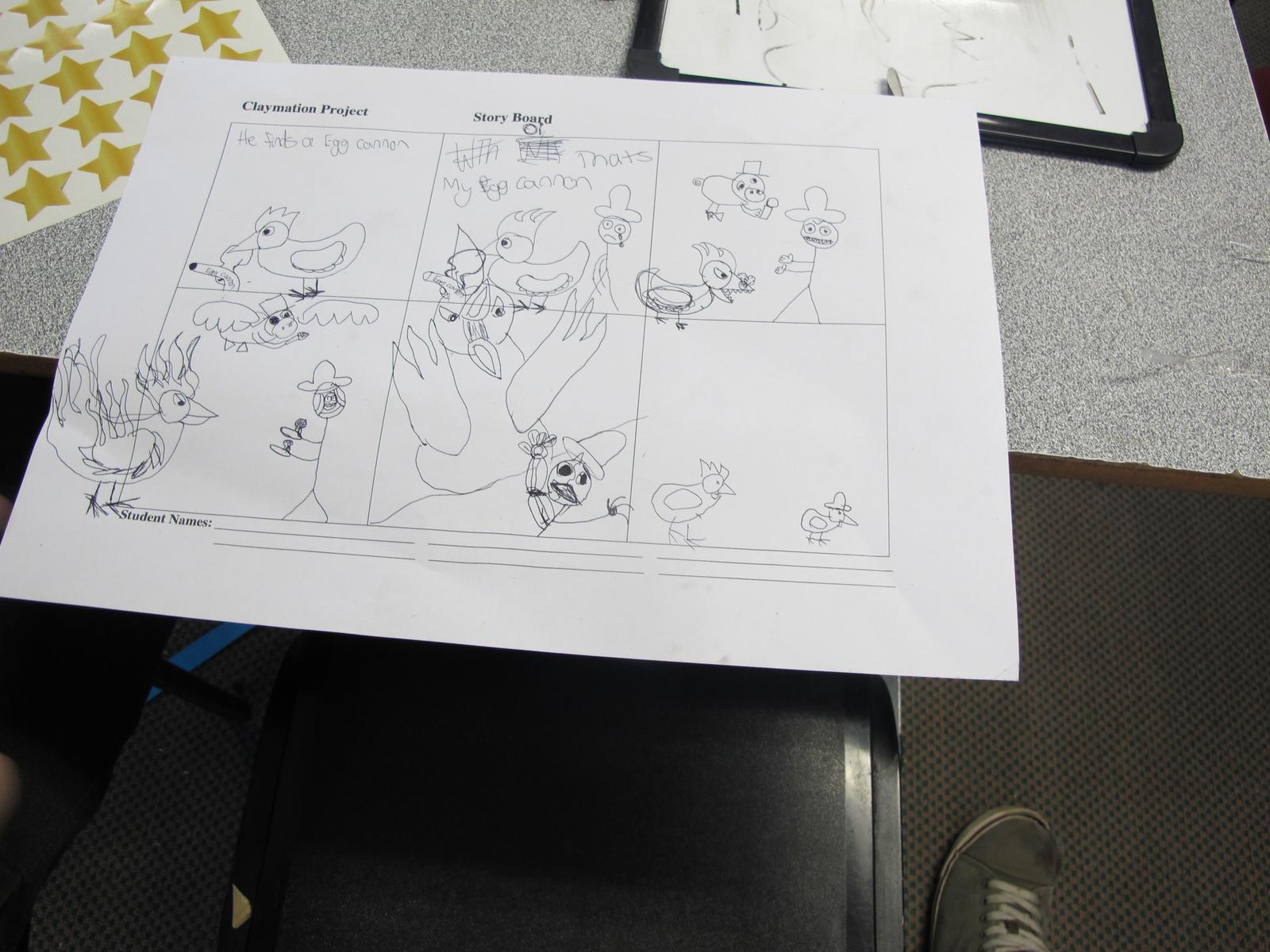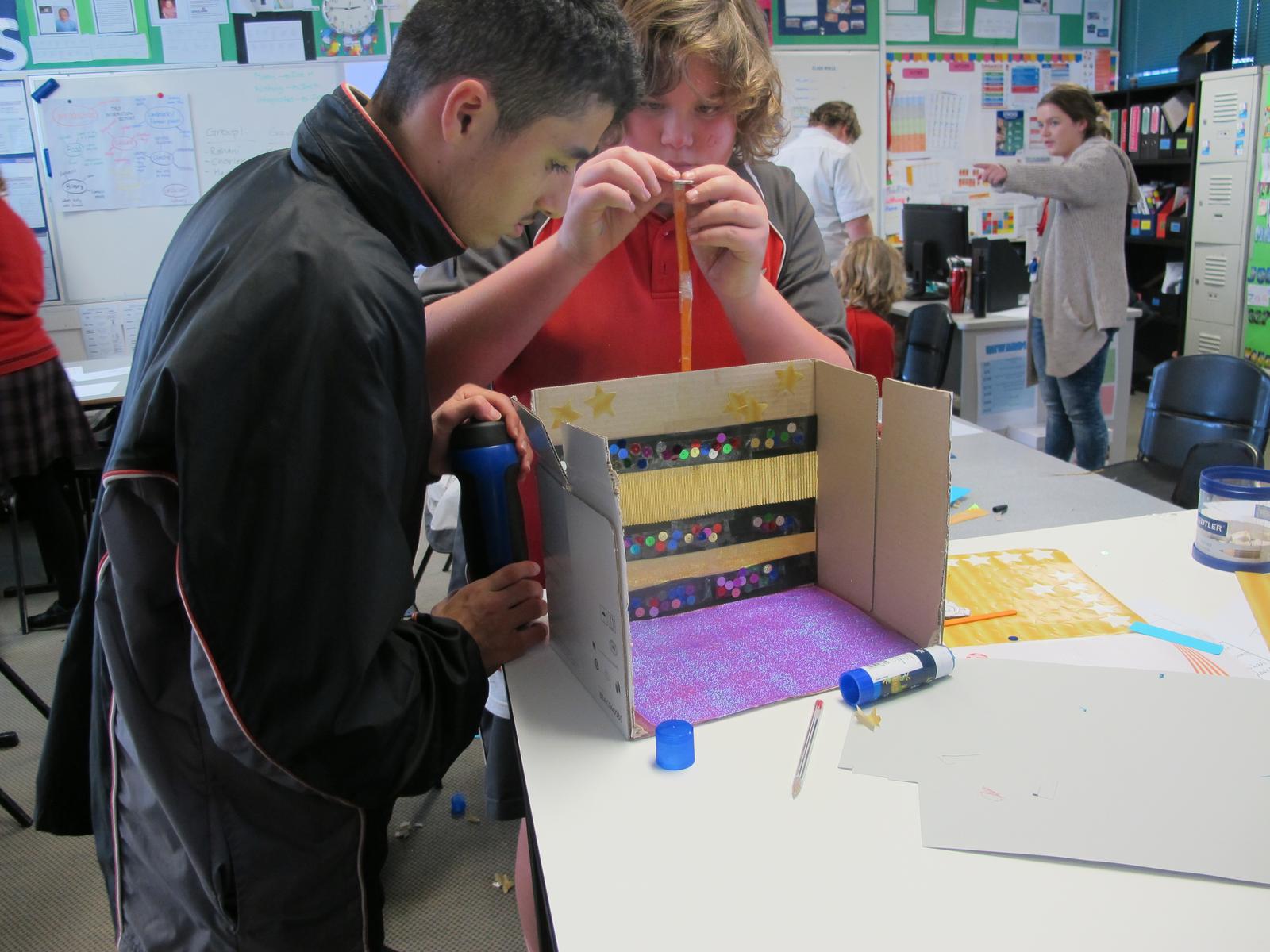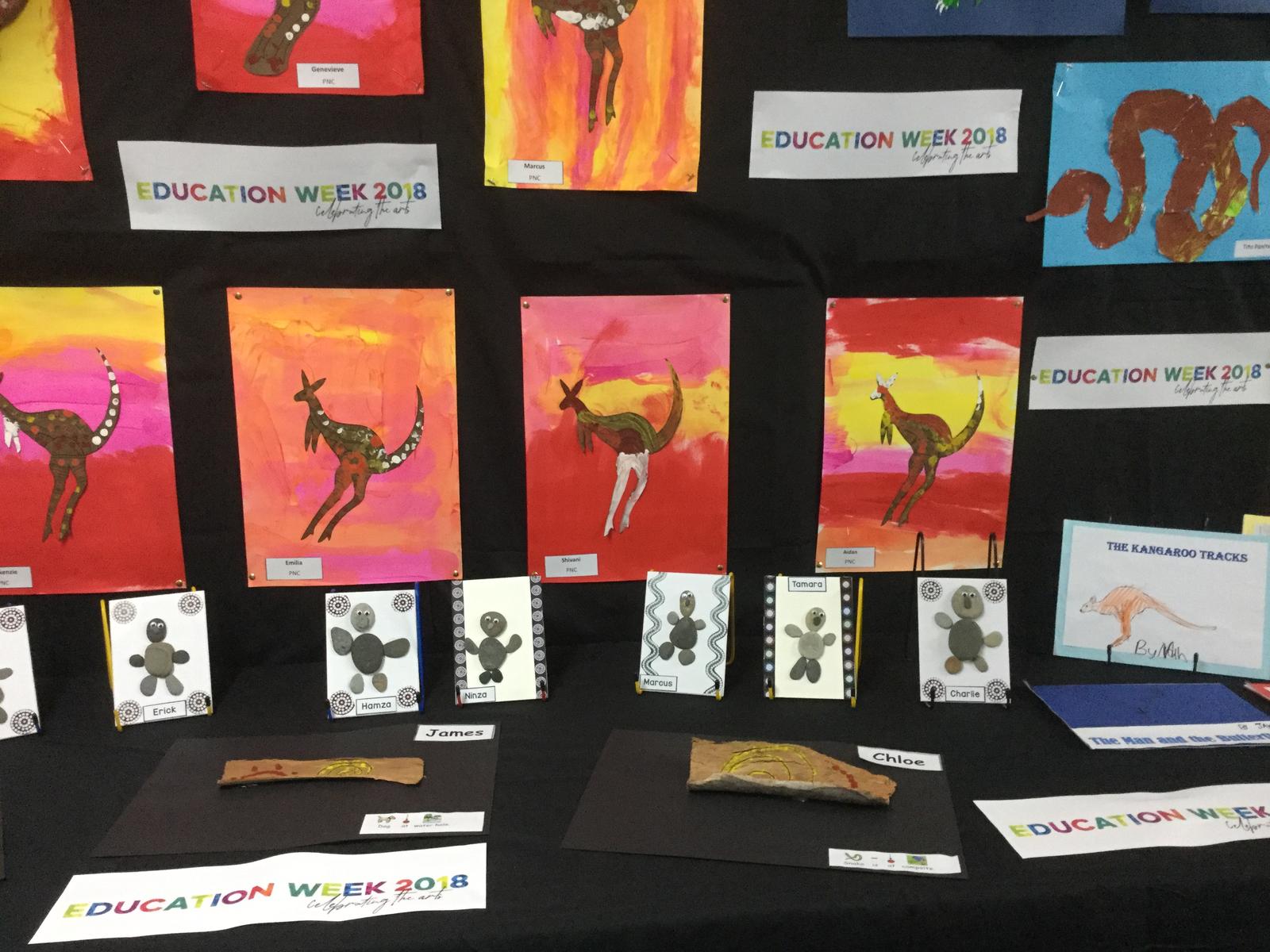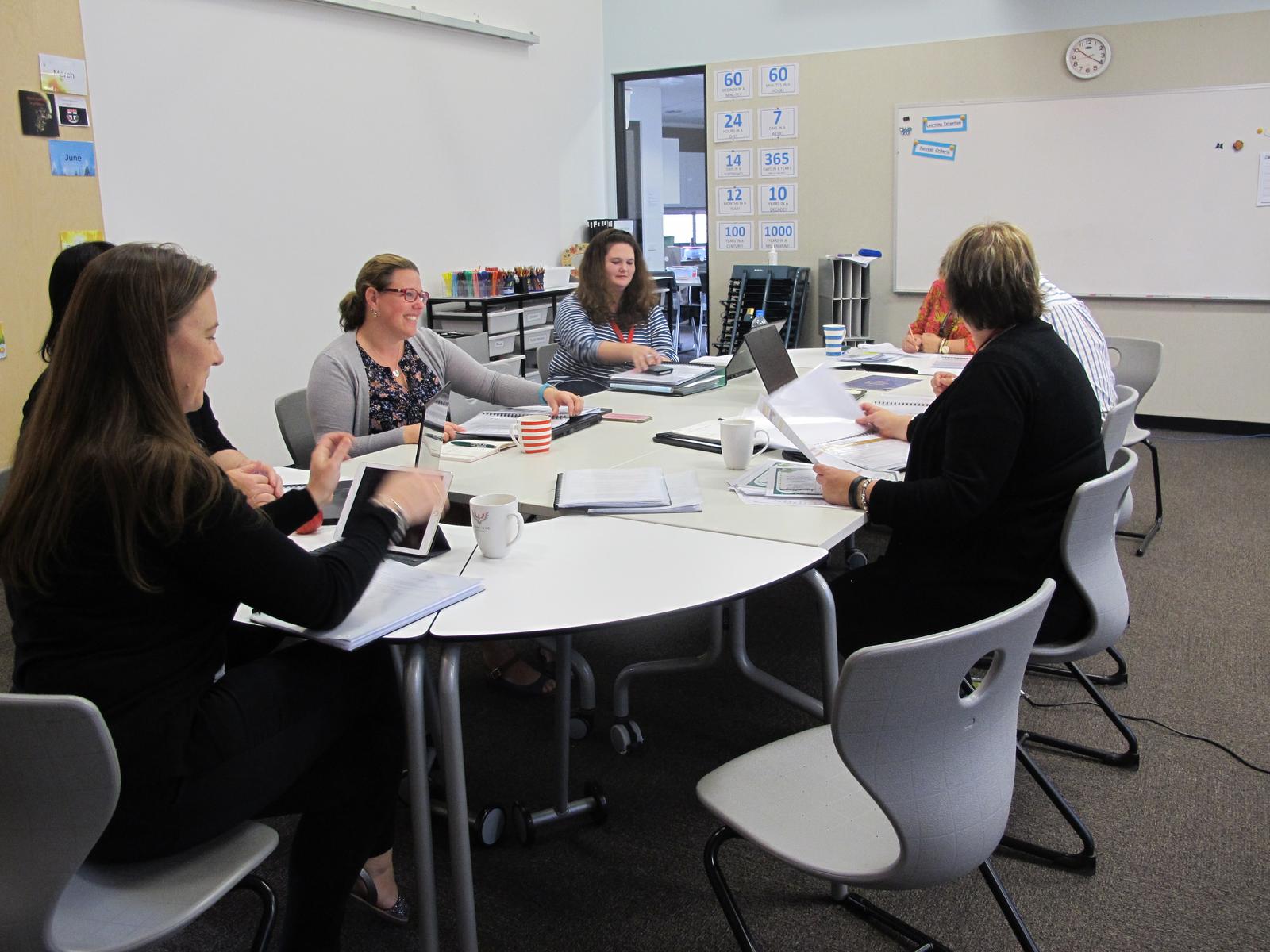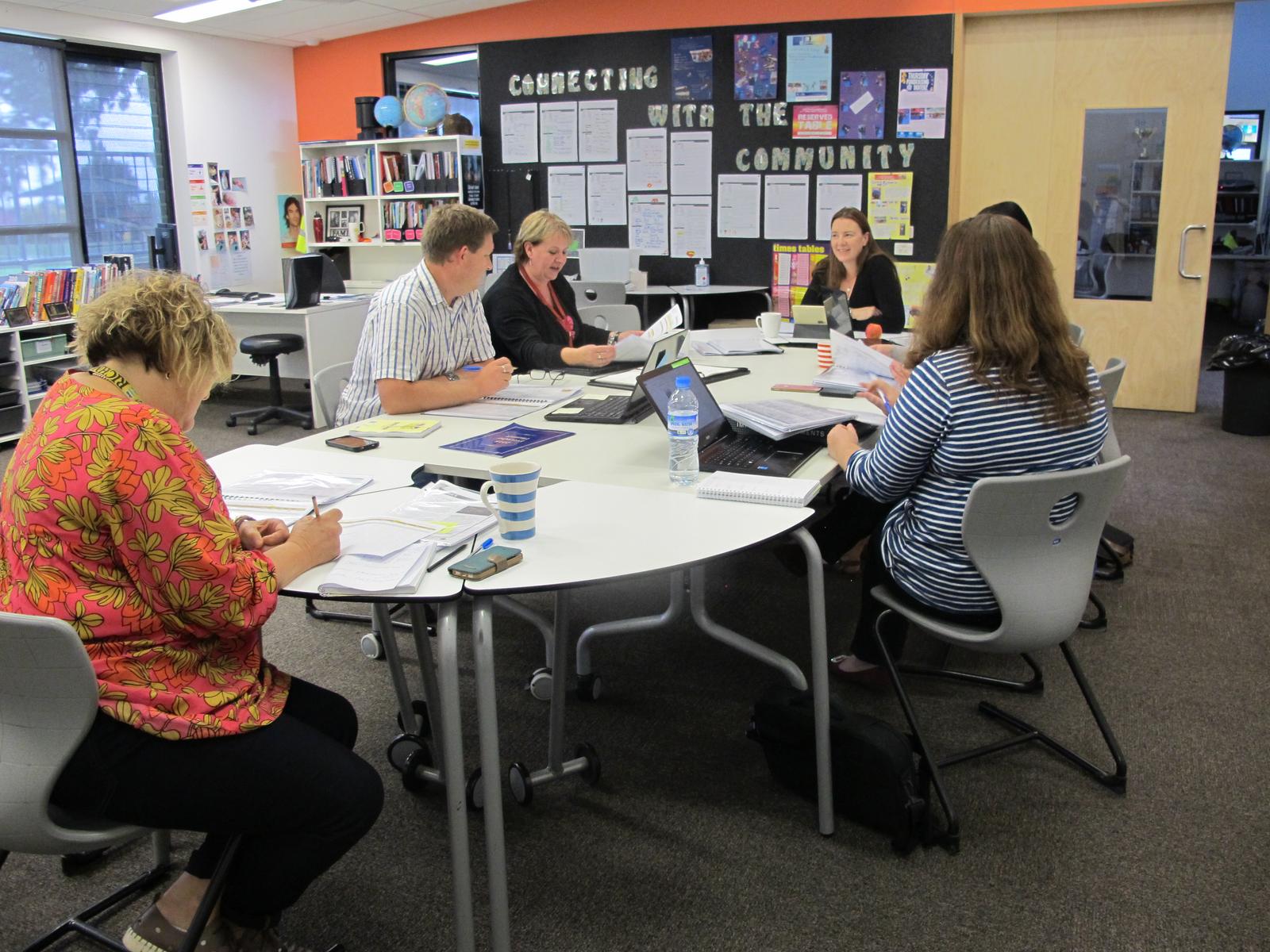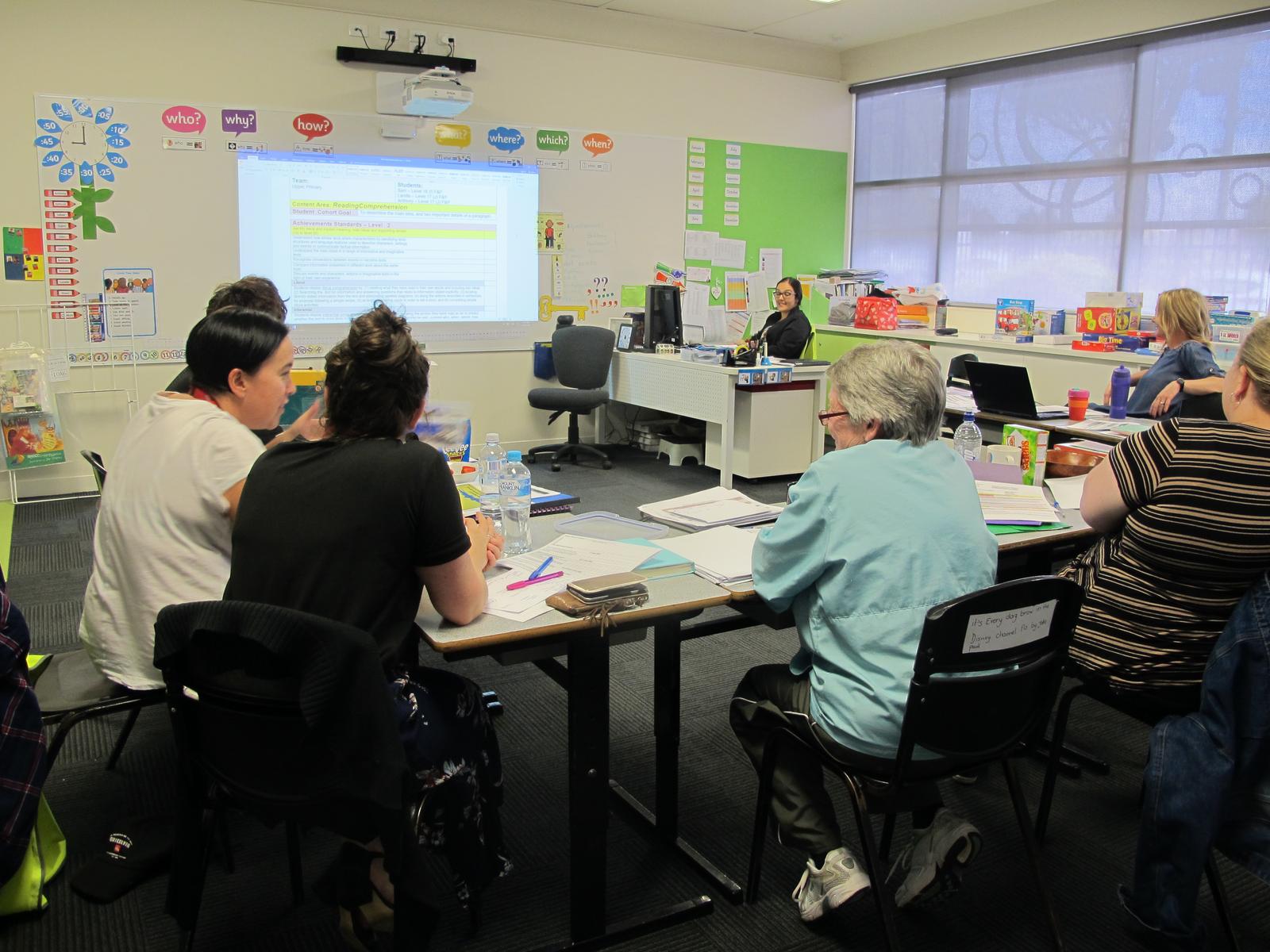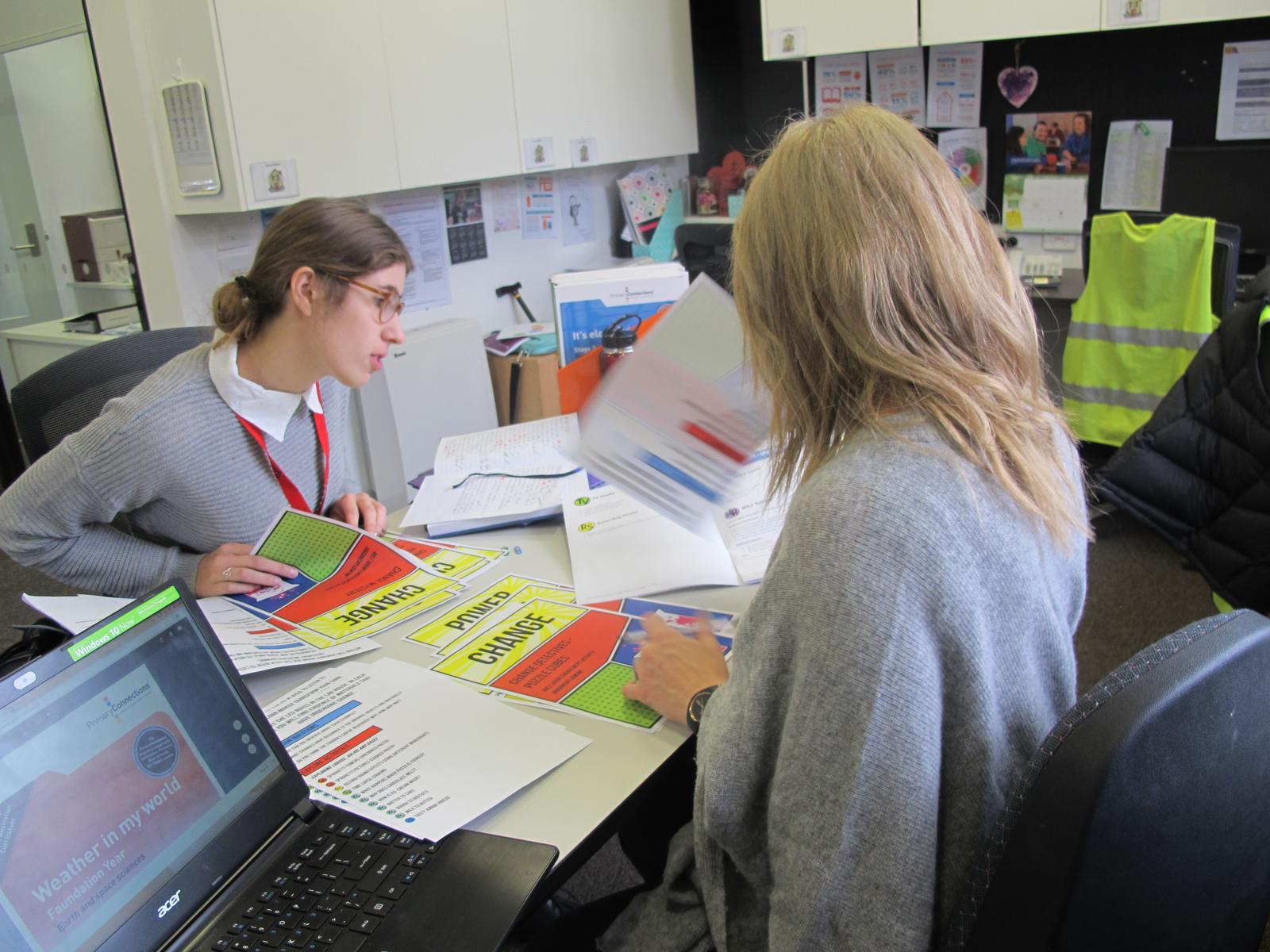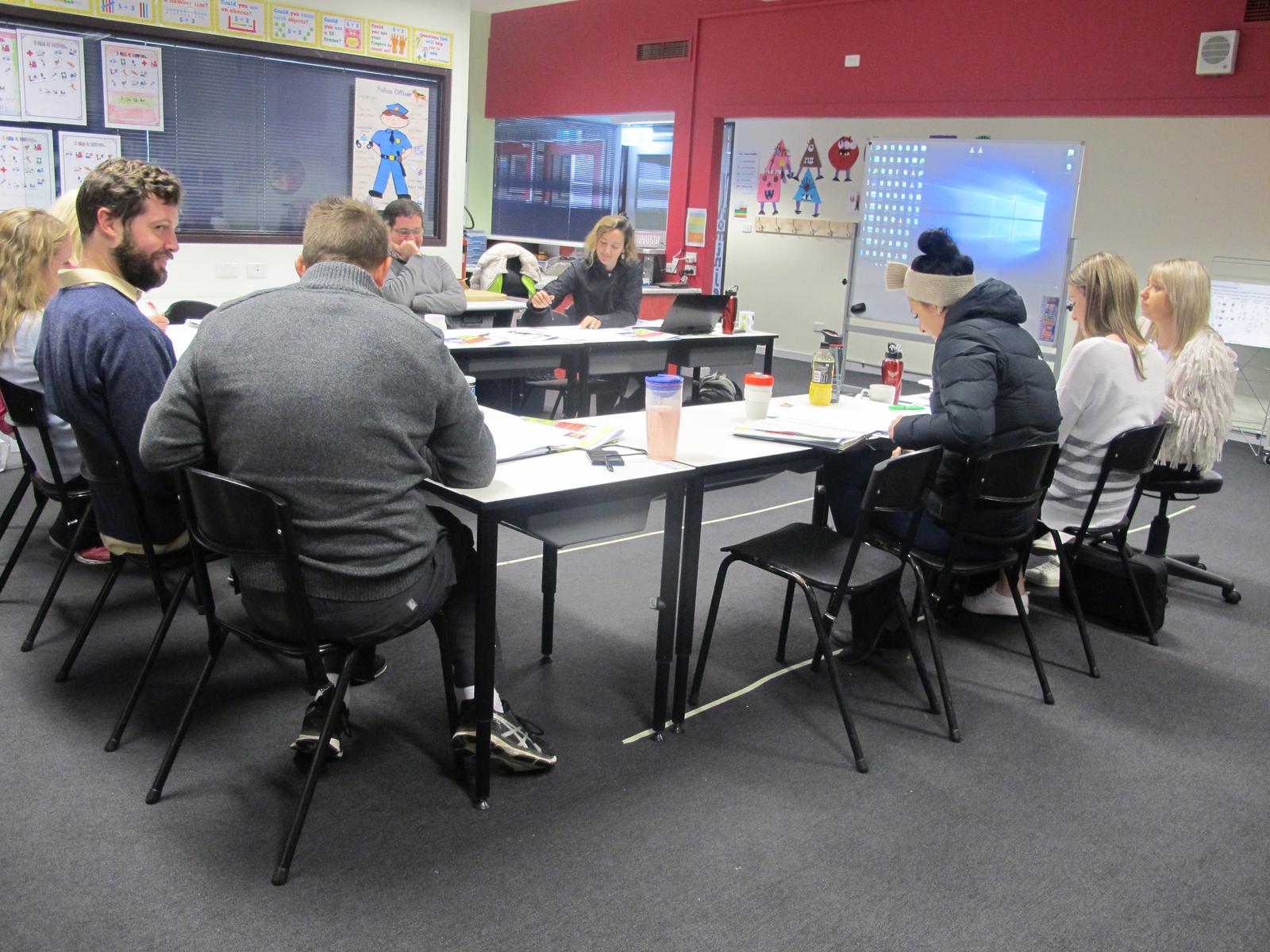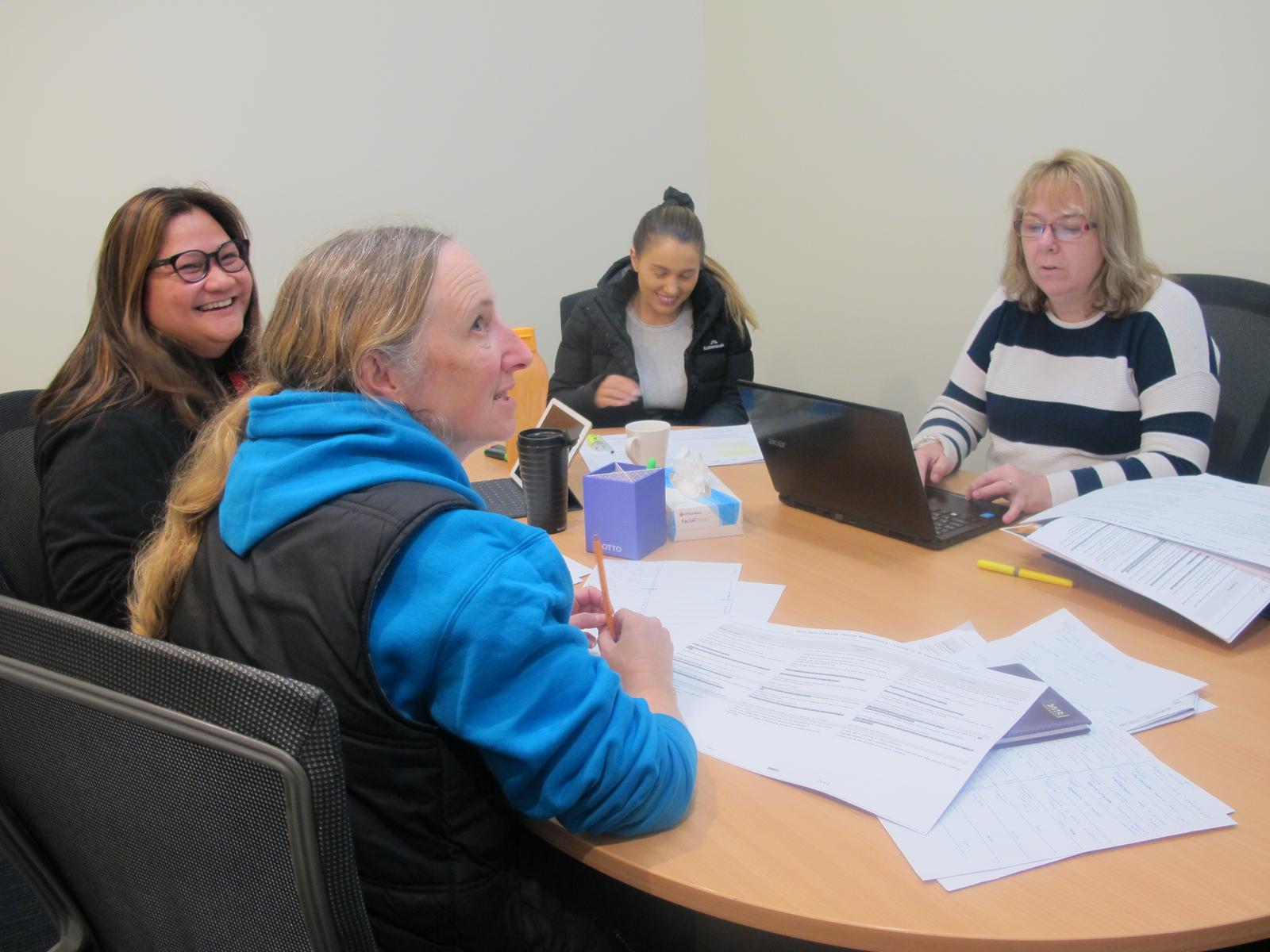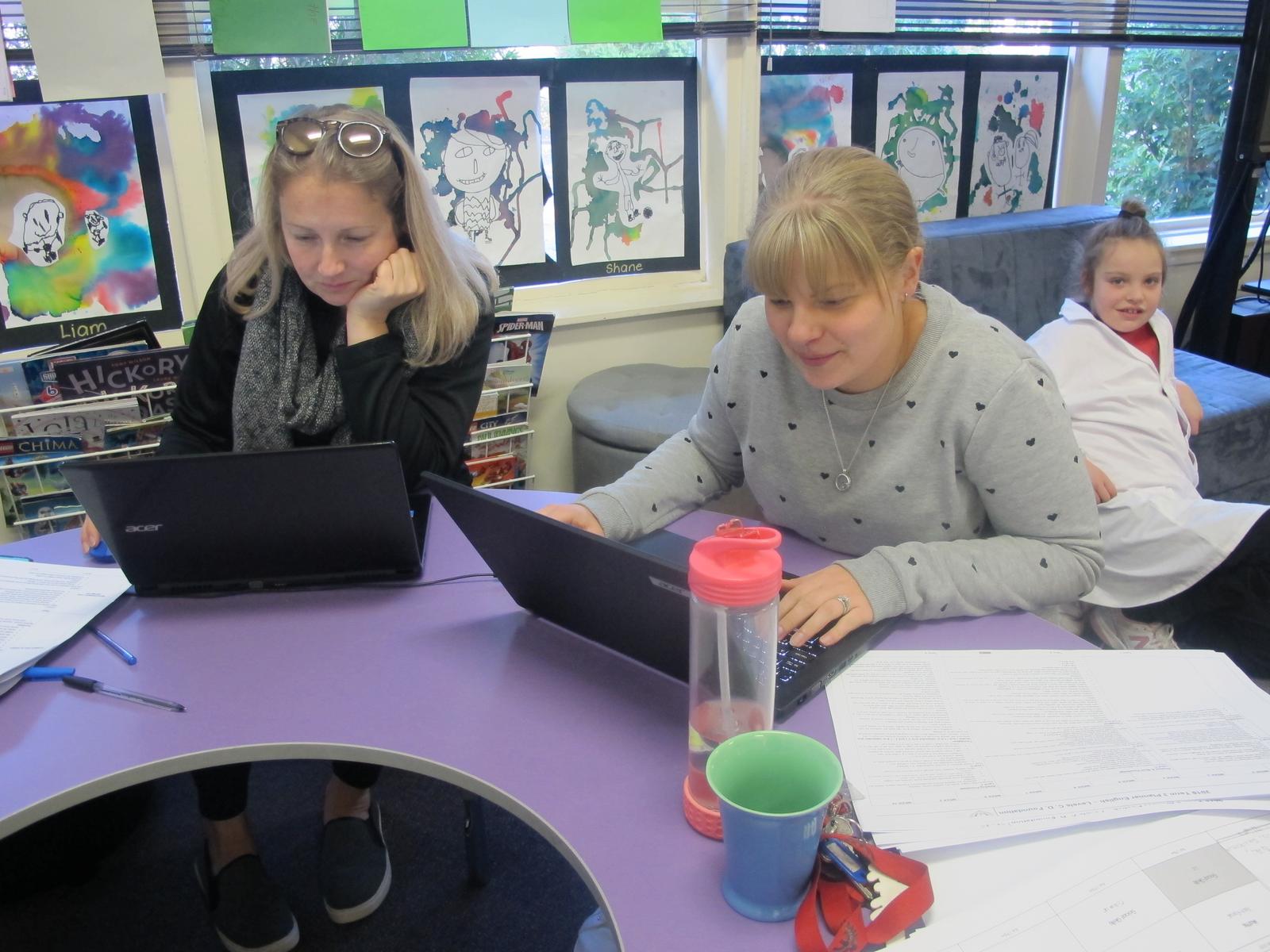Teaching and Learning
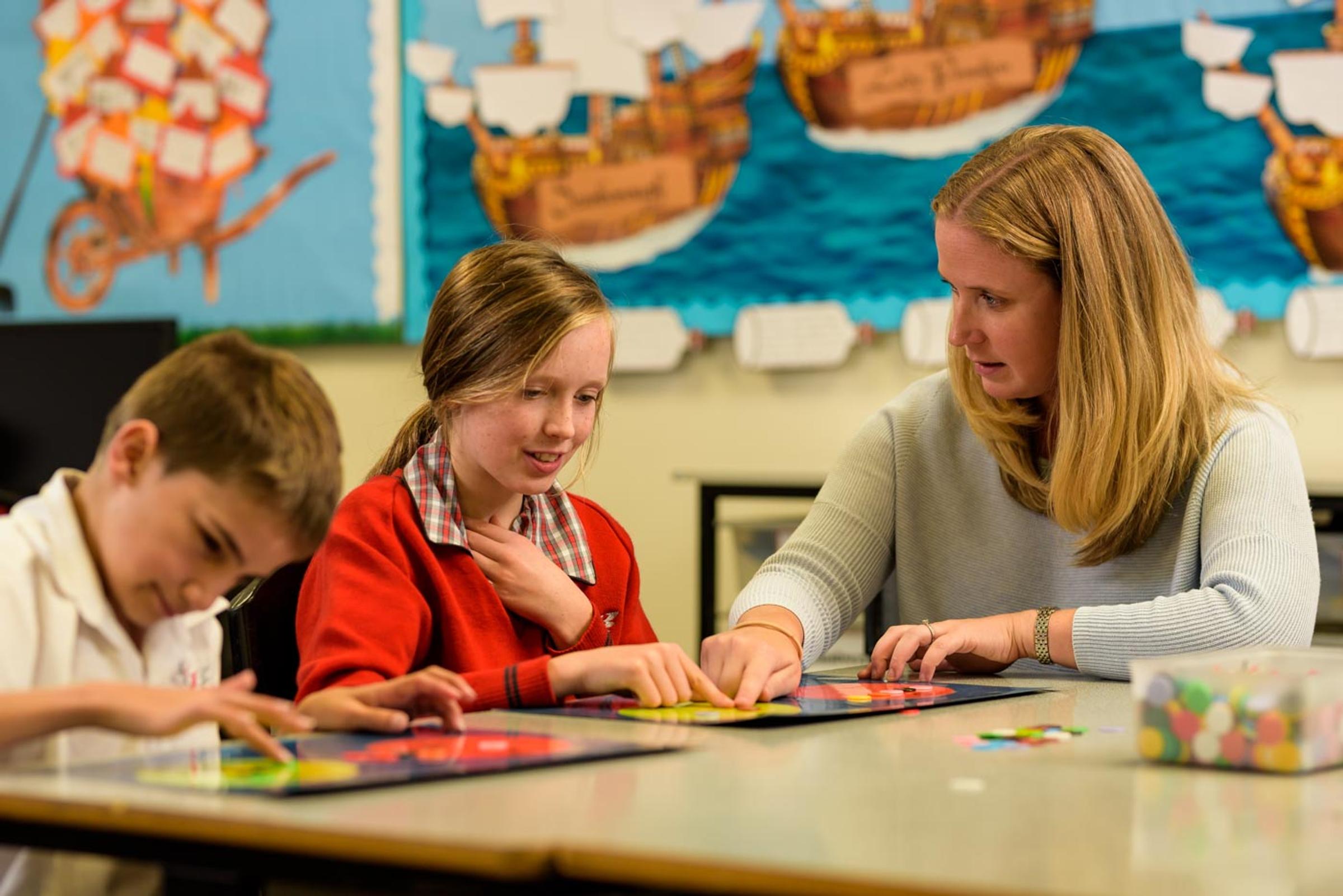
English - Writing
All students are engaged in both reading and writing informational text.
Our Primary students are enjoying writing recounts about familiar experiences. After Education week Lower Primary students shared their experiences by drawing, dictating a sentence or writing their own responses. To assist with the process, students used photos as well as visual information such as pictures, picture words and picture word sentences. Teachers also provided clear orientation prompts using the signal words: first, then, next and finally to guide students’ recounts.
Upper Primary students have discussed a variety of class experiences and selected some to write about. Photo prompts have also been used to generate discussion and build ideas. Classes planned their writing by recording what, where, who, when, why information on posters. Graphic organisers have been introduced to help students’ sequence events.
Secondary students have collected many examples of informative text e.g. newspapers, articles, brochures, posters and online websites. They have described their special features and identified the language used. Teachers have worked with students to compose and construct shared information reports on varied topics. They have introduced supportive planners and acted as scribes to gather facts. Teachers have then modelled how to write an appropriate title, classification, supporting facts and concluding sentence. Many students are now composing and publishing their own information reports on integrated unit or personal interest topics and adding apt visual text.
Secondary 9/10 students have improved their research skills by gathered information on a country of choice. They have practiced taking notes and recording details in dot points. Soon they will use these notes to compose a relevant and engaging information report which includes appealing visual literacy.
PreCAL students have a continuing focus on informative texts till the end of term as they work collaboratively on multimedia projects related to either community safety (Yr. 7/8) or workplace safety (Yr. 9/10).
Year7/8’s have written interview questions for a number of emergency workers, most recently a paramedic, and they have recorded these in-depth interviews.
Year 9/10 PreCal students have toured a number of different workplaces such as Endeavour Industries and Melbourne Polytechnic to see workplaces operating. They asked questions during the visit and focused on identifying the safety aspects seen. Stemming from these experiences students have designed and refined workplace posters and plan to use the slogans they’ve created in an ambitious workplace safety advertisement recorded in the Discovery Centre TV studio.
I’m looking forward to seeing both of these multimedia presentations!
Reading and Viewing
In reading all classes have continued to explore concepts about print. They have looked at a number of different examples of texts and explored the different ways information is presented. In order to increase their awareness of concepts of print students have been engaged in a range of activities, at their point of need.
Activities include:
- What’s my name? Learning task. Students first identified the purpose and use of capital letters for names of people and places. Then they worked with their classmates to spot capital letters at the start of each class member’s name.
- Scavenger Hunt activity, Students explored texts and located features such as: title, contents page, page numbers, index, glossary, diagrams and captions. The students used iPads to take photos of the different elements they found and shared this information within their classmates.
- Fact or Opinion? Students had to decide whether a sentence was a statement of fact or simply somebody’s opinion. Explicit instruction by the teacher, on looking for punctuation and print feature clues, preceded the game. Students were divided into groups of three and were given a role: researcher, writer or reporter. They used an informative text graphic to find facts and describe one of the following topics: Convicts in Australia, Aborigines and Settlers or the Gold Rush. The reporter for each group presented their findings to the class. .
- Shape Poetry- Students have examined some shape poetry, which is written in the shape of the topic of the poem. They nave reflected on the impact this device has on the reader, particularly in terms of visual imagery and emotions.
Over the next few weeks as students develop more fluency with text the concepts of print will broaden to include:
- Text construction (e.g. how headings are used, why text is bold, enlarged and italicised,)
- Different types of text- how they are organised using page numbering, tables of content, alphabetical order of index and glossary, headings and titles, images with text, different types of diagrams.
- Online text tools for navigation (buttons, bars) and further information (links, hyperlinks sitemaps and live connections), screen layouts and scrolling to access digital texts.
Mathematics
Number and Algebra
Across the school students have continued to build their knowledge and skills in the area of subtraction. They have been supported to solve subtraction stories, number sentences and worded problems by using effective materials and strategies.
Activities include:
- Experiencing subtraction through games e.g. 10 pin bowling, frogs on a log
- Using two different coloured counters on a tens frame to represent that a number is made up of parts.
- Using number charts and counting back from the largest number e.g. 12 -3=9 Put 12 in your head and count back 12, 11, 10, 9
- Using number lines to count back and visualise one less than number facts.
- Progressively adding to anchor charts to record subtraction language and strategies
- Peg Plate Take Away– placing a given number of pegs on a plate, taking some away and counting all to find the remainder
- Playdough Smash – making a specific number of objects and ‘squashing’ the ones that are being taken away
- Using open number lines and the jump/hop strategy to solve subtraction problems using
- Manipulating MAB materials to demonstrate multi digit strategies such as the split strategy
Through explicit instruction and with multiple exposures to subtraction problems students will gain confidence with the key concepts that centre on;-
- knowing about less and more
- knowing the biggest number always comes first
- knowing that subtraction means difference
- Partitioning numbers into whole/part/part
Next week teachers will give students a common assessment task in subtraction. This task, along with previous work samples and digital learning evidence will show student progress and assist teachers to evaluate and comment on student learning goals in SLP’s.
Measurement and Geometry
Students have started learning about location.
- In Primary classes the focus has been following directions in everyday situations and locating specific objects to complete a task. Initially simple directional language such as ‘on’, ‘in’ or ‘under’ has been reinforced. As students gain confidence the positional and directional language becomes more complex and includes words such as behind, forward, backward, through, left, right, near and next to. Students have enjoyed using the outdoor spaces. Many classes have listened to and followed directions (over, under, between, around) to complete obstacle courses and have followed directions to navigate around different areas of the school.
- Secondary classes have linked their location learning to the Integrated Curriculum by using maps of Australia to locate capital cities, states and territories. They have identified the four compass points and used their knowledge to describe the eastern states or the most southern Australian landmass. Secondary 9/10’s have examined world maps to locate the various countries they are exploring and are starting to use their compass skills to describe a country’s geographic features.
- Next week the PreCAL classes will use a map of the school to create and follow a pathway. They will learn about grid lines on a map and practice finding co-ordinates to locate a school yard feature.
- Most students in the school will be taught how to interpret simple maps of familiar locations and identify the relative positions of key features. Later in the term, more proficient students will design a map. They will learn to accurately describe position and pathways and interpret more complex maps that include compass points, co-ordinates, legends and map scales
Integrated Curriculum
Across the school, engagement in the Community integrated unit continues to deepen students’ knowledge and skills about our Australian heritage and cultural diversity.
With a focus on ‘Stories of the Past’, Lower Primary students have explored the cultural backgrounds and the different traditions and stories that are told within their own families. They have made flags and prepared and tasted different foods from Indian and Vietnamese cultures. Their multicultural focus intensifies throughout the term. Students will attend a dance workshop featuring the traditional Chinese dragon or lion heads, which is used to tell traditional Chinese stories. Inspired by the Chinese performance and stories students will create an exciting dance performance themselves. Also to introduce students to West African culture through music, dance and storytelling, African Drumming is scheduled later in the term.
Apart from their First Fleet investigations Upper Primary classes, have been learning about bees and honey. They have explored their life cycle and how important they are in food production. Students have taste tested honey and will make products out of beeswax late this term. Recently the Practical Beekeeper from Ceres came to Upper Primary so students could observe live bees and find out more about their fascinating lives.
Secondary 7/8 have Gold Rush Fever! They have immersed themselves in all things GOLD. Not only have they viewed informative videos they have researched life on the goldfields using factual text both online and in books and articles. They have honed their research skills by learning to ask relevant questions, taking notes and using graphic organisers to help sort the main details. Perhaps the most engaging activity has been trialling the interactive game ‘Can you strike it rich during the Gold Rush?’ Stemming from this game students have discussed and debated the experiences of thousands of people and reflected on the impact of the Gold Rush on Australian social, economic and political development.
Secondary 9/10 classes have personalised their immigration learning pathways this term by encouraging students to guide the final investigations on their Immigration integrated unit. Each classroom is taking a different spin on this topic. Some classes are exploring the cultural diversity at the Queen Victoria Market. At least three classes are investigating the market heritage trail and plan to enjoy an Italian themed lunch at La Porchetta. Students have really enjoyed taking responsibility for their learning and deciding how they wanted to deepen their knowledge of Immigration.
Social Competencies
Across the school, from week’s six to ten, the content focus is relationships and sexuality. Social Competencies teachers are using a range of recognised resources including Family Planning Victoria and the Catching on Early kits to provide students with information that is age appropriate, factual and safe. These resources are linked with the Victorian Curriculum and are available online if you’d like to have a look.
Lower Primary students have been identifying those parts of the body that are ‘private’ and indicating the contexts in which body parts should be kept private. Students are enjoying activities using the anatomical dolls, bingo games, games and songs and worksheets involving cut and paste to cover up the private body parts with overlays.
Upper Primary students are naming and describing how their bodies are growing and changing. They are identifying and labelling private parts of the body and understanding the contexts in which body parts should be kept private. Last week they considered the differences between male and female bodies. The book ‘Everybody’s got a Bottom’ was read so students’ could determine the similarities we share. They identified different body parts and whether they belonged to a girl, boy or both. Anatomical dolls were used to show different body parts. This week they discussed how wearing clothes in public helps to keep us safe by covering our private parts. They also recognised that some cultures consider different body parts private.
The key sexuality learning for Secondary 7/8 students is describing the physical and social changes that occur as they grow older, particularly as they reach puberty. They will also explore ways to manage these changes and discuss tasks they are allowed to do by themselves and explain how these have changed since they were younger. Last week they investigated the meaning of puberty by reading sections of the books ‘Puberty and Special Girls’ and ‘Special boys’ business’. They discussed and recorded the information presented, focusing on physical and emotional changes. Students completed a classifying task by sorting puberty picture cards under the headings ‘Males, ‘Females’ and ‘Both’ and explained their choice and reasoning. Teachers provided additional hygiene information, where appropriate.
Secondary 9/12 are focusing more on exploring strategies to manage physical, social and emotional change. They will consider how friendships change as they grow older and investigate different levels of a personal relationship and the steps associated with taking a relationship to the next level. Last week they reflected on romantic relationships, particularly what to do if they think they like someone. They also examined the qualities in a romantic relationship that make it positive. They watched videos and read through potential relationship scenarios and discussed if they were respectful and healthy or not respectful and unhealthy. This week the classes examined the stages in relationships from meeting, friendship, close friendship, boyfriend/girlfriend and partner. They identified the steps in a romantic relationship and stressed that it develops over time. They used a think chart to visualise what the stages of the relationship might look like. They briefly considered how relationships can break down and how that impacts on the levels or stages of friendship.
SPECIALIST TEACHING AND LEARNING SNAPSHOT
HEALTH AND PHYSICAL EDUCATION
Primary students have one 50 minute Physical Education (PE) session per week and over the school year, Secondary students have PE as an elective option. Secondary students also engage in regular Challenge or Fit for Life programs and further electives such as Outdoor Education that involve active physical movement. Suzanne Bates and Chris Varella energetically teach the Primary PE program whilst Karenne Tattersall actively teaches the Secondary PE program. Sportsmanship underpins all the PE classes. They also learn the importance of playing safely, co-operating and working within the rules. These concepts are continually discussed and reinforced during P.E. sessions. It is great to observe students having fun, celebrating their personal or team successes and making improvements with their skills.
Across the Primary and Secondary 7/8 sections there is a strong focus on Fundamental Motor Skills, particularly ball-handling and minor games.
In Lower Primary, the students participate in a variety of movement experiences to assist with ball-handling, throwing, body and spatial awareness and locomotor and gymnastic skills. They engage in simple games to elicit participation, co-operation and social skills, turn-taking and physical activity. They will perform Fundamental Motor Skills and be encouraged to solve movement challenges.
To improve their motor skills and fitness, students in Upper Primary participate in a range of physical activities and game play. These activities take place individually, with a partner and in a team situation. The students demonstrate movement patterns and co-ordination showing control, body awareness and agility. They learn to apply these skills effectively in minor games.
Secondary 7/8’s enjoy minor game play of Tee Ball, Rapid Fire Cricket and Tee Cricket each week. All Secondary students also participate in the A.F.E.A. Awards; these annual fitness tests identify strengths and weaknesses in individual fitness and students enjoy improving each year. This term the students will challenge their previous fitness test results through the A.F.E. Award tests of the Beep, Curl up and timed runs. Pedometer tests and Skill circuits finish the term.
Secondary 9/10 students who have participated in the PE elective program are learning the importance of maintaining a healthy lifestyle. Working individually and in pairs, performing activities that will assist in lifelong fitness they are learning how to take responsibility for their own individual wellbeing. Students have learnt how to use and identify safe and suitable fitness equipment as they have engaged in weekly fitness circuits. The circuit like training program is effective as the students work at their own pace and set individual targets each week. Students at this level assess their own improvement as they monitor their Functional Aerobic Capacity. So far, this is proving to be a great motivator for student fitness and body awareness.
TEACHER PROFESSIONAL LEARNING
Education Week: Teaching and Learning highlights
I was fortunate to observe most of the Education Week activities staged across the school in week 6. The theme ‘Celebrating the arts’ inspired a variety of events that attracted parent and carer interest and participation. Student engagement in the arts helps improve educational outcomes by enhancing motivation, imagination, and confidence. Our students were delighted to have visitors in their rooms and learning spaces. Lower Primary students especially loved working on their art works with their parents. Check out the images I captured throughout the week, everywhere I went I saw happy smiling faces, engaged students and students co-operating and collaborating on tasks. Creative work was proudly displayed in corridors and classrooms. This both reflects and reinforces a stimulating learning environment. Events like this enhance our students’ learning journey and encourage our parent community connections.
Some teaching and learning highlights were:-
The Lower Primary open morning. There was a range of enjoyable hands-on activities which gave students and parents the opportunity to creatively explore things together. Over thirty-five parents or carers visited the classrooms. Many classes listened to an entertaining story and made things related to the story e.g. very colourful bumble bees in PLB, brown bear crafts in the Prep classes, kangaroo dot paintings in PJL and blow painted monsters in PKD. PNC talked about the cultural identity of the families within the class. Students then completed an Australian flag with their parents and shared their learning with the class. African culture was the theme for PLW, PHT & PKW and together students and parents made some attractive bead bracelets.
The artwork display in the Lower Primary main corridor. I caught many proud students showing their parents their Dream time stories, paintings or rock art.
The art gallery display and open afternoon in Upper Primary. Many students encouraged their parents to view and participate in creating their compelling art work, featuring mixed themes and media. Apart from the impressive sketches of sailing boats, there were self-portraits, crayon and paint geometric designs of objects and cats. There were also gold painted clay’ message tokens’ to attract all our visitors.
Hairspray Spectacular Rehearsals and corridor Writing Displays in Secondary 7/8. On Friday May 25th, a few parents enjoyed viewing students perform their creative dance routines and movements to songs from Hairspray. Laura, our creative choreographer, was busy leading rehearsals in all eight classes. Students with acting roles were developing more confidence as Vera Mitchell took them through their paces in the afternoon. The excitement and enthusiasm is mounting as students gain more skill and confidence with their class performances. This year’s Spectacular performance will certainly be worth waiting for!
STEAM programs in Secondary 9/10 in the Discovery Centre and classrooms. Amongst other programs, the hugely popular Special Effects and Robotics and Coding programs were showcased on Friday 25th May. Special Effects students were collaboratively engaged in various aspects of multi-media production in the TV studio and kitchen work space. Some students were assisting others with producing their special effects posters, by sourcing costumes, making props, applying make-up or creating wounds, scars or wrinkles. Other students were assisting with behind the scenes tasks such as filming, adjusting lighting or sound, editing posters using Photoshop and taking photos. Meanwhile in the study zone, the coding team were busy using computers and Dot and Dash robots. They were working together to refine their coding sequences and getting robots to complete tricky movements through mazes or other student invented challenges. Parents visiting the centre enjoyed seeing engaged students teaming up to learn a new skill that stretched their comfort zone and motivated them to collaborate as they solved tasks.
VCAL Extreme Teams- Last Tuesday 22nd May Secondary 11/12 students moved smartly into six mixed groups to participate in Extreme Teams. Parents observed how these teams worked together on a design challenge aimed to develop and practice many employability skills (particularly communication, team work, problem solving, planning and organisations, learning skills and self-management). Students worked collaboratively to come up with 4 unique designs and written concepts linked to the Dumb Ways To Die safety campaign. Bronwyn and I were so impressed with the quality of the team’s solutions and performance that all teams were deemed the winner! The trophy was awarded to all students and as a reward they had an out of uniform day the following week.
A special thank you to the parents who joined in the celebrations and to the teams, teachers, leaders and support staff that made this such a worthwhile learning experience. Education Week gave students an opportunity to share their learning and experiences with their families. This was a chance to display the exemplary teaching and learning that occurs in all sections of the school.
TEACHERS PLANNING FOR LEARNING
Planning Week this term kicks off on Monday June 4th. During this week students have one day when their class teacher jointly plans with their team and the students have specialist instruction.
At Concord School we work hard to build effective teamwork and improve practice excellence. Each term sections are allocated a shared learning day, towards the end of term, to audit the terms’ teaching and learning and plan for the next terms’ curriculum.
On planning day teams reflect on student progress as they examine, plan and organize the new terms’ curriculum content. Teams take collective responsibility for student growth. They sequence the learning opportunities to scaffold student understanding and build student confidence and engagement. Using consistent curriculum planners, teams support each other to document their planning programs and strategies for all areas of the curriculum. Throughout next term, teachers will use the common planning documents to develop more detailed and differentiated weekly programs. Each week teams will use a common research based planner (i.e. reflecting the Concord Lesson Model) to collaboratively elaborate on high impact strategies and activities to meet the students’ point of need.
During planning days leaders often further build their team’s curriculum content knowledge by sourcing and workshopping relevant best practice curriculum research and materials. This term, leaders are continuing to support classroom teachers’ knowledge of reading comprehension and decoding strategies. They are using cutting edge strategies to analyse student reading behaviours and applying effective guided reading prompts to expand student decoding and meaning making capabilities.
Helen Edmonds
Acting Assistant Principal
